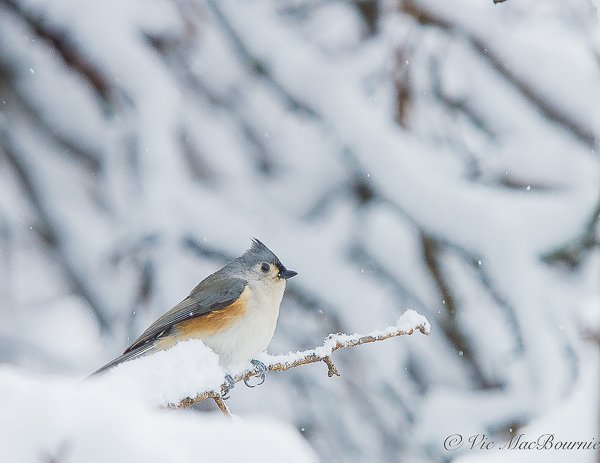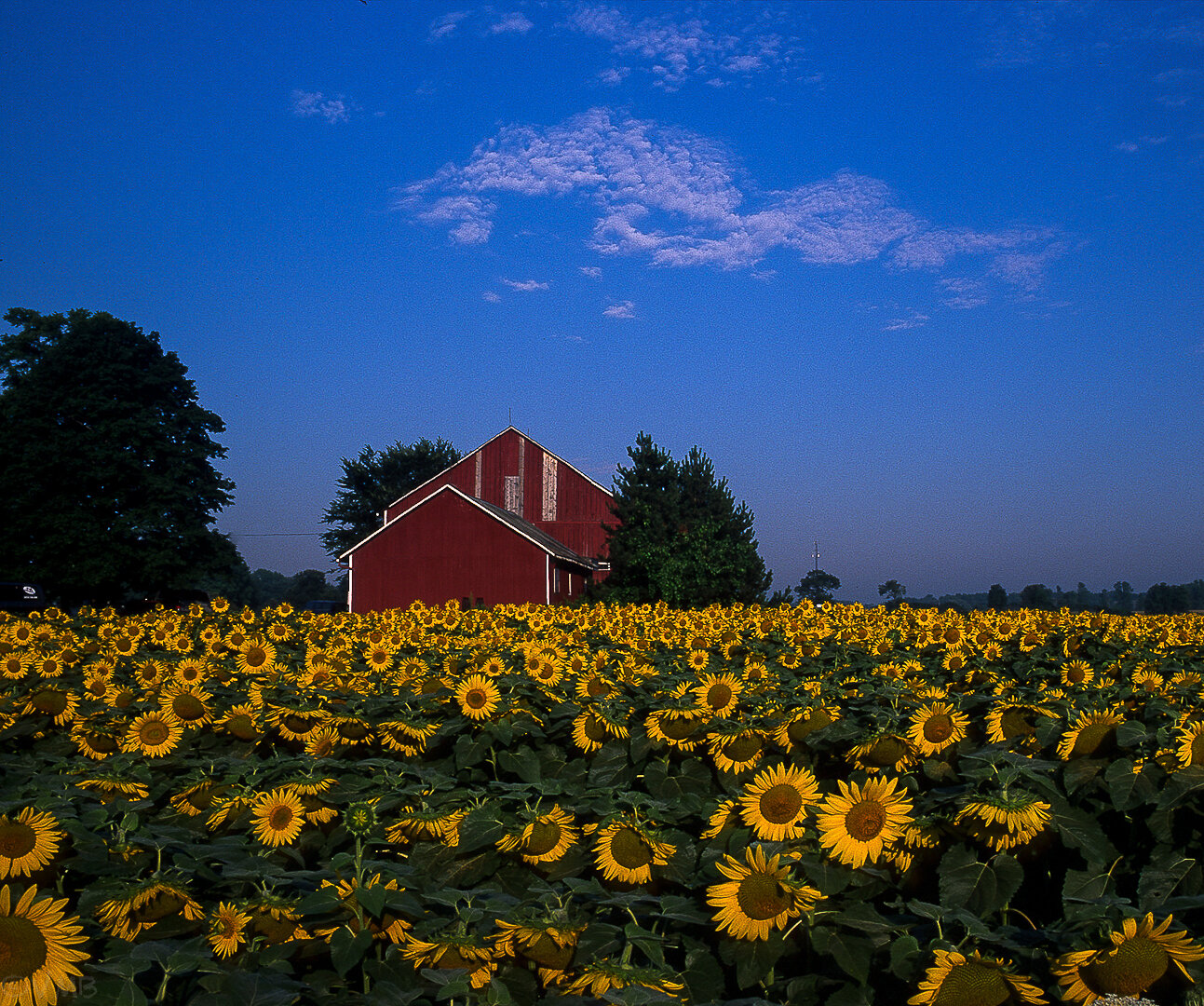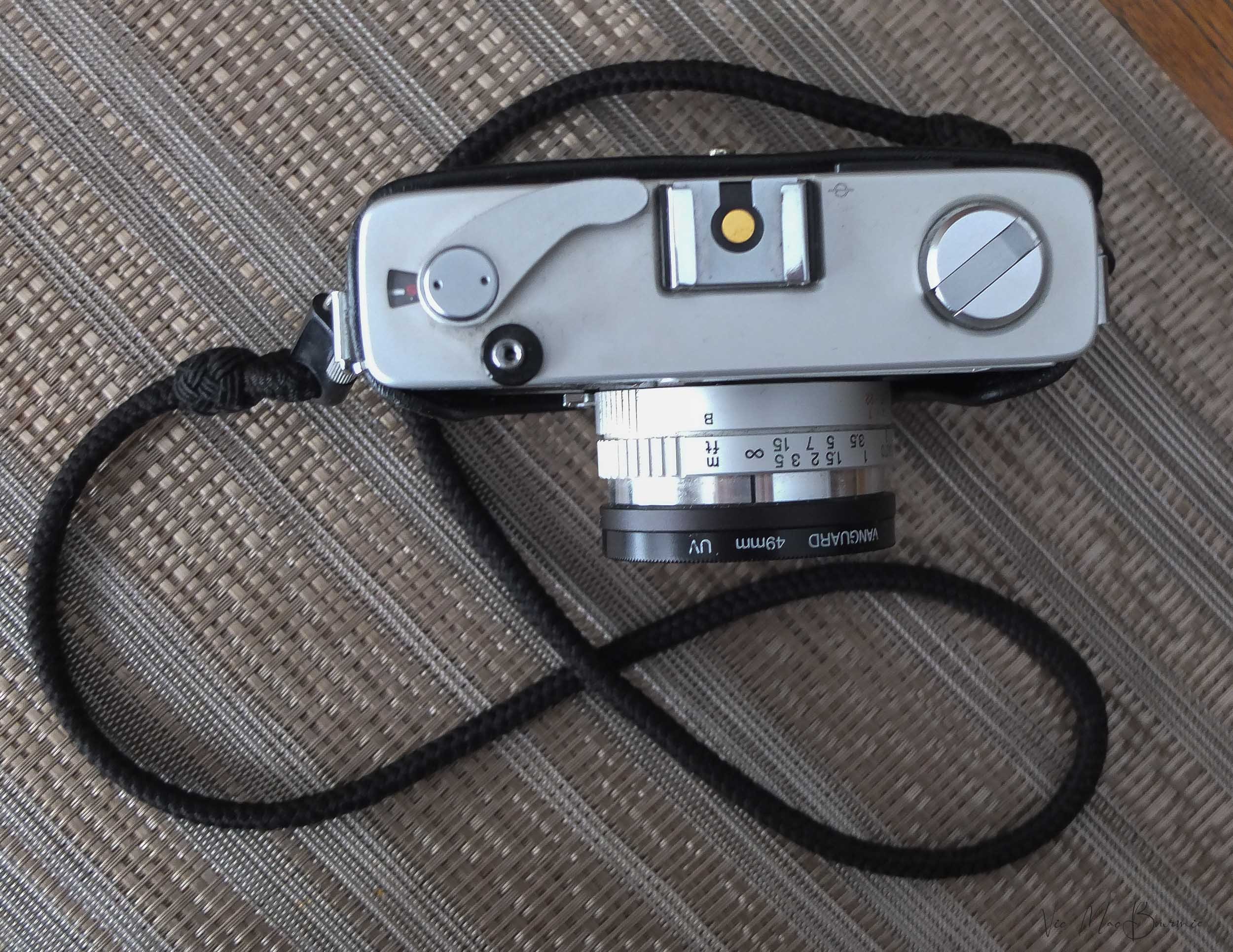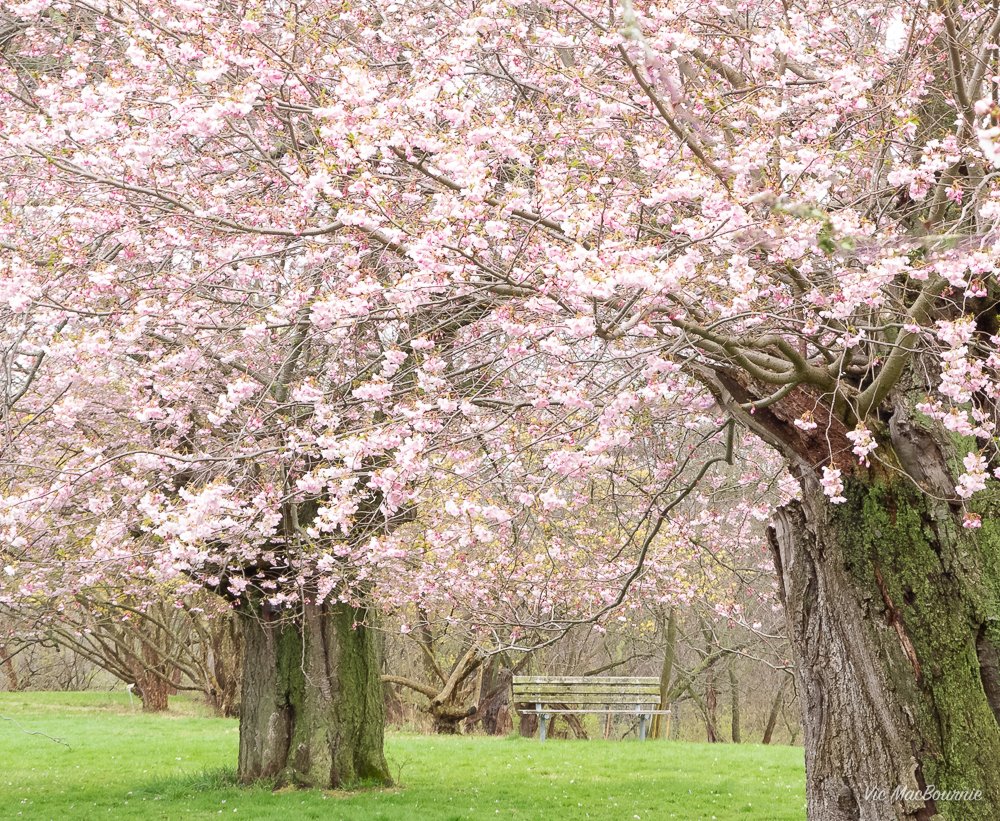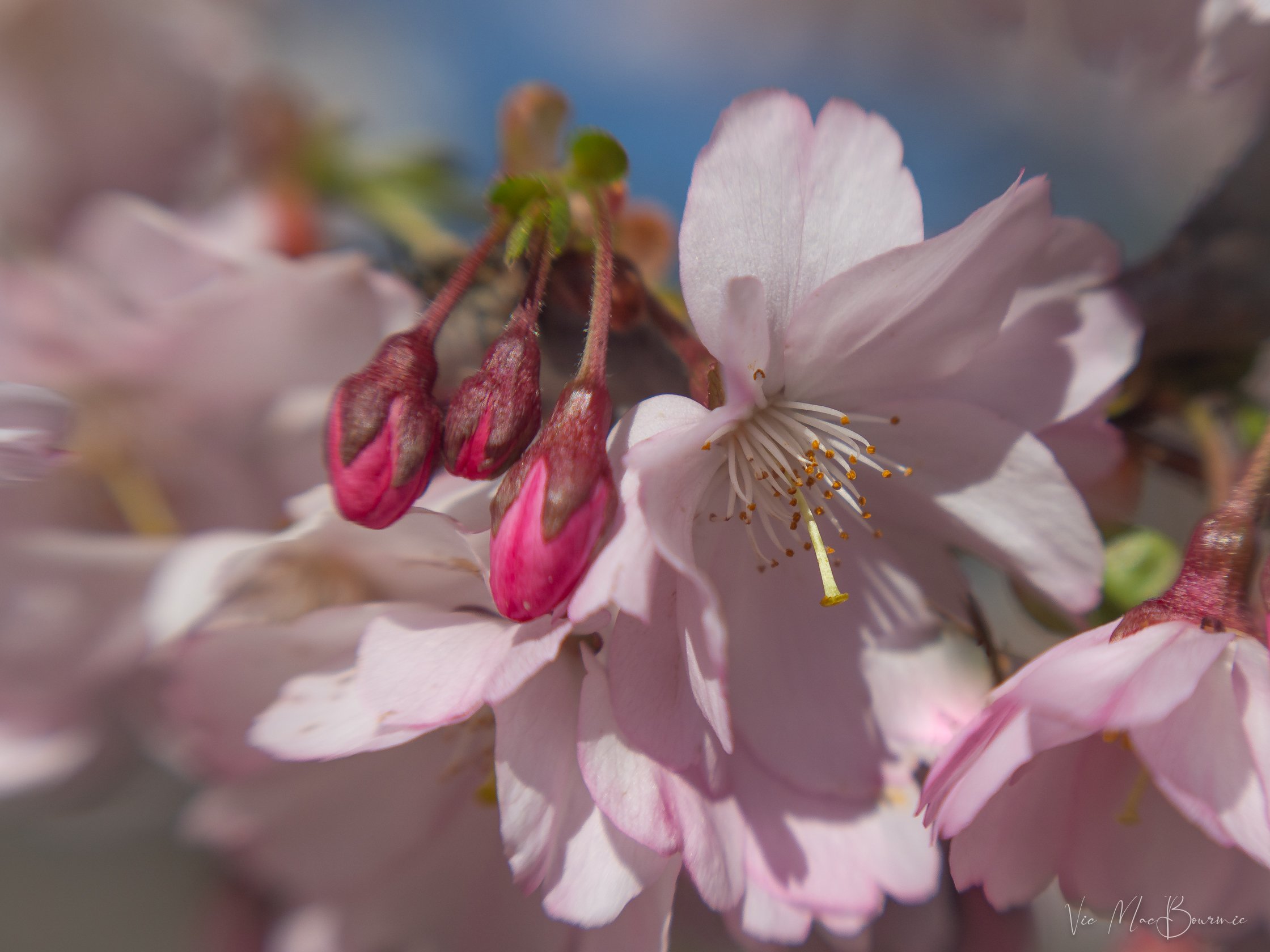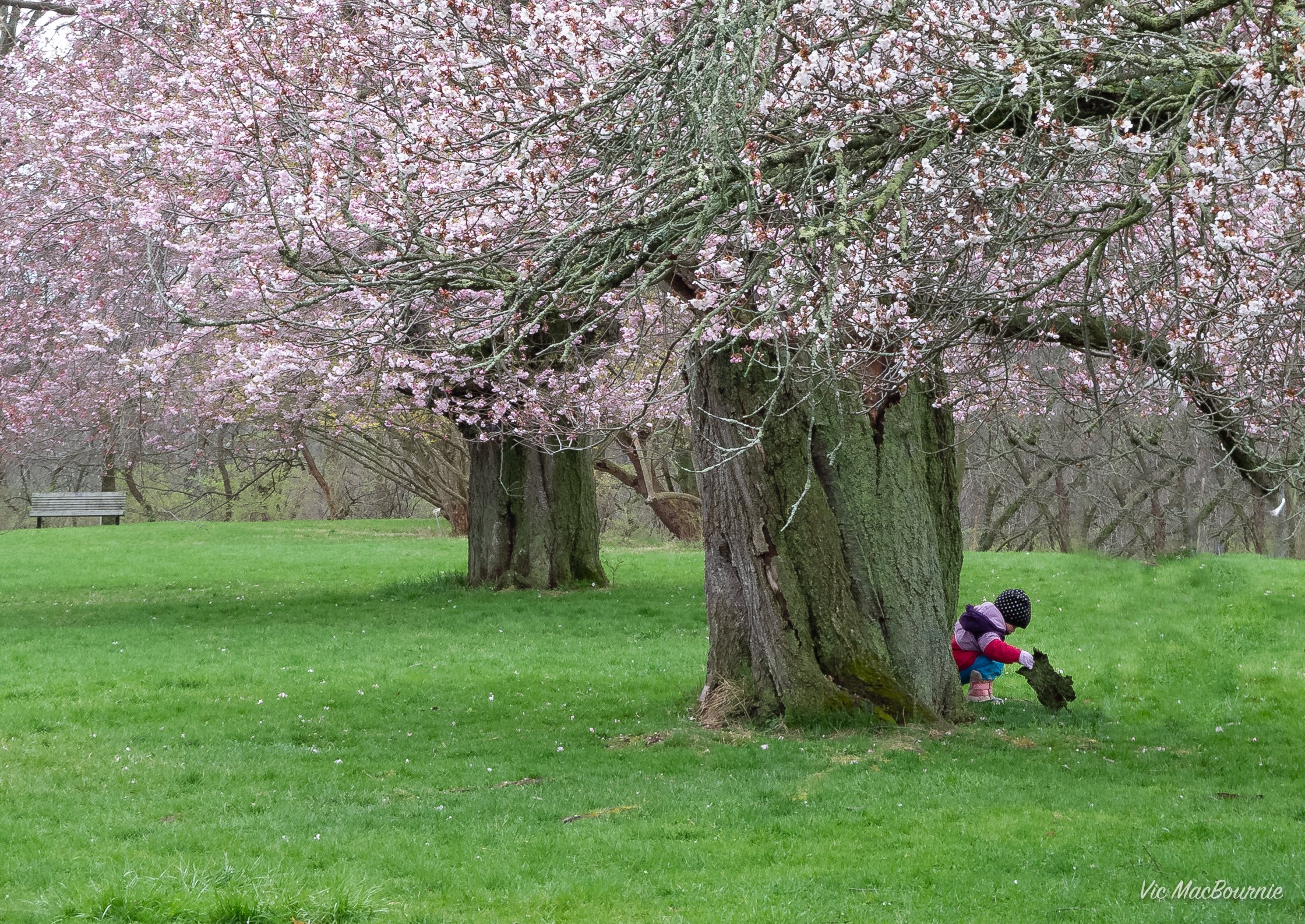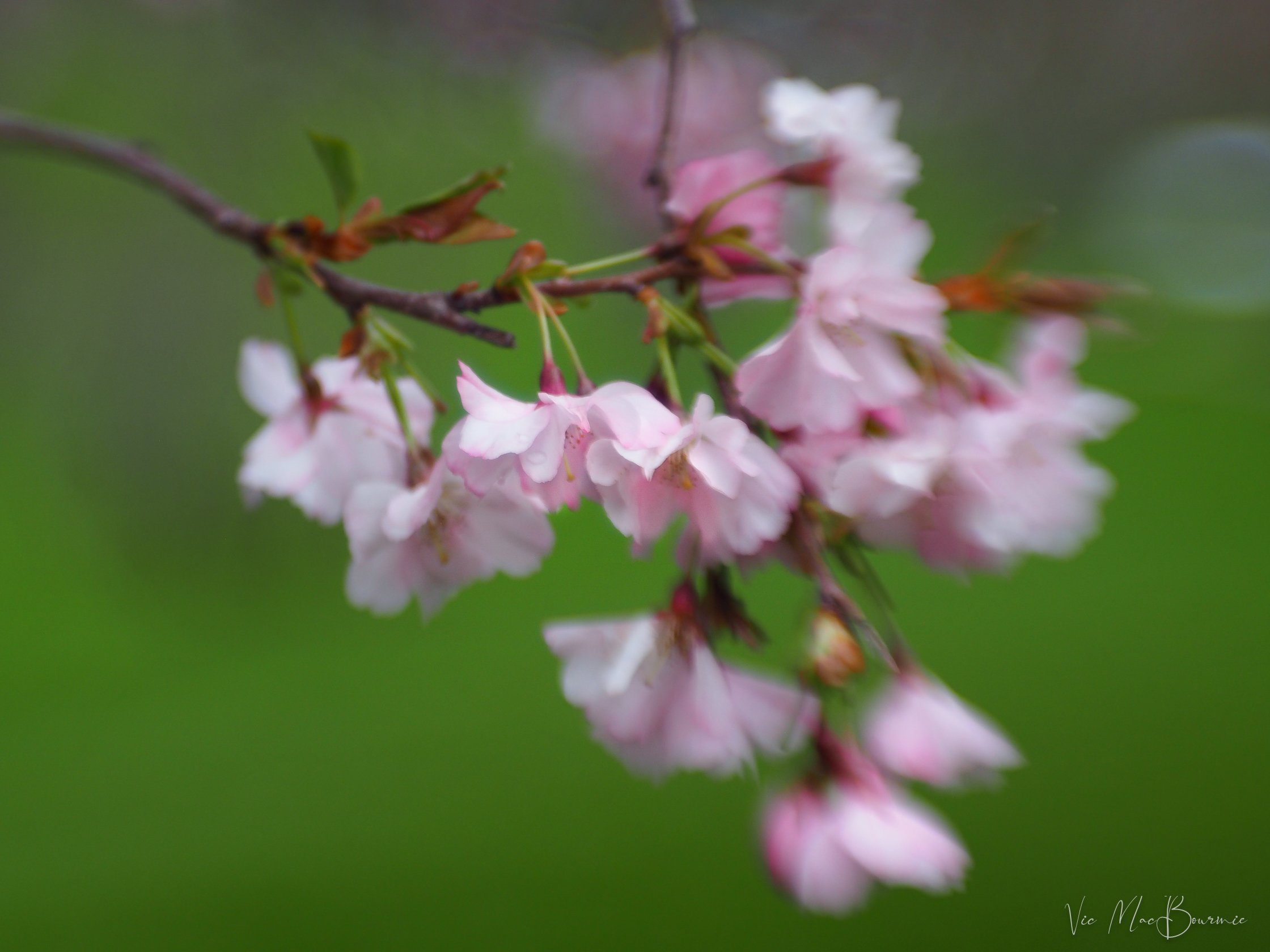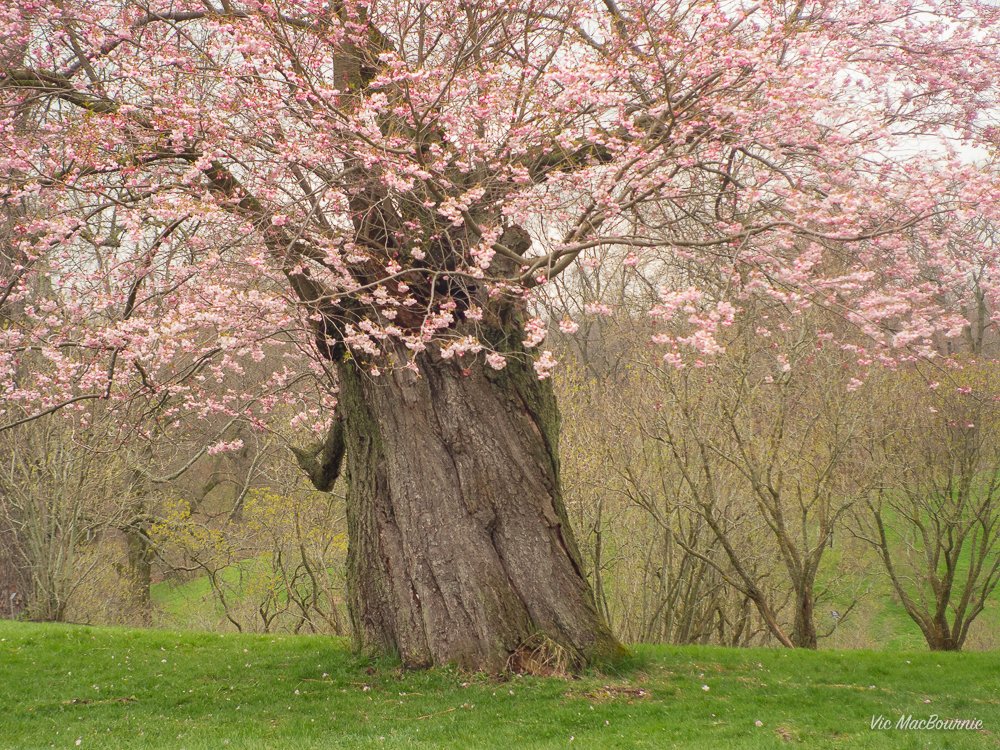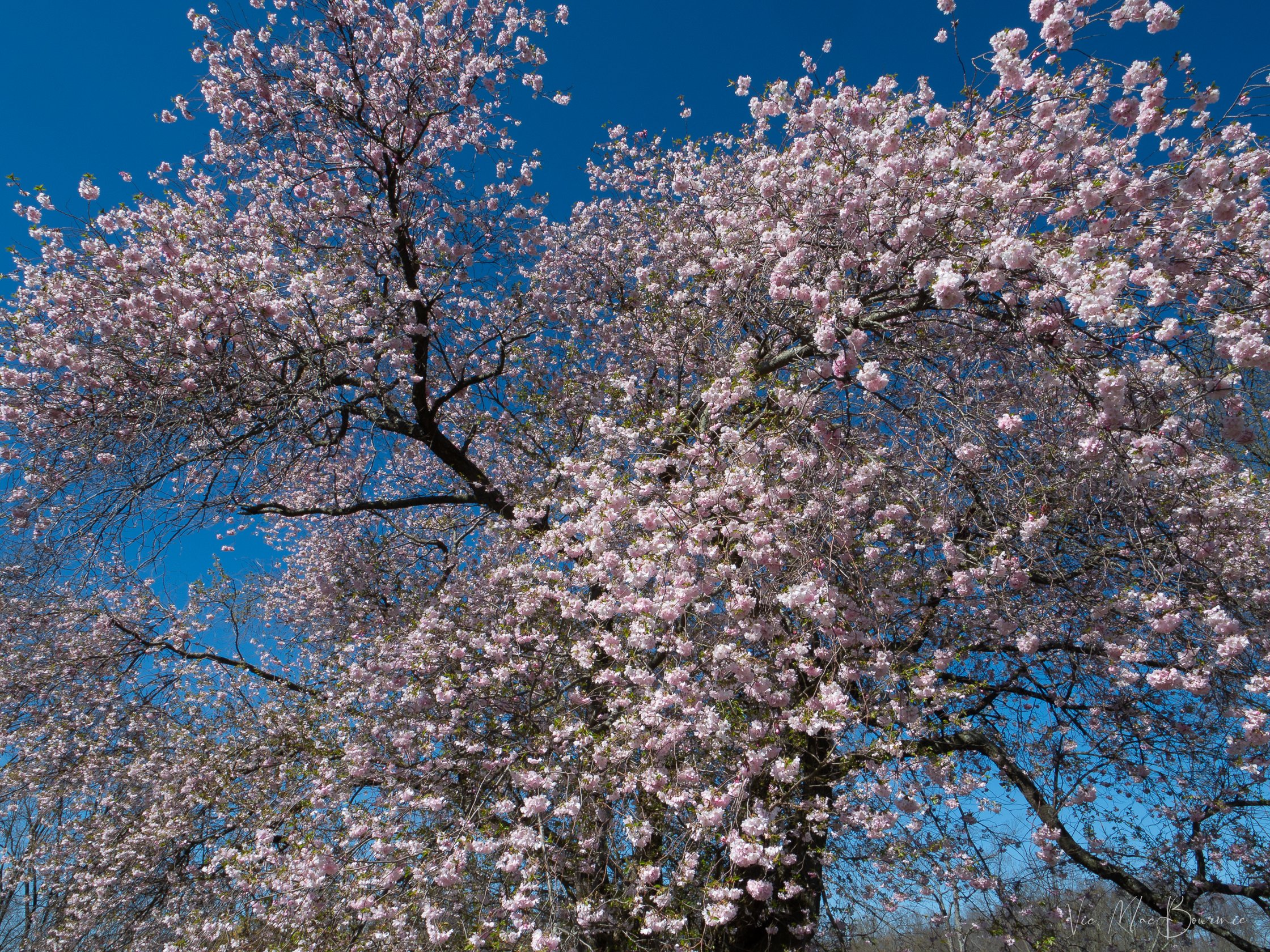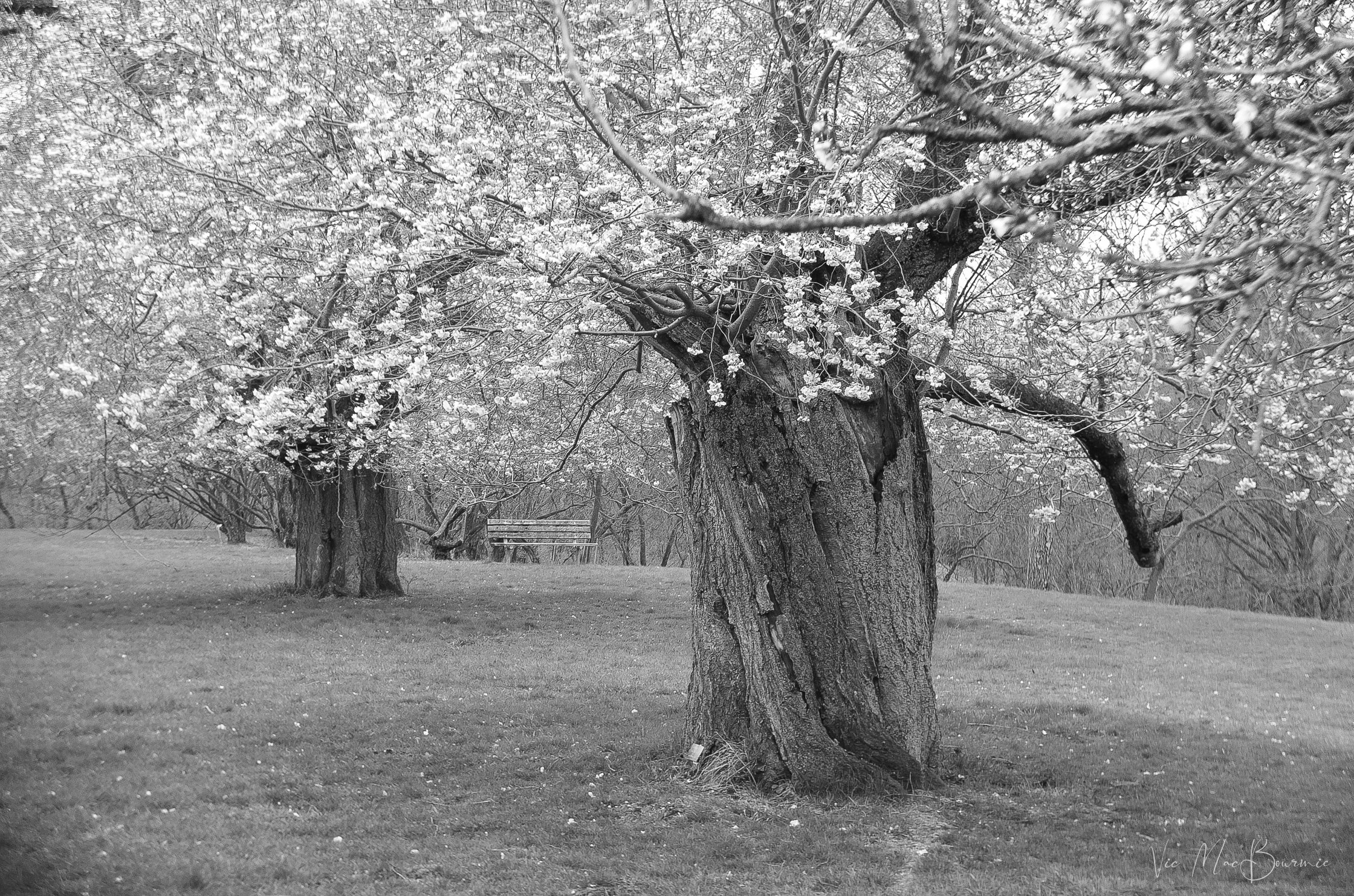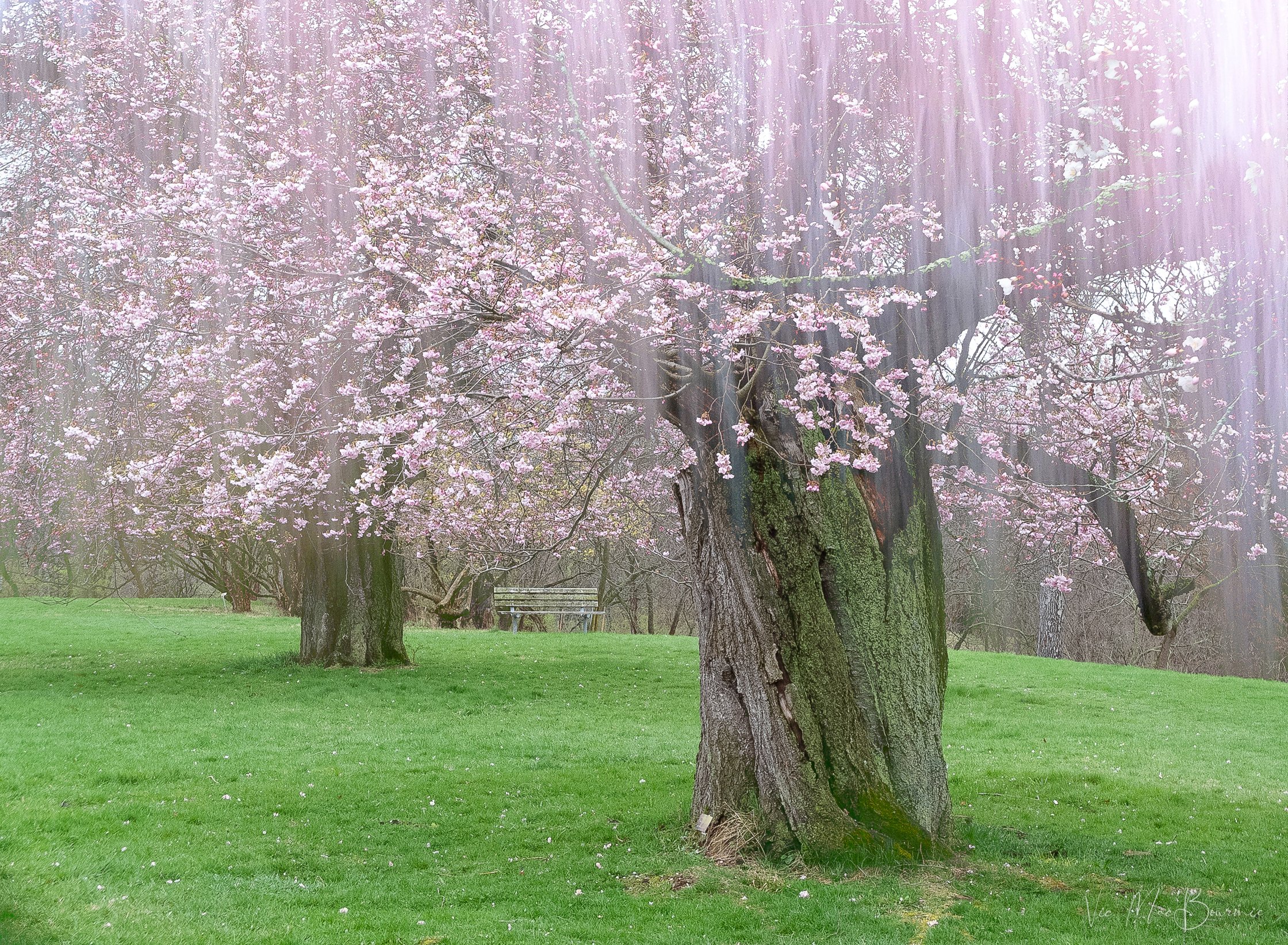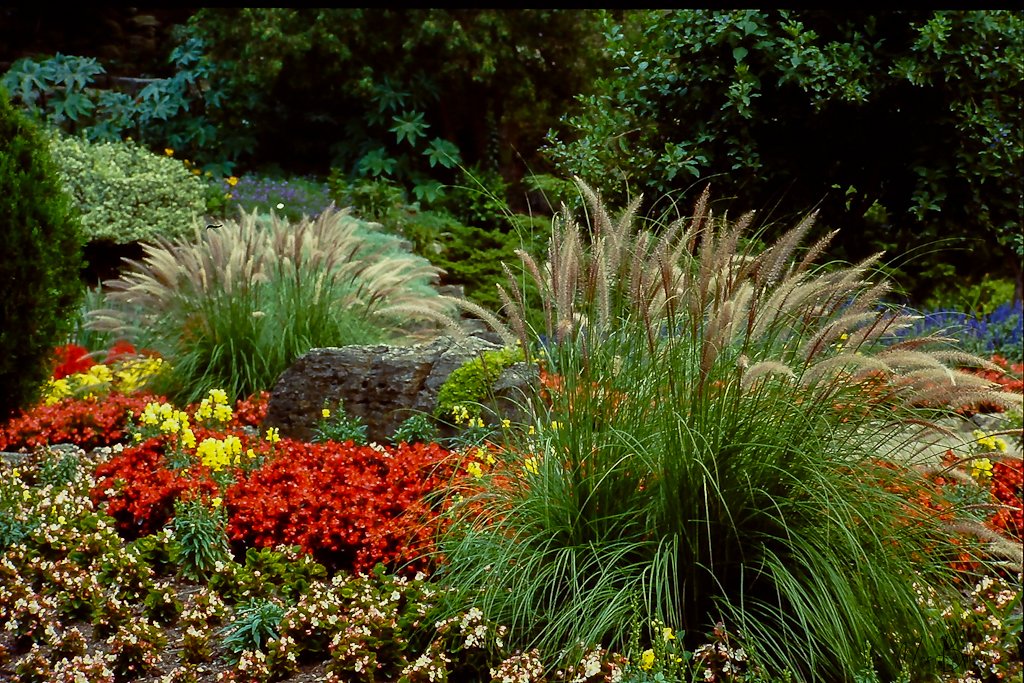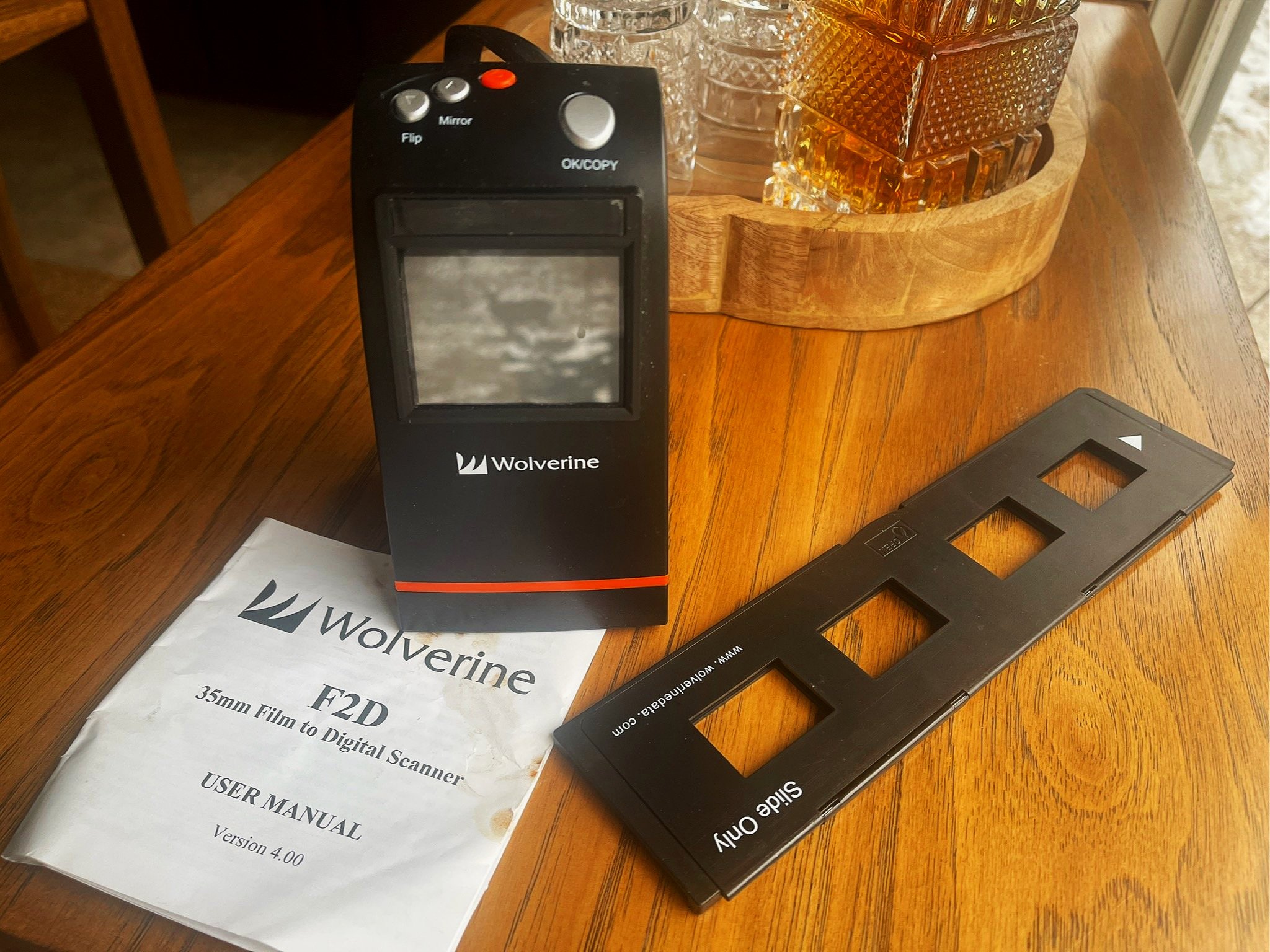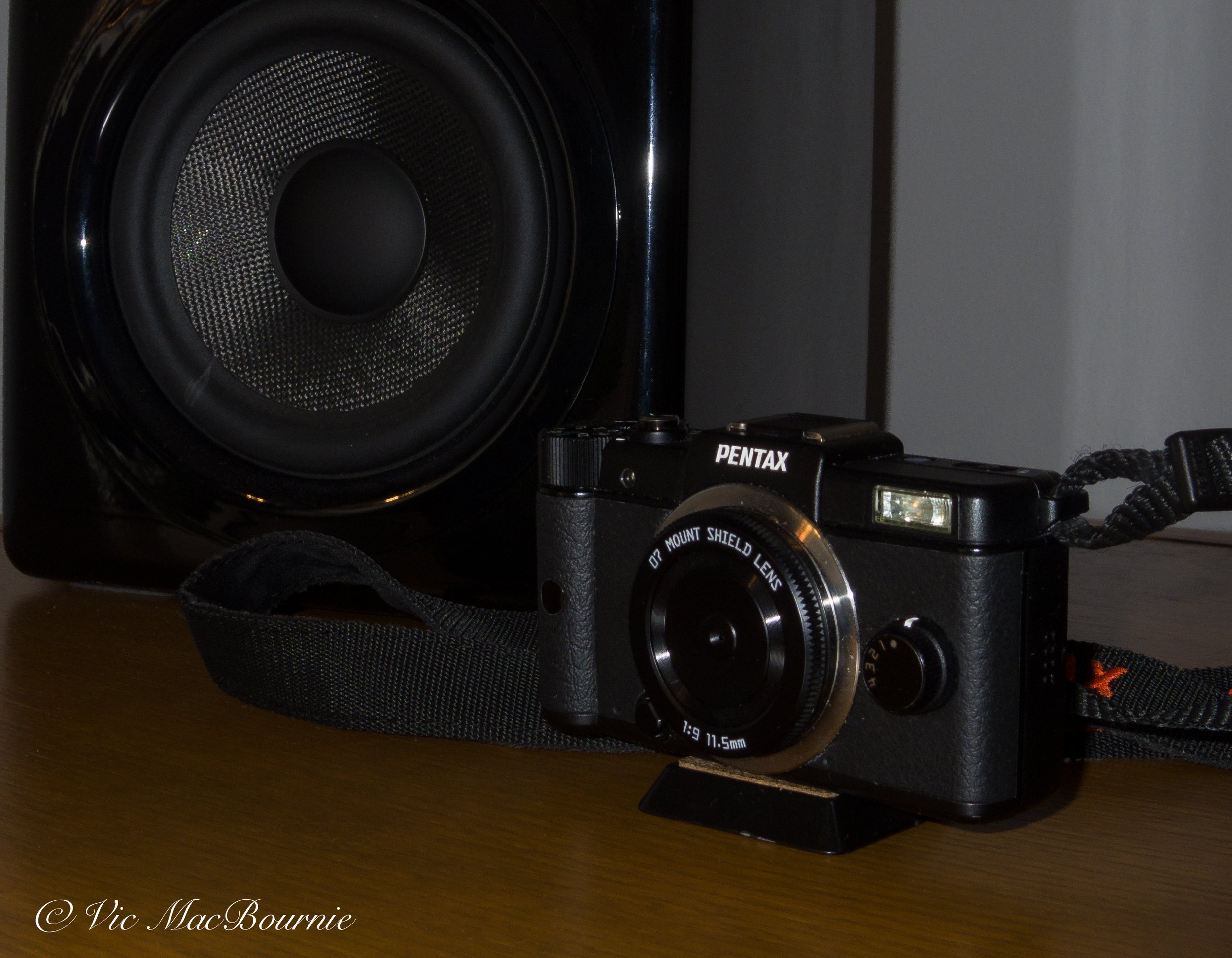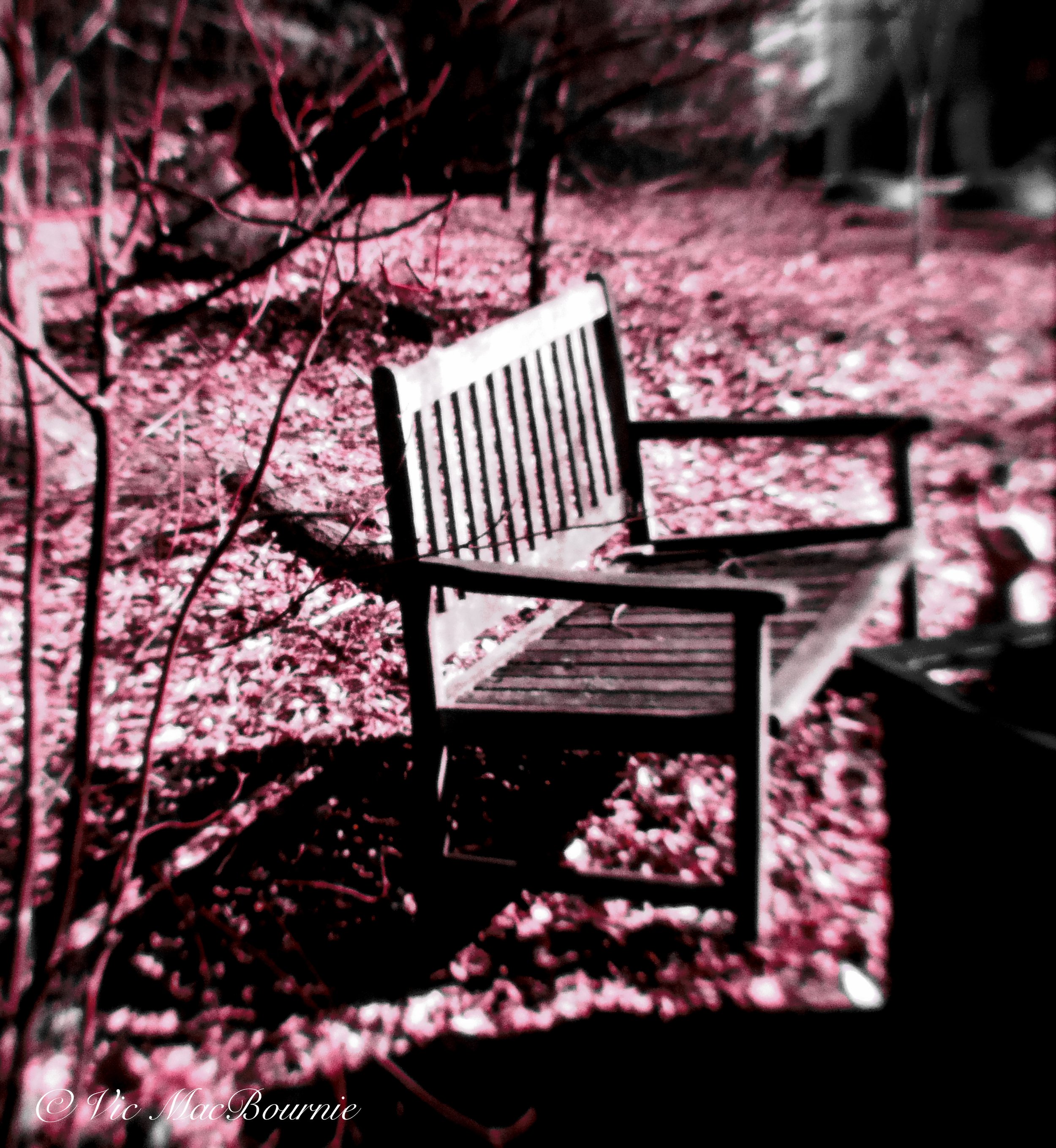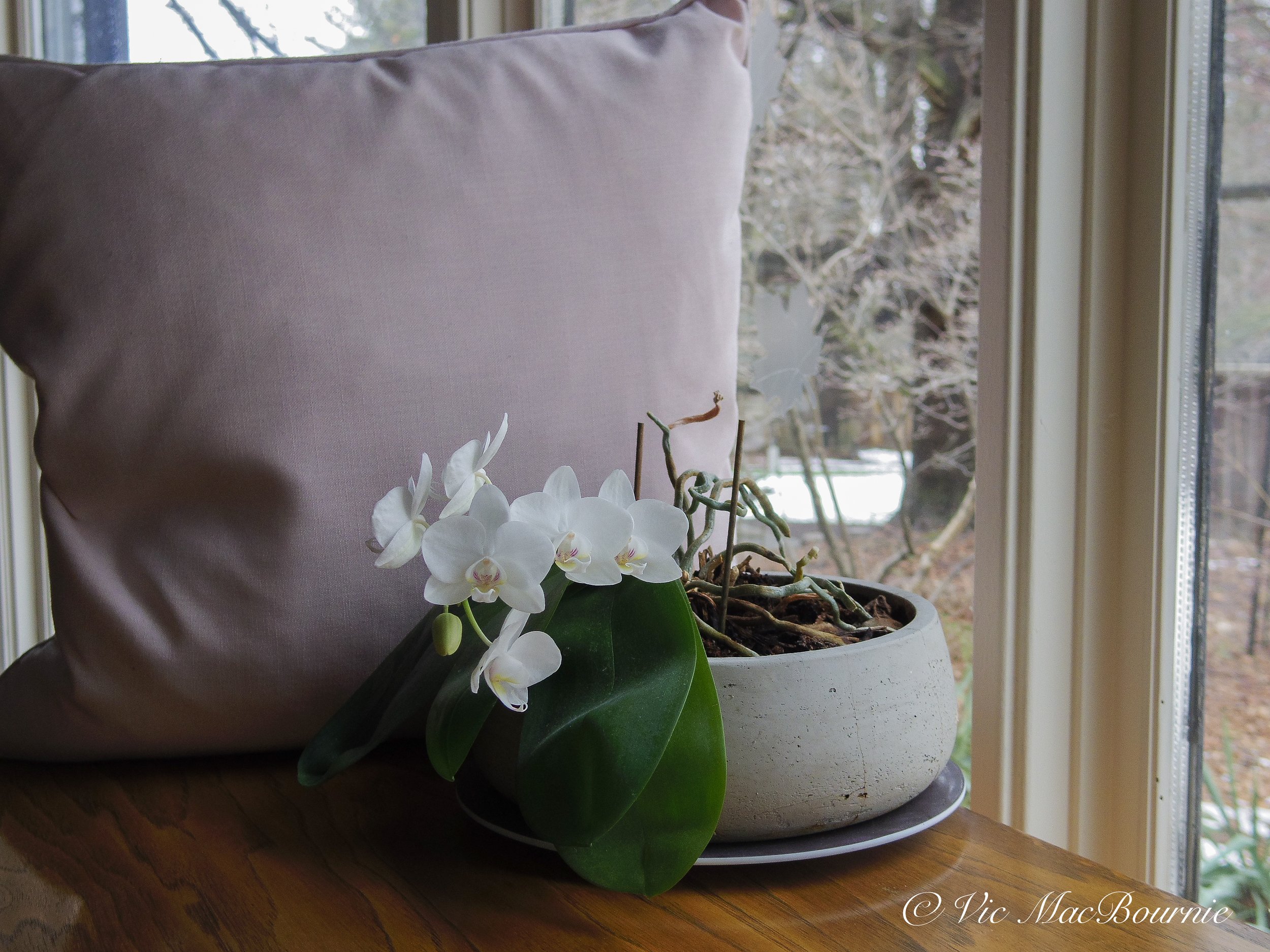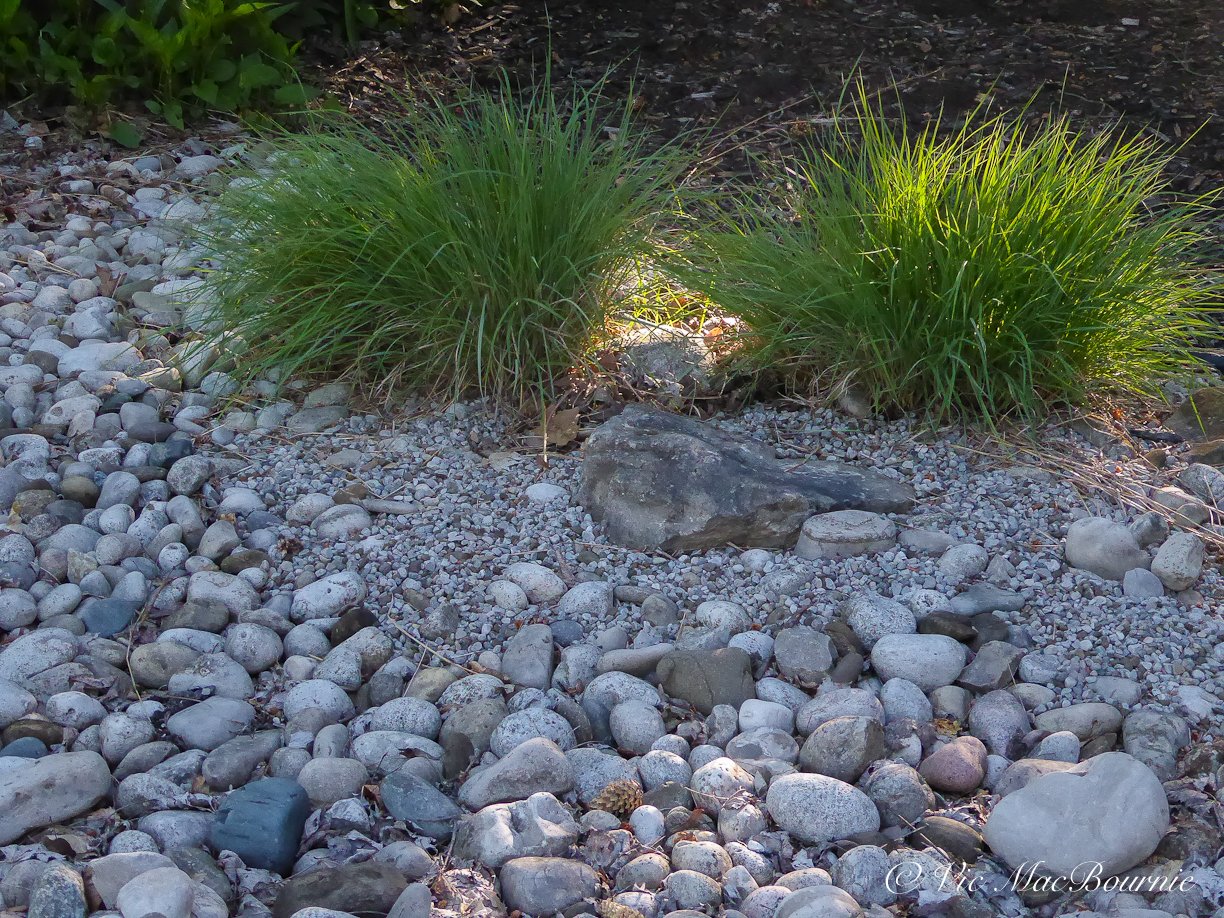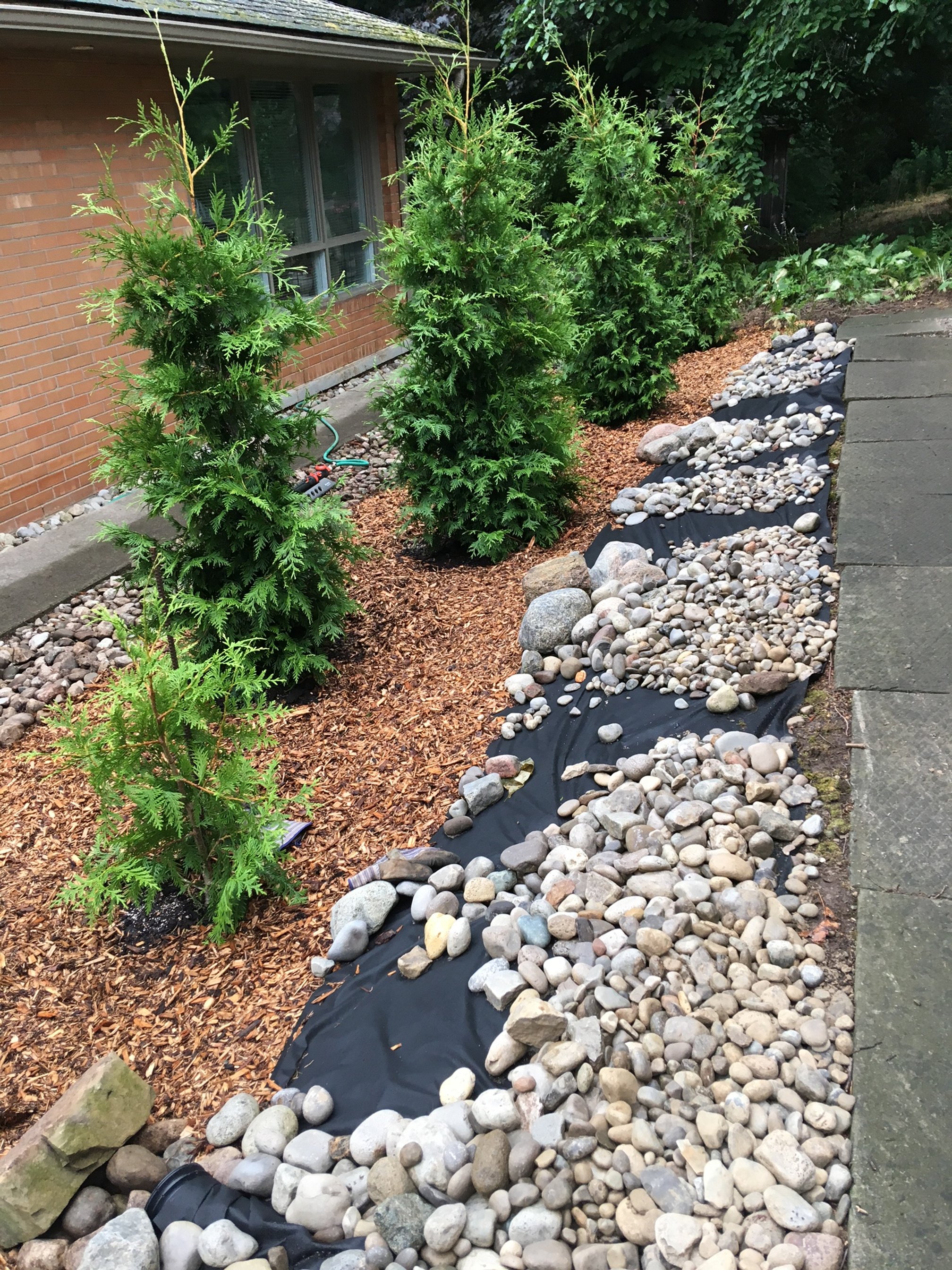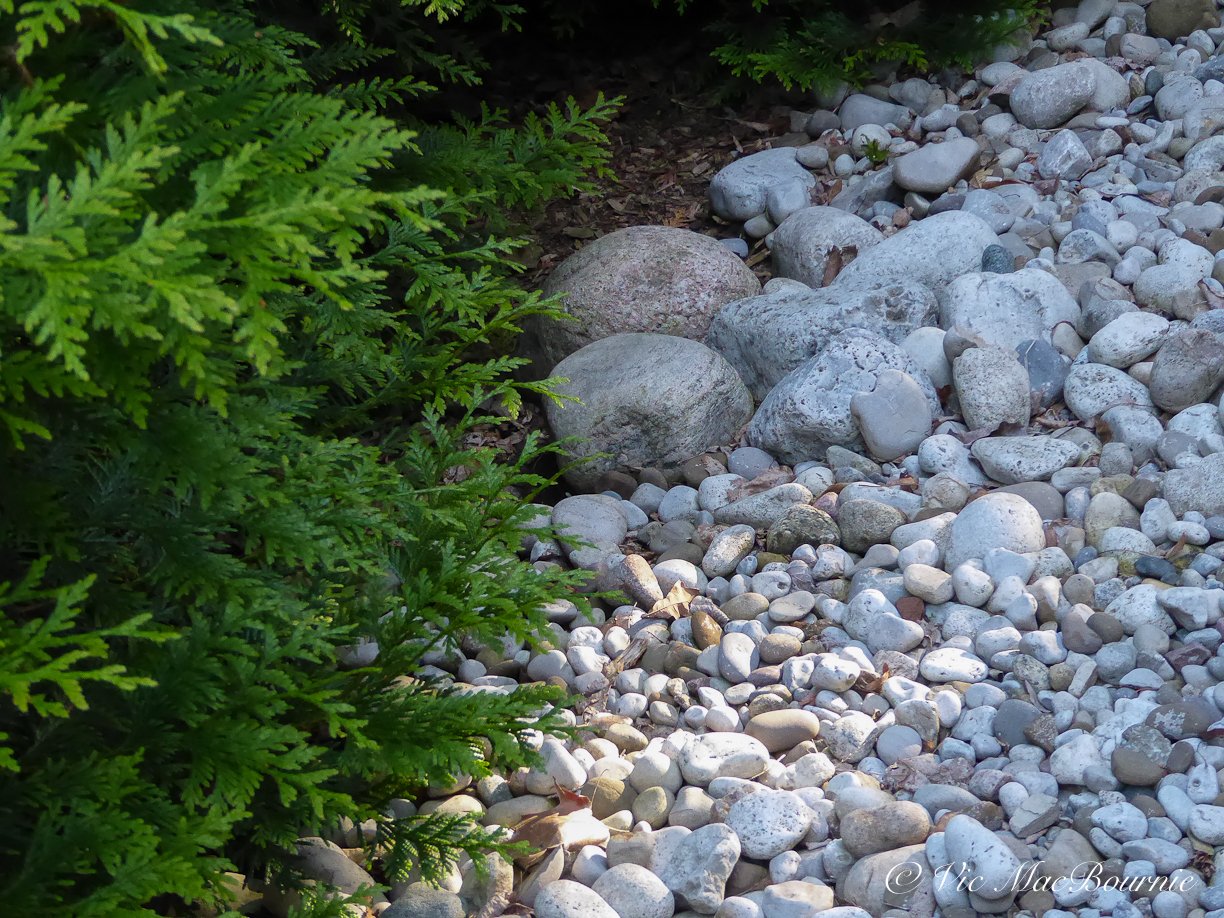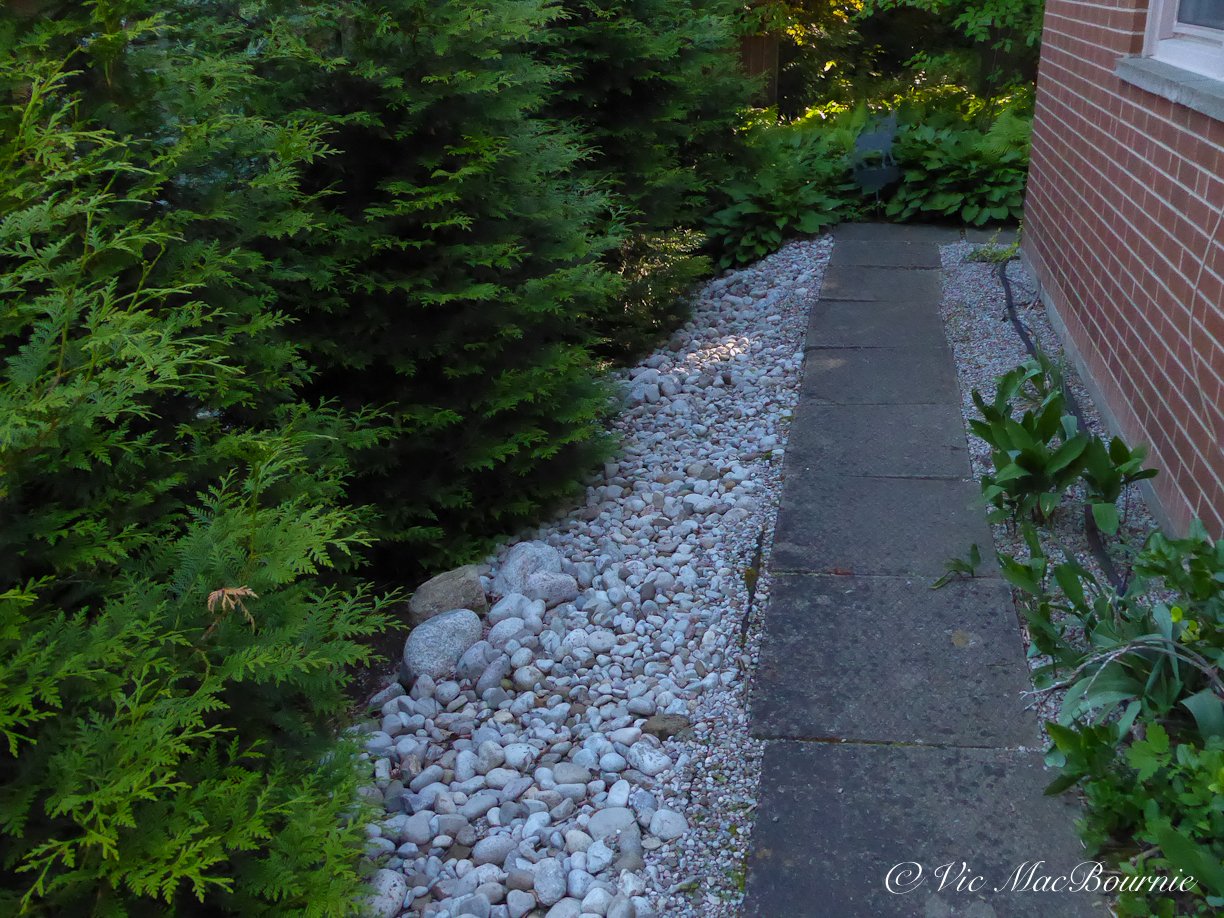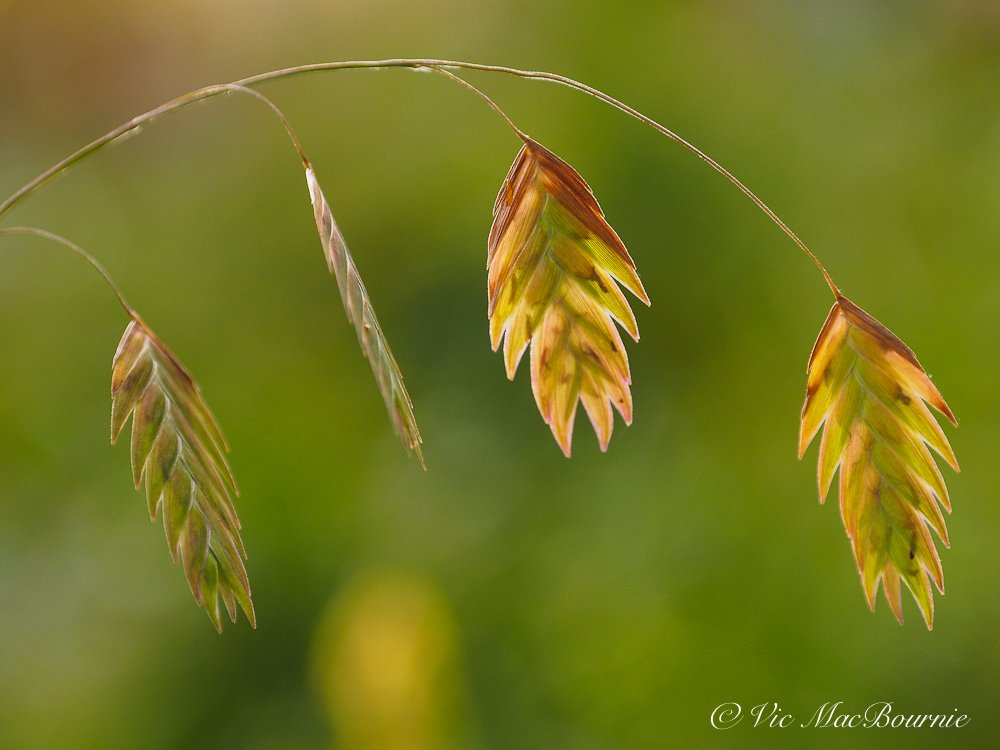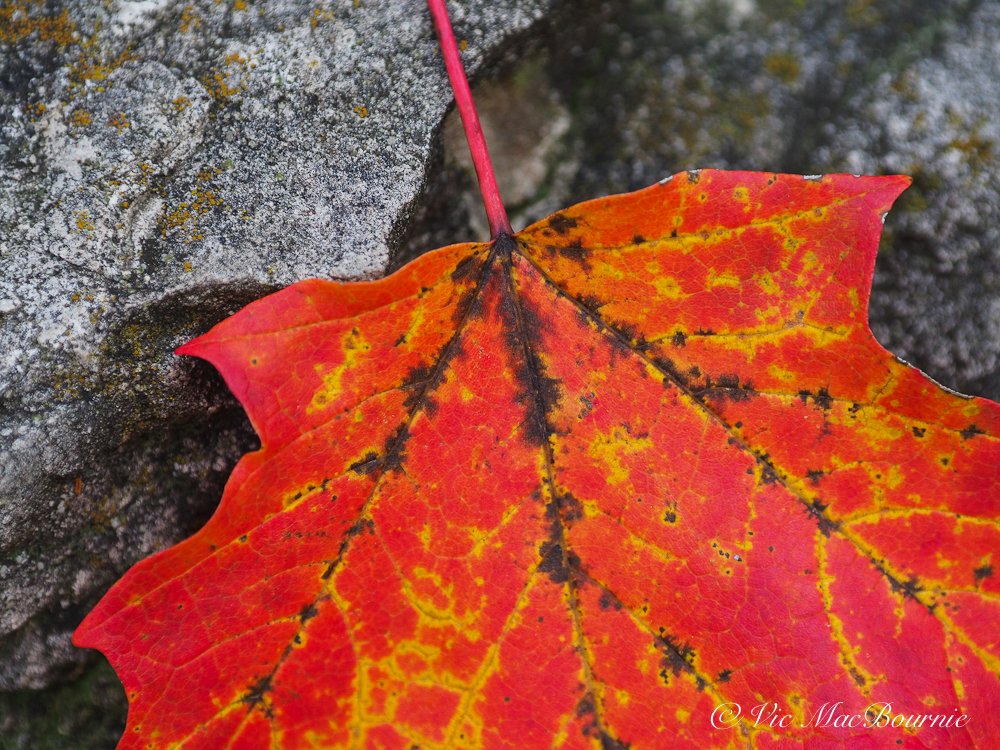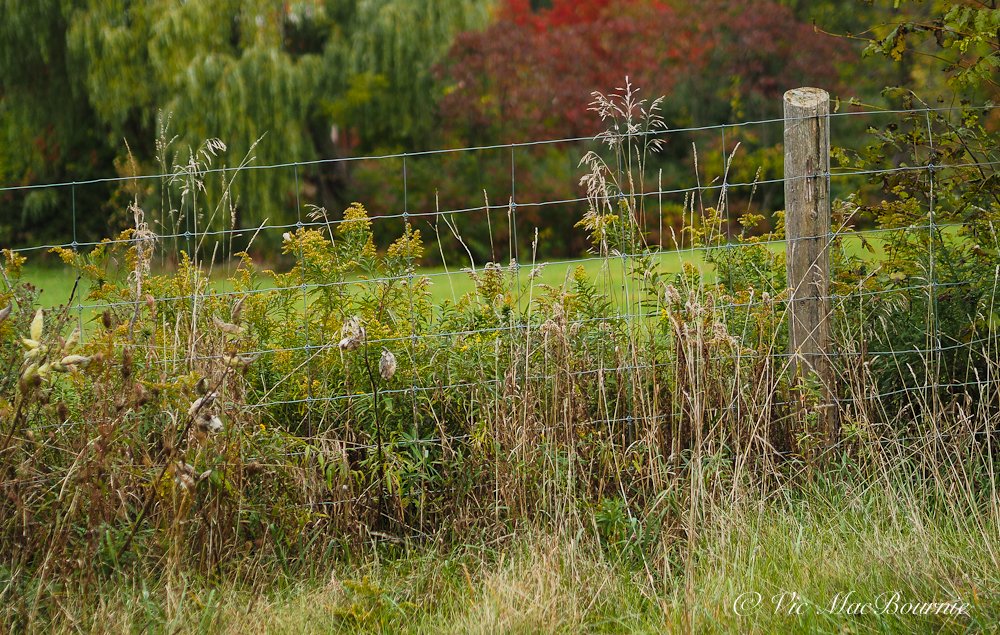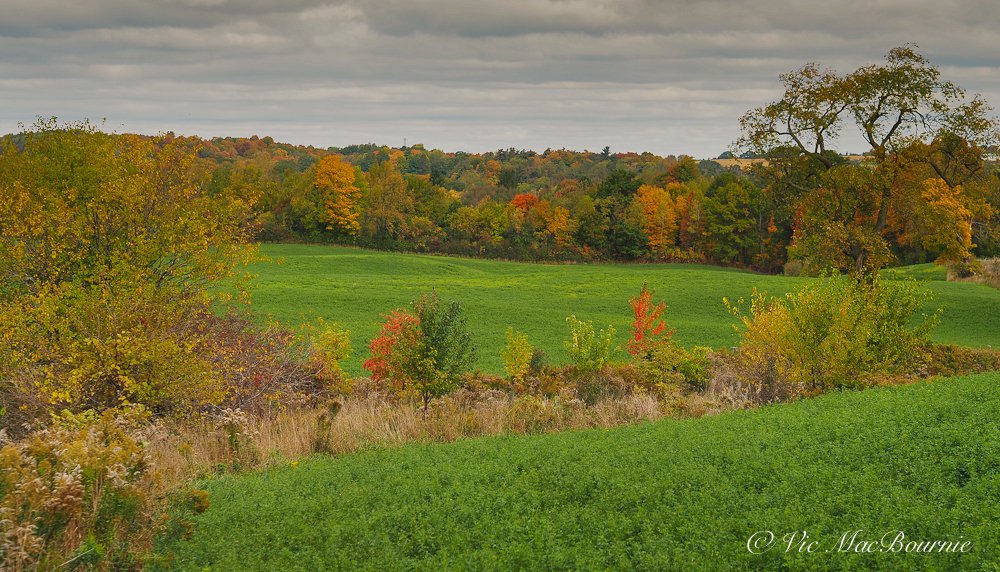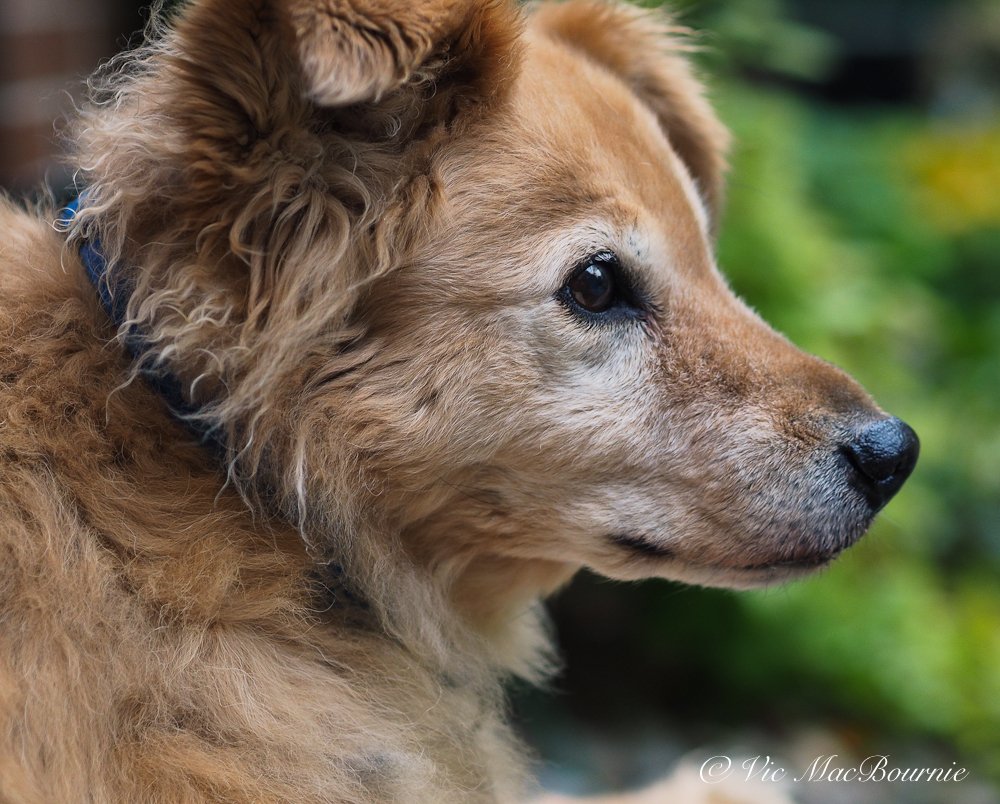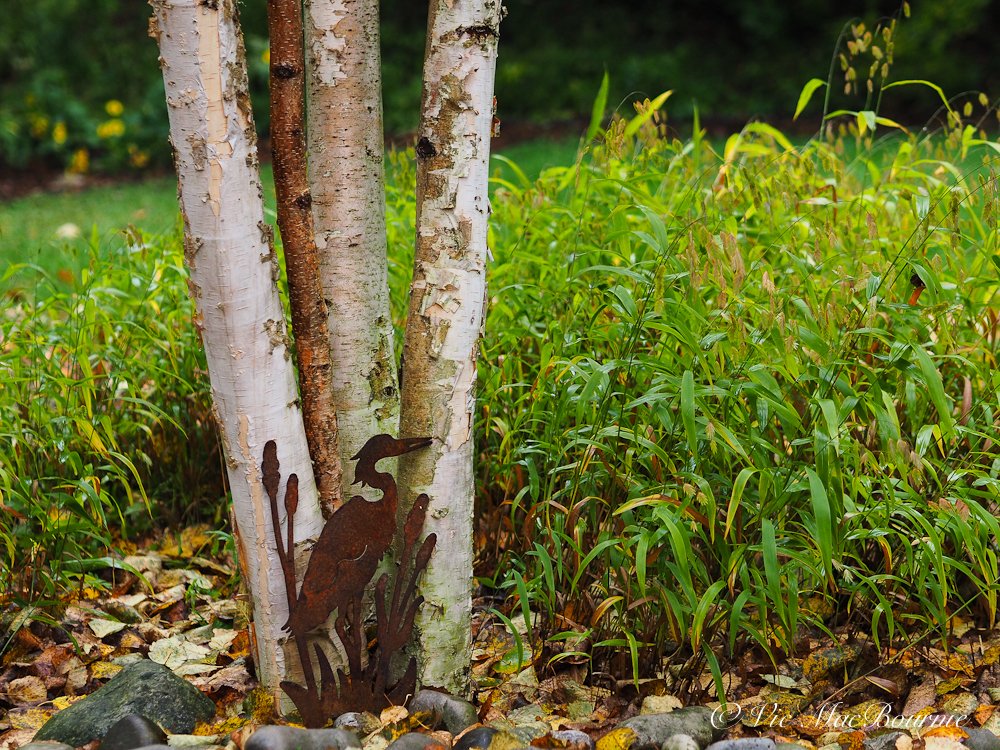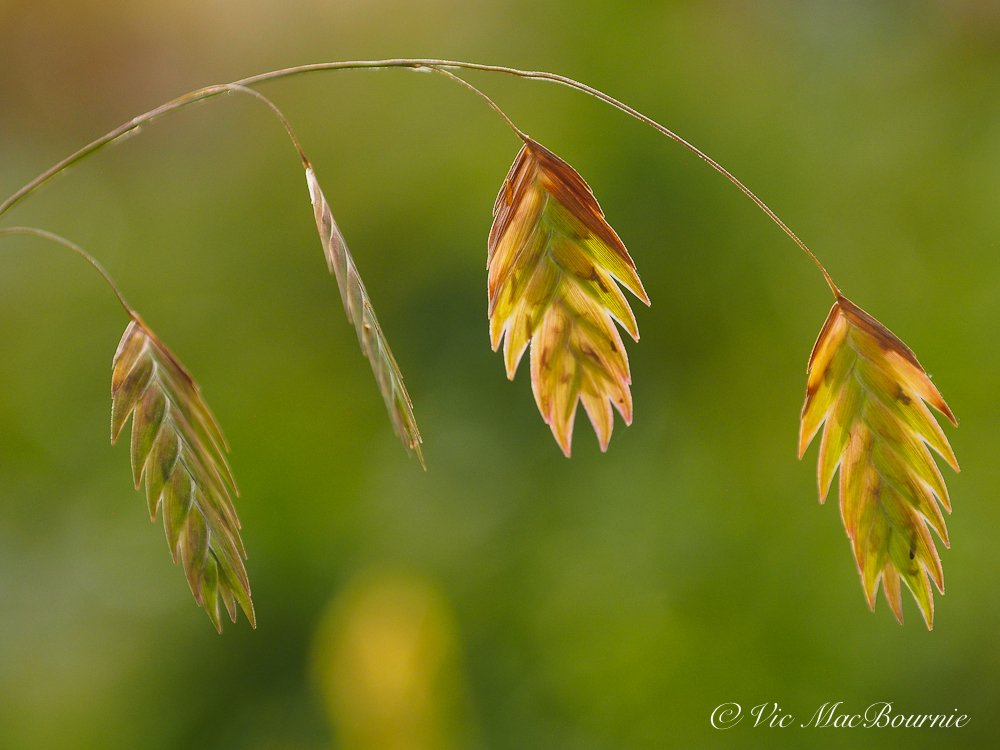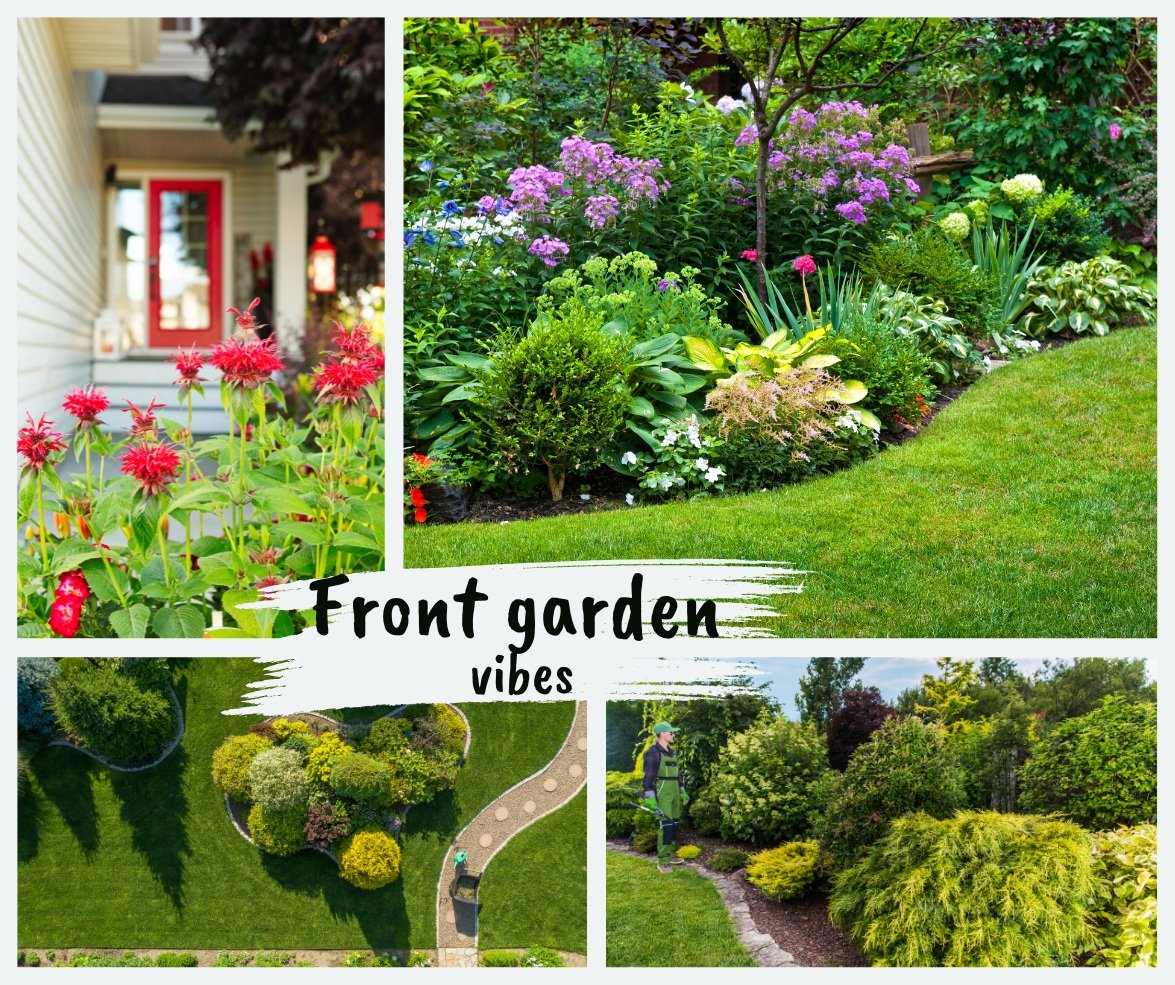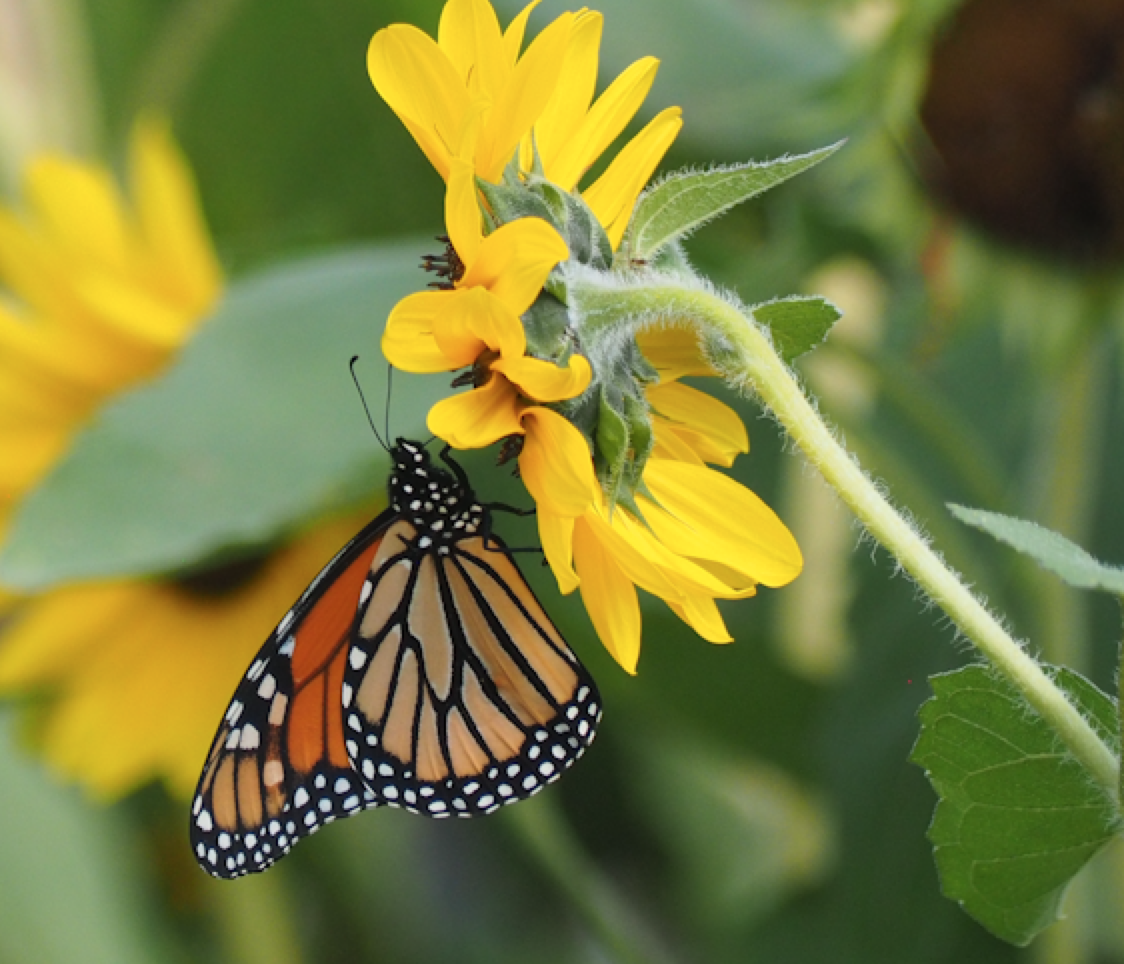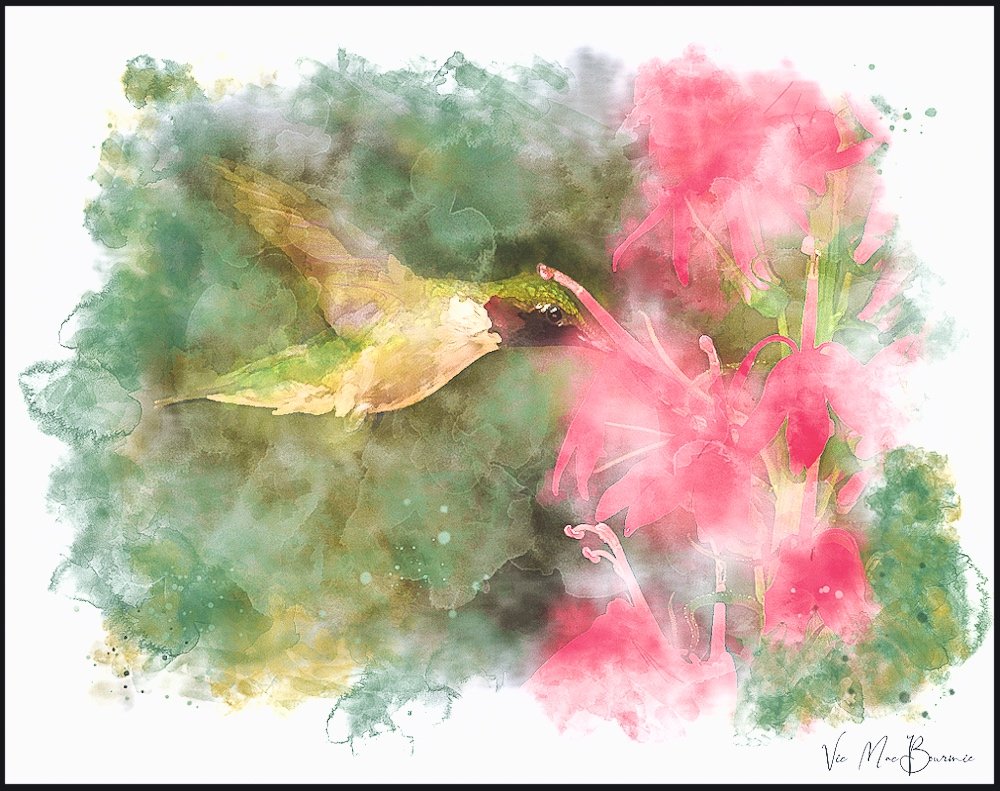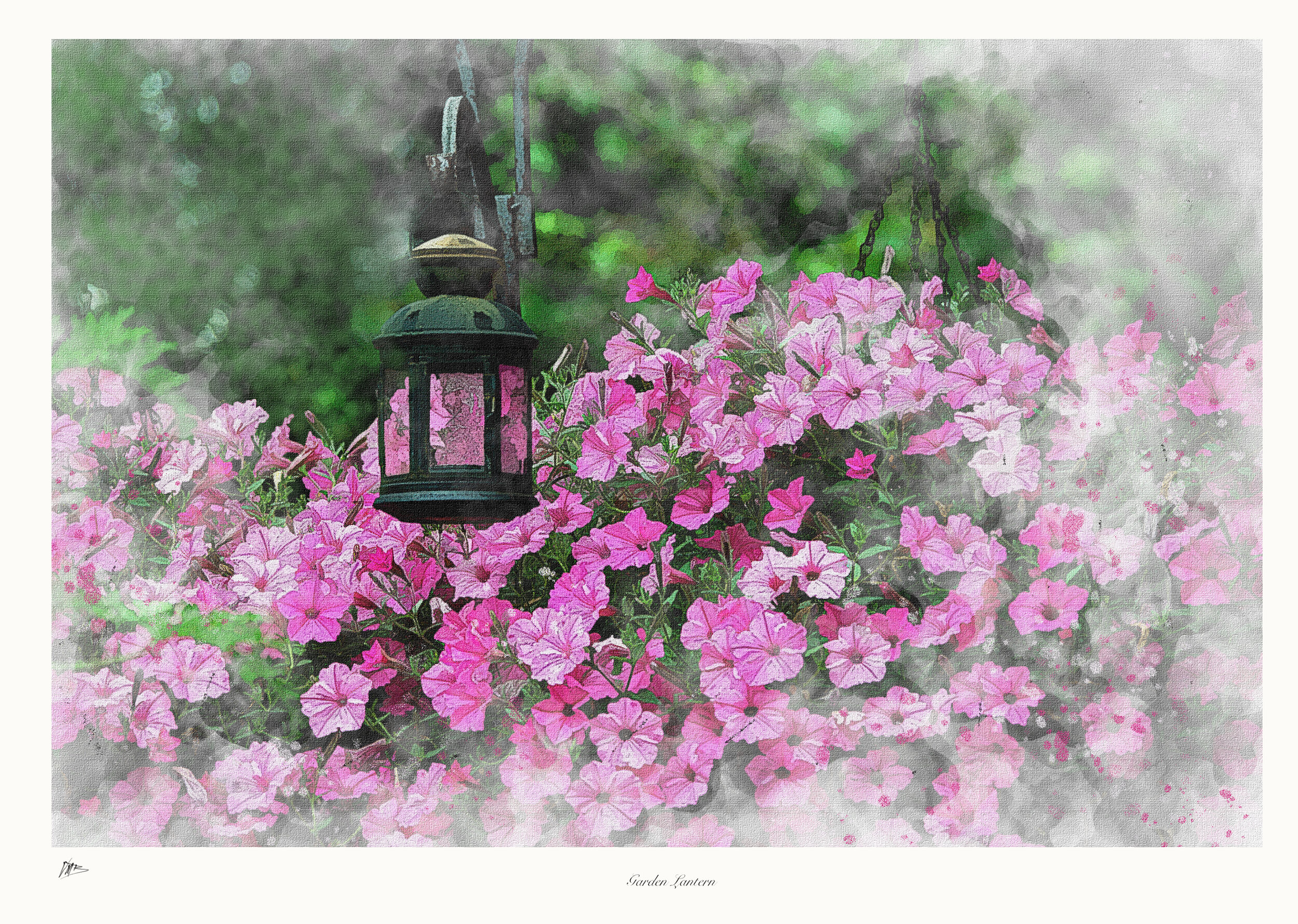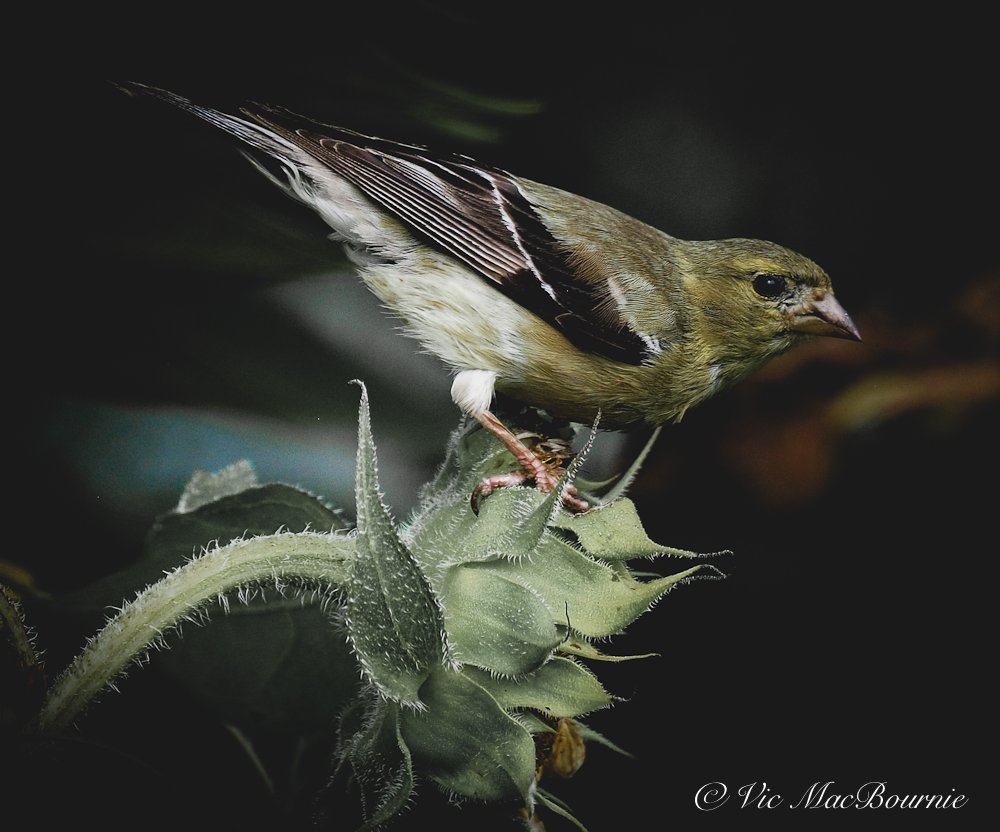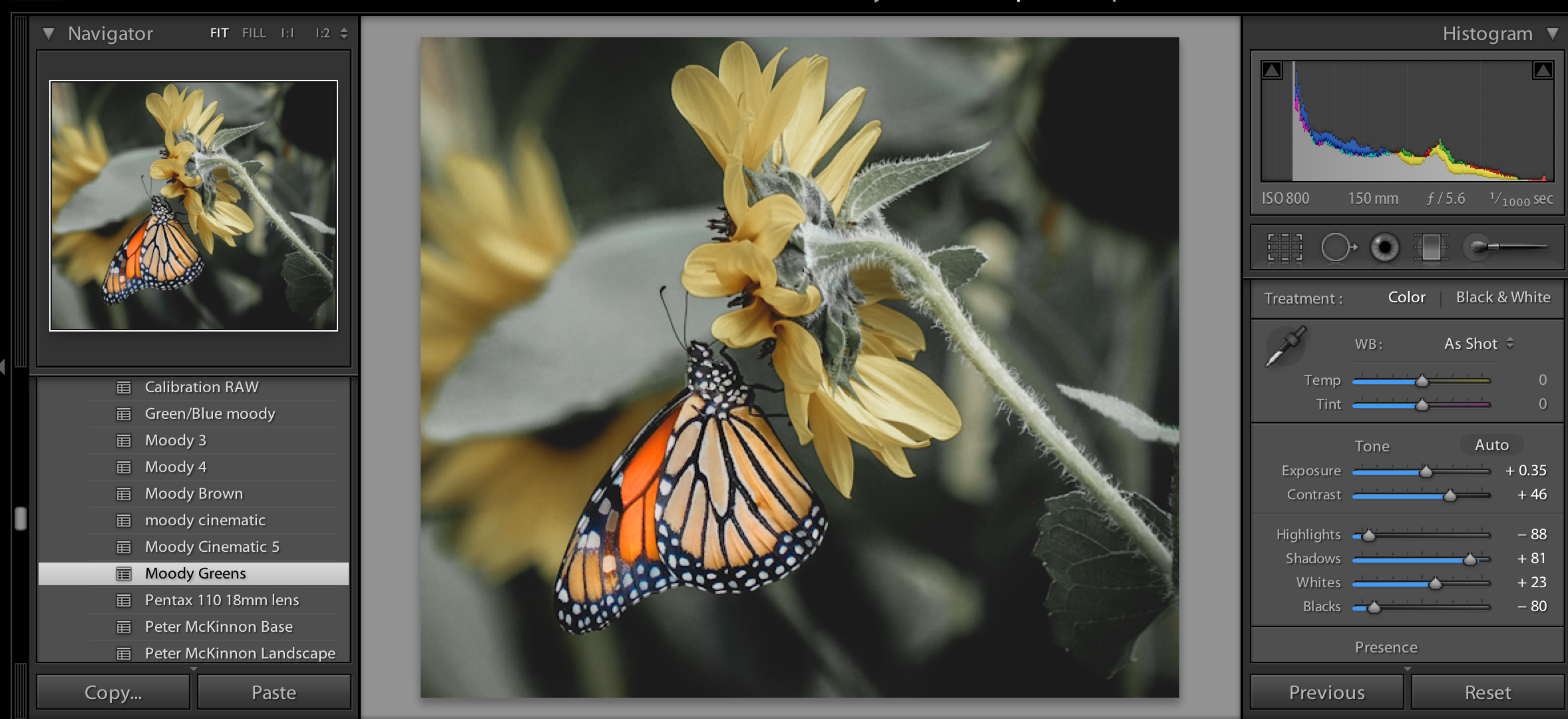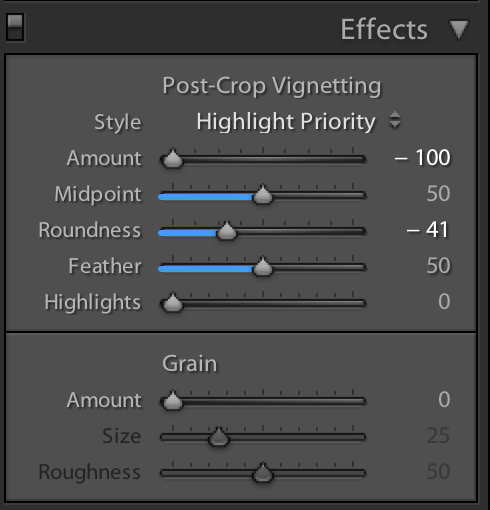Give your garden and wildlife images room to breathe
Why not try your hand at taking environmental portraits in nature? Try telling a story rather than moving in too close and put those wide angle lenses to work.
Consider adding more “environmental portraits” to your portfolio this year
In high school one of my buddies was what you call a “close talker.” Great guy. Everyone loved him except when he got up close and personal telling a story or passing on information.
So, whenever he wanted to talk to you, for some reason he felt he had to get so close that it became a bit uncomfortable. You wanted to be polite and not say anything, but inside you’re saying to yourself, “please back off a bit, this is uncomfortable.”
That’s exactly how I feel about many images I see from photographers on social media. I’m not sure if they want to justify the purchase of a very long and expensive telephoto lens, or if they think that getting in as close as possible to a subject instantly makes the image superior to one that has a little breathing room.
In many cases, but I want to make this perfectly clear, obviously not all, the images would benefit from moving back and showing the animal, bird or flower in more of its environment.
This thought was brought home to me this week while reading Portraits of Earth, written by Freeman Patterson my all-time favourite photographer and a Canadian I might add. His environmental portraits of the earth capture the essence of his subjects, while always leaving room to appreciate them in the context of their role on earth.
Of course, there are many occasions when the best shot is a close one, or one that has been closely cropped in post processing. A busy or unnatural background are just two reasons to move in close. An outstanding subject in beautiful light that just begs for a close approach is another. And there are lots of other reasons to get as close to your subject as possible.
In fact, in many instances getting as close as possible still leaves the photographer so far away that you have no other choice but to create an environmental portrait.
But when you are making a picture – whether it’s of a bird, mammal or flower – ask yourself whether the image would benefit from backing off a little. If you are cropping the image during post processing, ask yourself if moving in as close as possible and eliminating all sense of environment is the best choice.
This thought was brought home to me this week while reading Portraits of Earth, written by Freeman Patterson my all-time favourite author and photographer and a Canadian I might add. His environmental portraits of the earth capture the essence of his subjects, while always leaving room to appreciate them in the context of their role on earth. Check out used book retailer Alibris to get great buys on Freeman’s outstanding photography books including his book The Garden that I will be reviewing in the near future.
This image of a bull and female moose in Medicine Lake, Jasper, Alberta is, in my mind, the essence of an environmental portrait of these two magnificent animals. Moving in close would only have ruined the sense of space that the lake and mountains in the background provide. For me, the image illustrates how huge our wild areas are when it can literally dwarf these two massive animals.
This approach, while much more artistic, is also more revealing. If done well, an environmental portrait more often captures the essence of what the photographer was trying to portray much more than an extreme closeup could ever achieve.
As nature and garden photographers, it’s important to show our subjects in their environment whenever possible. By showing our subject in its environment, we reveal the habitat where it lives. A warbler reaching for an insect hidden in the bud of a native dogwood tree, for example, reveals the story of how the warbler survives on its migratory journey and the importance of native trees and plants are to its survival. A fox kit playing outside its den on the edge of a forest provides the viewer with important details of where foxes choose to raise their young. A wildflower growing on the edge of a stream where it thrives in the damp, woodsy soil, illustrates the importance of habitat for that flower’s survival.
Hepatica on river’s edge
These two tiny native hepatica flowers were taken with a wide angle lens to show the environment in which they grow. Water from the stream dampens the soil as the decaying leaves from the deciduous forest break down providing nutrients to these lovely native wildflowers.
Even in our gardens, where flowers might not grow in their natural locations, environmental images help us identify where they grow best, what conditions they thrive in and what flowers may complement them.
I am certainly not against moving in close with a macro lens to capture small details and reveal new worlds to others who may not have the opportunity to experience these intimate views. All I’m saying is don’t be afraid to back away to show the flower, plant, tree, butterfly, bird or mammal in its environment whenever possible.
Some of my favourite images, for example, are environmental portraits that left breathing room for the subject to shine.
Here are just a few from my files that might inspire you to experiment with environmental portraiture rather than an up-close and personal approach that has become all too common these days on social media.
Each image will include an extensive cutline explaining why I think the image works and why I decided to capture the subject in its environment rather that moving in close.
Here, a young male whitetail deer approached me through the tall wildflowers probably unsure of what I was and hoping maybe I was a female deer. The experience was truly wonderful and I wanted to capture the pure wildness of the area. By leaving out-of-focus plants in the foreground and including much of the environment, it created almost a glimpse into the secret life of this young buck.
By leaving room around the Red-wing blackbird singing in spring, it helped to create both a sense of place and time (spring in the marsh) but left room for its song to spread through the image in the direction he is looking. The bull rushes make it clear that it is spring time. An extreme close-up of the bird might well have been a better image in some people’s mind, but it would have failed to provide a sense of space and time.
This tufted titmouse was enjoying a winter’s snowfall out on a limb of a branch. Showing the snow build-up on the branch it is sitting on as well as the branches in the background helps illustrate the extent of the snowfall and maybe helps viewers realize the difficult time that awaited this little fellow over the next few days. Fortunately, my feeder full of birdseed was not too far away and always available for dinner.
Here, a fawn eyes the greenery in our garden while its mom sits quietly nearby, always keeping a close eye on her baby. This environmental portrait clearly says spring with both the size of the little one-week-old fawn as well as the presence of hundreds of blue Forget-Me-Nots that transform the garden into a sea of misty blue.
It’s every photographer’s dream to stumble across a massive drift of trilliums in their prime. But how do you do them justice with one image? Move back, find a centre of interest in the sea of trilliums and capture an environmental portrait of the scene showing as many of the trilliums as possible. By putting the fallen birch tree running diagonally through the middle of the trilliums, I was able to add a dynamic line while still showing the mass of flowers. The fallen birch tree will soon begin to decay and add its nutrients back into the earth to feed future trilliums that will rise up from the woodland floor.
I have many images of sunflowers up close in the garden, but a scene like this begs to be taken as an environmental landscape image. Move back, include several hundred sunflowers and add a high-impact red barn as the subject. Now the sunflowers become part of a larger scene rather than the centre of interest. The environmental portrait illustrates how they are grown and the incredible numbers of flowers. This is a farm near where I live that grows sunflowers for bird seed that it sells to the public. The story behind the image even brings me great joy.
This garden image shows one of our Cornus Kousas in full bloom in early summer. Although I could have moved in closer to show the tree in more detail or even to take macro images of the individual flowers, I thought an environmental approach showing how and where the tree grows tells a better story. Here it is pictured growing at the edge of our massive fern garden, where its roots are shaded all summer. The image shows how the dogwood grows on the edge of a mini woodland beside a lovely Cornus Florida (left) and a smaller (Cornus Mas) between its larger cousins.
This image of a bittern in the reeds is a good example of an environmental portrait that really help to illustrate the environment where this bird lives. Without this context I think the image looses much of its story-telling capacity. By moving in close, it would still be a strong image, but without an illustrative story of not only where the Bittern hunts, but also how it works to become part of its surroundings in order to find prey and protect itself from becoming prey.
This image of a massive bull elk reminds me somewhat of the earlier image of the two moose. By placing it in its environment, viewers are able to get a much better idea of habitat as well as its place in the large landscape.
This image of a single fern struggling to survive in a rock crevice was certainly inspired by Canadian photographer and author Freeman Patterson. The viewer can only imagine its struggle to find enough earth to set its roots down, but its obvious health suggests that it has carved out a niche for itself to not only survive in these harsh conditions but to thrive along with the mosses that it happily shares the rock.
I have many images of these showy orchids up close, but it’s this environmental portrait tat pleases me most. The birch tree, grasses, fallen tree and the hint of the cedar on the left edge provides a hint of where these beautiful orchids grow. The habitat is a swampy, acidic area not too far from where we once lived. It is a difficult environment to photograph in given the mosquitoes and deep mud that are present while they are blooming. It’s also the perfect environment to keep those who want to harm the plants away. Nature sometimes works in its own favour.
I’ve got closer images of this beautiful swallowtail butterfly, but in this image I was able to not only show the environment where the butterfly calls home, I was also able to capture a wasp that is sharings the plant with the Butterly.
It’s hard to argue that a full-frame image of an impressive animal or beautiful flower isn’t necessarily a perfect one. These extreme close-ups can reveal details that an environmental image can’t possibly hope to show. However, extreme close-ups often miss out on the very reason the image is so special to the photographer. That is often based on the fact it was shot either in the wild, or in their garden or some other location that made getting the image more difficult than simply capturing it in a controlled environment.
I can show you hundreds of images shot at my local zoo that I’m proud of capturing. All are very tight shots of the animal restricting as much of the background as possible. Some of the images are excellent and you would be forgiven if you might thing they were shot in the wild.
But they were not. Because of this, they lose a certain validity compared to an image shot in the wild.
So, why not celebrate the fact that these birds are wild, that the flower grows in a wide-open field or by a river bank. Back away, move in close but use a wide angle lens. Show the mountain in the background even if it means your subject takes a little of a back stage.
Stand back and show that beautiful flower growing in your garden. Celebrates that animals’ freedom with an environmental portrait showing the home where it has chosen to live – be it a woodland or your garden.
Celebrate nature on a grand scale and try not to be that close talker we talked about earlier.
A misty morning with the Sigma DP2
A misty morning in late spring with freezing rain still clinging to some of the trees and rural fences captured with the Sigma DP2 and its excellent, built-in 42mm (35mm) lens.
This was my first stop in my morning of misty photographs with the Sigma DP2. The moss-covered rock outcrop is a favourite spot of mine although I have never been able to capture its beauty in the past. The soft, warm light on the morning mist rendered a quiet image, almost monotone in colour if it was not for the hints of soft green moss on the rocky outcrop. Photographed hand held at ISO 200, 1/50th second, f2.8.
Foveon sensor captures details in ethereal scenes
The conditions were just too good not to grab my cameras and head out for a morning shoot in the misty rain of late March.
It’s an in-between season where the snow has more or less vanished, the spring greens have yet to appear and all that really remains are bare trees and wheat-coloured fields. Even the migratory birds have yet to make their appearance.
The misty conditions combined with the remnants of freezing rain still clinging to some trees, shrubs and fenceposts made for a promising morning. Although I took along a digital slr and even a film camera, those two camera bodies remained in the bag so that I could focus entirely on my newly acquired Sigma DP2 with its unique and truly outstanding Foveon sensor.
Along a back country road the thin ice from the previous night’s freezing rain still clung to the steel fencing and roadside plants adding a little sparkle to what is normally a rather drab scene. Although I could have moved in closer to isolate a single plant along the fence line, I think the simplicity of the colours allowed for a more environmental portrait of the scene. Photographed hand held at ISO 100, at 1/160 second, F5.0.
For those not familiar with the Foveon sensor and what makes it so special, there are plenty of articles on-line explaining how the Foveon actually combines three separate sensors into one that is said to create the ultimate film-like look. I don’t know how true that is, but I do know that, even in the short time I have used this high-end enthusiast camera with an almost cult-like following, I’ve noticed that the results are quite unlike any from my other cameras.
One of the features of the Foveon sensor is that it renders extraordinarily fine detail. What better test than to take it out in misty conditions where a lot of the fine details are lost in the mist and rain.
Without any preconceived ideas of how the images would turn out, I took off for the surrounding woodlands and agricultural fields around our home.
If you are looking to purchase a Sigma DP2 or another Foveon-sensored Sigma camera, consider checking out the large selection at KEH Camera Exchange. Click here to see what they have to offer. In Canada, check out Henry’s photography. Link below.
Rather than rambling on about the camera, (I’ll do that in my review at a later date after using the camera over an extended period) I’ve chosen to include a number of images taken on that morning complete with detailed information in the cutlines.
Afterall, I think images speak louder than words is this situation.
All images shot in RAW, converted to TIFF in Sigma PhotoPro and post processed in Lightroom and Photoshop when necessary.
The fence line weaving through the landscape and trees almost in silhouette caught my eye and forced me to stop to explore the scene further. I have driven past this scene many times, but without the mist, it loses much of its charm and sense of mystery. The warm colours in the foreground field work against the overall coolness of the scene revealing hints of the green grass on the horizon. For now, however, the beiges of late winter and early spring still dominate the scenes. This image is heavily cropped to create the panorama effect, but the Foveon sensor is able to still create a useable image for the web at least. ISO 100, 1/125th of a second at F4.5.e Foveon
I am particularly attracted to fenceposts along the side of the road. I think I’m secretly hoping or maybe dreaming for a blue bird or cardinal to land on the post to add a punch of colour. In this image however, the subtle tones of beiges from the spent grasses, and reds from the red-twigged dogwoods in the distance combine with the misty background and glistening ice covered foliage to create a lovely texture that reminds me of the paintings of Canadian artist Robert Bateman or the photographic images of Freeman Patterson. ISO 100, 1/80th second, F3.5.
Keeping with the fence line theme, I noticed this lovely scene incorporating two red Adirondack chairs, a green canoe and bird feeder overlooking a pond. I imagined sitting in the chairs with a coffee in late summer, birds visiting the feeder while ducks went about their business on the pond. Maybe an owl calling in the distance. This image is one of a few that I cropped heavily to move in closer to the subject. Being restricted to the 42mm (35mm equivalent) fixed focal length lens on the Sigma DP2 is difficult to contend with after using longer focal lengths and zoom lenses all my life, but the discipline it invokes is refreshing. Having to move closer to the subject rather than just zooming in to get a closer view is part of how the camera forces you to slow down. The camera’s superior Foveon sensor also provides for the flexibility to crop images and still get acceptable results as was done with this image. Hand held at ISO 100, 1/80th second, f3.5.
In this image, the ice still clings to some of the spent grasses. The fallen tree provides a vertical line leading to the hay bale which helps provide context to where the image was taken on the edge of a farmer’s field. The fallen tree has been left in place providing habitat for a host of insect, mice and other critter that will, in turn, provide a food source for birds, owls, foxes and coyotes that live in the area. ISO 100. 1/100th second at f4.0.
By moving along and in closer, the scene takes on a different feel with the icy grasses standing out against the rounded background of the hay bales.
Mist and freezing rain combined in this image to create a lovely woodland scene combining the warm colours of cattails growing in the marshy open area while a native white pine with hints of ice covering its needles stands proudly on the right side of a spruce forest. The ghostly tree stands in the rule of thirds providing a centre of interest. I particularly like how the combination of the grasses in the foreground warm the rather scene of the cool-tone pine and spruce forest that fades away into the mist. ISO 100, 180th second at f2.8
The delicate red and pink tones in this sene caught my eye while the almost ghostly image of the sumach creates a centre of image for the eyes to stop at before wandering throughout the scene. The misty background adds to the ethereal feel and again helps to simplify an image that would be very busy on a normal day. ISO 100, 1/50th second at f3.2.
When I am in the area, I always make a stop at this local wetland. It can be a wealth of images, from red-winged blackbirds in early spring, leading to warblers and blue birds later in spring. Muskrats, build their home among the reeds and ducks of all kinds nest on the hummocks. Bald eagles have known to visit as well as a host of other predatory birds. Capturing it in a wide variety of atmospheric conditions helps you appreciate the incredible importance of this marshland and all the others that are hanging on as “progress” continues to threaten these vital areas.
Morning mist fades and it’s time to call it a day
One of the secrets to capturing morning mist is to move quickly once you see it. Enjoying that extra coffee may not be the wisest choice if mist is what you are after. In this case, the mist lasted longer than usual because it was caused as much by rain as it was by warm clashing with cool ground.
Nevertheless, it only lasted a couple of hours before it began to dissipate and leave me with uninspiring overcast conditions. With my morning at an end, I returned home to check out the images I had attained.
I was happy with most of the images after processing the RAW files first in Sigma Photo Pro before bringing them into Lightroom to complete the final edits.
I find Sigma images easy to work with for the most part once they are converted into TIFFS and imported into Lightroom. There is one nagging problem that other Sigma photographers have pointed to and that is evident in many of these images. A green cast often works its way into the images, and sure enough you can see it in many of these images despite my attempts to remove or, at least, lessen its effect. It is particularly evident with the white, misty skies.
The green cast is just one of the many negatives that other photographers have pointed out about the camera. Slow focussing, and a painfully slow ability to write images to the SD card, are just two of the many annoyances this camera exhibits. Do these mean the camera is not useable? Absolutely not.
Does it mean that it is not the right camera for some photographers. Absolutely.
But if you are the type of photographer who enjoys the challenge of creating unique images with their own style and look, than the Sigma cameras with their incredible Foveon sensors are certainly worth a try.
If you don’t subscribe to my weekly newsletter, please consider signing up. I write a new newsletter every Sunday covering Woodland gardening, native plants and wildlife with a focus on photography.
Pentax *ist-D: A CCD sensor with DSLR punch
CCD-sensor cameras have developed a bit of a cult following now that working copies are getting harder and harder to find. The Pentax *ist-D is an example of an excellent CCD camera that continues to deliver in its old age.
CCD-sensor cameras prized by photographers looking for film-like images
It’s hard to believe that a 20-plus-year-old digital SLR not only still works, but continues to create outstanding images.
Is the answer its outstanding CCD sensor, its build quality, ease of use or all three? I’m going with the all-three conclusion, but that CCD sensor in the original Pentax *istD, which actually was the premiere digital camera for that camera maker, certainly makes this camera a keeper for any photographer looking for those intrinsic qualities that only CCD sensors provide.
Its low price on the used market makes it a camera you might want to grab while you can, especially if you have some fine Pentax glass to complement this highly competent digital SLR. Other notable DSLRs sporting CCD sensors include the Nikon D100, D70, and the Canon EOS-1D as well as the Minolta Maxxum 5D.
There are no doubt other CCD-bssed cameras available, but this post is about the Pentax *ist-D. I know, the name Pentax chose for the camera is completely weird, but Pentax marketing has never reached the heights of its cameras. The marketing department may well be big part of the reason that the camera maker is slowly disappearing from the market. It is certainly not because of the quality of the cameras.
At the time of this writing KEH Camera exchange actually has a Pentax *ist-D listed for just $54, or the price of an inexpensive dinner out with a friend.



Whether you believe in the CCD-sensor hype or not, I find its superior film-like images hard to argue with when it comes to the quality of the images.
And I should know. I’ve owned the 6-megapixel camera since it were first released in February of 2003 and used it for years as my first and only digital SLR. I still use it today as a backup to my CMOS censored Pentax K5.
Defining the positive qualities of the ist-D CCD sensor is difficult, but needless to say time after time when I go through my tens of thousands of images on Lightroom, it’s the images taken on the CCD sensor that catch my eye and please me most.
Photographing in the garden
In the garden, the *ist-D is often my camera of choice to capture the incredible colours of flowers, birds, insects and butterflies that the CCD sensor seems to bring to life more so than the CMOS-based cameras.
The image below of the Ladybugs attacking aphids on a milkweed plant is a good illustration of the colours the CCD sensor can bring out in your images. It is also an interesting example of nature at work in the garden and how important natural predators are in our gardens.
CCD sensors and the film look
For those who have never given much thought to the sensor in their digital camera, think of it as how analogue photographers used different films to give them very different results. The muted but natural colours of Kodachrome, for example, vs the punchy, vivid colours that Fujichrome delivers. Both deliver fine results, but often very different ones.
And, yes, if you dabble in Lightroom or Photoshop, you can achieve similar results with good post processing if you want to learn the intricacies of the digital darkroom. But, maybe it’s just easier and a whole lot more fun to just use a camera with a CCD sensor to begin with and push it to the max to capture pleasing images.
Check out my other featured posts on Pentax cameras and lenses:
Either way, there is no denying that Pentax’s original DSLR, for me at least, proved to be an excellent purchase – even if it was outrageously expensive coming in at a suggested retail price of US $1,600.
Defining the positive qualities of the ist-D CCD sensor is difficult, but needless to say time after time when I go through my tens of thousands of images on Lightroom, it’s the images taken on the CCD sensor that catch my eye and please me most.
The camera itself with the separate motor drive is a nice, high-quality piece of kit that seems to be able to take anything thrown at it over the years.









Decent autofocus, the fact it takes four AA batteries to power it and its multitude of buttons to prevent the user from having to dig too deep into the menus, makes it simple to use.
However, its back LCD display, use of CF cards and slow writing capabilities, takes away at least some of the joys of using it. It’s not perfect, but no cameras from that era were perfect and most delivered inferior results or were not built with the same quality that earlier film-based cameras offered from Pentax and other camera makers.
I’m not going to go into a full review of this camera here; that’s available elsewhere on the web. But unlike many of those technical reviews, I can offer readers 20 years of images shot with the Pentax *ist-D together with the F*300 f4.5, 28-100 power zoom Pentax lens, 100mm F4 macro lens and the Kiron f2.5, 105 macro just to name a few.
What others say about the Pentax *ist-D
All of these comments are taken from the Pentax Forums - an excellent resource for all things Pentax. Also, the charts below are courtesy of Pentax Forums.
• “I bougth my copy in 2013. It looked like it had taken a beating, and it had! I bought it to use in very harsh environments such as dry, sandy deserts, beaches and wetlands. It did its job and never skipped a beat. AA batteries made it much easier to manage power supply.”
• “I purchased my first *istD used to begin taking real estate photos. I have since shot over 50,000 photos with the same camera. It has never ever missed a beat. It is absolutely top rated for reliability in my situation. I leave this camera in a Pelican case in a truck with a sunroof in the super hot Mississippi summer heat and it doesn't seem to mind.”
• “That *ist D was my main camera for almost 8 years. Here's what I liked and disliked about it:
Likes:
- Small size and weight. There has still never been a DSLR with better specifications that is smaller and lighter, by a long shot. For years I waited for a real D replacement, but it never appeared. Now Pentax doesn't even offer an entry-level model that small. If you want something this small today, you have to go to an entry-level Nikon or Canon. Have fun with that.
- Pentax lenses. Yes others have greater quantity, but narrowing it down to the lenses I might actually buy, Pentax's selection, both old and new, was more interesting.
- Compatible with TTL flash. It was the only Pentax DSLR compatible with TTL flash, and I used an old AF500FTZ for years. On all other models, the 500 is manual-only (no Auto Thyristor mode).
- Ability to set three completely separate sets of settings. Weird that the K-7 doesn't offer that. It was the one part of going to the K-7 that was an uncomfortable downgrade.
- Everything else was good enough. Though N/C are better at some things, there was no deal-breaker for my needs with the *ist D. It was a small, light camera that did everything I wanted and took the lenses I liked.
Dislikes:
- Slow write times! Even with the fastest cards (Lexar with "Write Assist" technology), RAW write times were about 6 - 6.5 seconds. For cards without the Lexar "Write Assist" technology, make that 7 seconds. And the buffer was only 5 RAW files. So very often I'd fill the buffer and have to wait 6 seconds for each shot thereafter. This was by far my biggest dislike, bigger than all the others combined. My understanding is that it was the last DSLR to do writes in software; just months later the D70 appeared with much faster writes, doing it in hardware. Then the DS, and all other Pentax DSLRs, have had much faster writes.
- That grip. It was not great to hold. The battery grip made it better but at the cost of increased size. All other Pentax DSLRs have been MUCH better to hold.
- Batteries. For best results you want to use CR-V3 batteries (NIMH rechargeables make the AF slower with lower voltage; Alkaline rechargeables could fry it with higher voltage). But they are expensive. Finally I found that I could find large lots of them in unusual brands on eBay, pretty cheaply. That was an improvement but still annoying. Yes it's nice that if you run out of battery you can find alkaline AAs just about anywhere. But in real life the only time I ever needed that was at a beach, far away from any place where I could get AAs.
- Can't control ISO with wheel. I mostly use aperture priority, so one of the two wheels usually goes unused. When the K-10D came out with the ability to control ISO on one of the wheels in aperture-priority mode, I wished they'd do a firmware update that allowed that on the *ist D. But no such luck.
- Control wheel. Hard to hit it right, and to hit it hard enough for it to respond. Not a good design. But I don't like the K-7 solution much better.
- Small, low resolution LCD. Much better on the K-7.
- Can't write both RAW and Jpeg. I don't have a lot of time for PP, but my wife uses my shots for scrapbooking. Converting all those shots to Jpeg was often an issue. When the K-10D came out with the ability to write both, I wished they'd do a firmware update that allowed that on the *ist D. But no such luck.”
The charts below are provided by the Pentax forums website at www.pentaxforums.com
In conclusion
Your first DSLR is like your first girl or boyfriend, there’s always a soft spot and a little love for them left over even if others have since taken their place.
For me, there have been many other digital cameras that followed the *ist-D, but she still holds a place in my heart. I am lucky enough to still own a very good working copy of Pentax’s first DSLR and plan to continue to use it until that mirror slaps against the camera internals for the last time.
This summer, I plan to give it a good workout and will report on how well it holds up. It continues to provide high quality images out of its 6 megapixels and the joy it continues to give me makes it an important part of my growing arsenal of cameras.
Stay tuned.
Please take a few moments to check out my gallery of images here.
Pentax PZ1-p: The forgotten flagship
The Pentax PZ1-p was the flagship of the lineup in the 1990s when autofocus swept the market and technology began to influence the design of all cameras. Today, these cameras are some of the most inexpensive film cameras on the market, yet they are among the most modern technological masterpieces available.
Pentax’s impressive, one-time flagship is still an outstanding camera and can be purchased for pennies on the dollar making it one of the best deals on the used-camera market along with other autofocus film cameras of the same vintage.
Film enthusiasts missing out on ‘90s era gems
Film is back and it’s growing with a new found energy that is surprising even the most die-hard film enthusiasts.
The analogue film market is following the analogue audio renaissance by capturing the hearts and interest of a younger generation who never experienced the thrill of having to wait to see the result of their latest photo shoot.
And with its return, comes the re-emergence of decades-old film cameras. Sure, there are a smattering of new film cameras from companies like Pentax, Rollei, Leica and Lomography, but the real action is in used DSLRs, point-and-shoots and rangefinders. (Check out my recent review on the Konica C35 rangefinder).
“The film market Peaked in 2003 with 960 million rolls of film sold. It makes sense that in the decade or so leading up to that, a lot of really nice cameras were being made.”
The new analogue shooters are looking for the full experience so they are gravitating toward the classic cameras – Leica, Nikon, Rollei, Canon and Pentax manual focus vintage cameras that have stood the test of time and continue to deliver.
Unfortunately, almost entirely forgotten are the incredibly good, extremely capable 1990s autofocus gems that helped to lead the way for the modern digital cameras.
Unlike their more vintage counterparts, these plastic fantastic cameras can be picked up on the on-line marketplace for a fraction of the cost of their all-manual-focus, all-metal cousins. Cameras that once cost upwards of $800- $1000 in 1990s prices can now be purchased for mere pennies on the dollar.
“Today, the PZ series of cameras remain one of the most cost effective purchases around and one of the best all-round film cameras available.”
These largely still-undiscovered cameras, loaded with features and capable of stunning results, are the bargains of today. Cameras like the Canon EOS 1N, released in 1994 as a 35mm SLR that became one of the last film cameras released prior to the digital revolution. The EOS 1N body style continues to resemble the body style of some of the latest Canon digital cameras.
There was the Nikon F50D or N50D, which added date/time-imprinting and a panoramic mode.
The incredible cameras of the 1990s
In fact, the 1990s is the perfect window into the transition from print film into digital cameras. It saw the release of some of the most advanced film cameras ever made as well as the first hints of mass market digital cameras.
From Emulsive website: “Film cameras through the ages provide us with insights into how the minds of designers and artists clustered in different parts of the world interpreted solutions to the challenges of universal interface and ergonomics – it’s fascinating. What intrigues me the most is how that simple-ish challenge of running a strip of film through a camera has been addressed in so many different ways.”
The Emulsive website went on to list what the author felt were some of the best cameras of the 1990s: including the Contax AX with its unique in-camera autofocus for manual focus lenses. The Konica AiBORG – a poorly designed and truly weird looking camera that did not compare at all to the well-designed, retro-look light meters on the top plates of the Nikon28Ti and 35Ti, which continue to sell at a premium price on the used market.
It was also the decade of the high-end compact point-and-shoots with the iconic Contax T2, Ricoh GR1 and Olympus MJU.
SLRs were still king, however, led by cameras like the Nikon F100 launched in 1999.
Pentax’s PZ-1P: A forgotten jewel in a fine line of pro DSLRs
Largely forgotten, however, except for a dedicated group of Pentax enthusiast, was the offering Pentax made to the 1990s SLRs, most notably the PZ series of cameras led by the Pentax PZ-1p. Released in 1994 as the new flagship for the venerable Japanese camera maker, the Pentax PZ-1 and its various iterations remained in production until 2000, when the new third generation auto focus MZ/ZX series of cameras were released.
Today, the PZ series of cameras remain one of the most cost effective purchases around and one of the best all-round film cameras available.
In July 1996, the highly respected photography magazine PHOTOgraphic hi-lighted the Pentax camera system and it’s flagship PZ cameras in an 8-page feature that called the PZ-1p, the flagship model in the Pentax AF-SLR line, a camera “loaded with features for everyone from the serious shooter to novice, who hopes to be a serious shooter some day. …
“For more serious users, there are a full range of exposure and focusing options, three metering patterns (eight -segment multi, center-weighted, and spot) to handle just about any lighting situation, +/- 4 stops of exposure compensation, and three-frame automatic exposure bracketing (both settable in 1/2-EV increments) and much more. Shutter speeds range from 30 seconds to 1/8000 sec. (maximum flash-sync speed is 1/250th) plus bulb mode for longer exposures (and the LCD panel indicates the time the shutter has been open in bulb mode – great when you don’t have a watch.)”
The article went on to praise many of the features in the camera concluding: “The idea behind the PZ1-p is to provide maximum interaction between the camera’s automation and the photographer’s creativity.”
Much of that statement was attributed to the unique approach Pentax took to creating a camera that offered the photographer a simple, intuitive approach to obtaining the proper exposure and adjusting the camera’s settings on the fly while maintaining proper exposure.
“Thus the camera offers Hyper program and hyper manual modes, which lets the photographer enter the automated process whenever desired. Hyper Program is essentially a shiftable program AE mode with a safety shift – the camera will automatically select both shutter speed and lens aperture for correct exposure, and if the shutter speed or aperture you select will cause the other control to go out of range, the camera will choose a setting that will retain proper exposure…”
The magazine went on with effusive praise of the Pentax flagship model pointing out the long list of lenses the camera can use from the modern, high-end autofocus marvels like the 250-600mm f/5.6 ED (IF) SMCP-FA* to the vintage and exquisite manual focus M and A lenses.
Why these cameras have been left out of the analogue revival
So why has this exceptional, pro-level flagship camera been almost forgotten during the recent analogue revival?
Let me explain.
Back in the 1990s I owned a PZ1-P. Coming off of a Pentax LX (three to be exact) and an unforgettable Pentax MX, the PZ1-P was a monster of a camera and a technological marvel that pretty much left me scratching my head over how to operate this thing.
Fast forward about 30 years and countless digital cameras, and the PZ1-P isn’t so daunting. In fact, it seems quite simple to use – should I say almost elegant.
The PZ1-P is a very capable camera that can handle everything from wildlife, to sports
Compared to the multiple menu windows on the back of most – if not all – digital cameras, the PZ1-p’s well-placed LCD panel on the camera’s top plate seems almost too simple. The focus is strong, almost too strong. The built-in winder lets you know it means business and the Hyper program and hyper manual modes are brilliantly executed.
There’s TTL flash, flash compensation, mirror lockup using a 2-second delay exposure, double exposure, built-in intervalometer, full manual, and even snap-in focus firing with manual-focus lenses. There are more lenses both manual and autofocus than you could ever hope for and a build quality that is as good as it gets for cameras of this vintage.
What more could one ask for?
Oh, and did I mention that people can’t seem to give these cameras away and they can be had in some cases for the price of a couple rolls of film.
The Pentax PZ line of cameras offer more and better features than any of the older manual cameras, including the magnificent LX and MX fully manual cameras.
The problem, however, is most photographers returning to film are looking for a truly retro experience. They want to feel the heavy, cold steel of the vintage cameras in their hands. They want to cock the shutter rather than have it done for them electronically.
In other words, they are not looking for a film camera that feels and operates like a digital camera.
This image of a vintage car was captured beautifully on print film, scanned with an Epson flatbed to convert it to digital and then pre-processed in Lightroom.
Today’s analogue camera users want to experience all the pops, scratches and skipping that their vinyl counterparts experience listening to their favourite albums on vintage vinyl.
I get it, I truly do. If that’s your vibe, pick up a K1000, LX or MX. They were great cameras and still are today. But you will pay for that privilege.
If you are looking for a more modern, vintage vibe with stunning results that allow you to use all those older manual focus lenses on a “full-frame” autofocus film camera, there is no better option than the PZ line of Pentax cameras, or a similar vintage camera from one of the main brands such as Nikon, Canon, Minolta…
The Pentax PZ line of cameras offer more and better features than any of the older manual cameras, including the magnificent LX and MX fully manual cameras. The problem, however, is most photographers returning to film are looking for a truly retro experience. They want to feel the heavy, cold steel of the vintage cameras in their hands. They want to cock the shutter rather than have it done for them electronically.
Initial impressions in my return to the PZ1-p
Like I said, I owned this camera years ago and never really appreciated all its bells and whistles. This time around it is completely different.
It’s time to embrace these bells and whistles to ensure that expensive film I’m shooting is exposed properly and the images are razor sharp. (My eyes are not what they used to be and manual lenses are not my go-to option any longer)
Luckily, I kept a number of my film-era lenses and am having a terrific time trying them out again and experiencing their original focal lengths rather than the sensor-cropped focal lengths.
There is the white 300mm F4.5 * lens, Tokina 20-35mm, 28-105mm autofocus lenses and manual focus 40mm f2.8, 50mm 2.8 macro, 100mm F4 macro and my 105 Kiron f2.5 macro just to name a few.
The results… so far
To date, I’ve shot only three rolls of film with the camera during these winter months but the results (see images above and in my Pentax PZ photogallery) have been impressive.
More importantly is the performance and feel of the camera. It’s comforting to know that you have a professional-build camera in your hands that can deliver even in difficult situations.
I have been using the PZ1-P alongside digital cameras for comparison, often using the exact same lens on both the Pentax K5 digital and PZ1-P.
I choose to do my own scanning with an Epson 500 scanner and then process the images in Lightroom and Photoshop.
KEH Cameras description of the PZ1-p
KEH cameras give a very thorough description of the camera in its listings. KEH is an excellent camera reseller if you are interested in obtaining one of these outstanding cameras. Here is their description of the former flagship camera.
A high performance, multi-featured 35mm autofocus SLR for the advanced amateur and professional photographer. Intelligent Power Zoom Lens System with 'Zoom Effect', 'Image Size Tracking, and Zoom Clip Modes'. Panorama image format mode can be used in mid-roll for eye-catching compositions Fifteen Pentax Function settings allow the photographer to customize factory settings to his or her preferences. Six comprehensive exposure modes which include Shutter Priority, Aperture Priority, Multi-Programmed AE TTL Program Flash Mode and two innovative interactive modes, Hyper Program and Hyper Manual The PZ-1P features a choice of eight segment metering system, spot metering or center weighted metering on demand A high speed motor drive which advances at four frames per second, and the option to choose from eight different drive modes: 3 self-timer options, intervalometer, multiple exposure and auto bracketing Interchangeable focusing screens, built-in TTL RTF flash with red-eye reduction and manual depth-of-field preview
What others are saying about the PZ camera line.
I could go on and on about why film users are missing out if they are not considering the PZ line of cameras, but I think I’ll let the Pentax users group forum have their say about the PZ cameras.
Here are just a few choice quotes from users about the camera:
All in all, a fantastic camera for the price I paid. I find this more comfortable and enjoyable to take out and shoot these days than my MX, which is sacrilege and I hate myself, but there you go.
And it *is* a good camera - it feels good in the hand, is robust and well weighted, and AF and the built-in flash are surprisingly good …. It has just about every feature under the sun (for its age), meaning it's a very practical professional tool for the advanced photographer willing to learn its quirks. Sadly you *will* have to learn its quirks …
By many accounts, I'd say this is the most fully featured, advanced film camera Pentax ever made. Aside from the single point AF, the camera is arguably better than its successor, the MZ-S. The two-dial system, combined with Hyper Program and well laid out buttons means that all of your aperture/shutter settings, metering and metering modes, focus, exposure compensation, and memory lock can be adjusted without moving your eye from the viewfinder. Brilliant. Not sure if they ever went back to this setup but they really really should.
Overall, it's a gem: Every bit as good or better than anything from Canon or Nikon early/mid 90s at a fraction of the price because Photog hypebeats haven't picked up on it yet. Buy one if you can.
The Z-1P has all shooting modes and the Hyper Program is my favourite. By turning the aperture or shutter speed wheels, I can instantly get into Av or Tv mode and pressing the IF button returns the camera to the Program mode. Great idea! The test roll turned out perfect. It appears that the camera works properly and the metering is accurate.
Read more forum comments here.
In Conclusion
This comment from a Pentax forum user looking for a more traditional feel shooting film is a good example of how film shooters are feeling these days. The comment both praises the PZ line of cameras while explaining why it may not be the choice of new film users.
“ My only problem - and it isn't a criticism - is that I don't really want a digital camera experience when I'm using film. I would rather be using my ME F or my Electro. But if some law was passed that I could only own one film camera it might well be this one.”
I think this comment is an important reason for the PZ line of cameras as well as other cameras of this vintage, not gaining in popularity among the modern analogue shooters. I believe, however, that it is only a matter of time before cameras like the PZ series are rediscovered by photographers for the incredible features they offer and the ridiculous low prices you can get them for today.
For someone whose eyes are not as good as they once were, the autofocus is almost a must these days. Hyper program makes these cameras a joy to use and their operation being so close to today’s modern digital SLRs makes them the perfect choice for photographers willing to forfeit the truly vintage vibe for accurately focused, properly exposed film.
Pentax PZ1-p specifications
Format 24x36mm and panorama 13x36mm
Lens Mount: KAF2
Focus: SAFOX II AF with sensitivity from -1 to 18 EV
Meter: SPD photocell with average, evaluative and spot modes
Exposure Modes: HyM, M, P
K and M Lenses: spot
A, F, and FA Lenses: 6-segment in P mode, spot: in M and HyM modes.Exposure compensation: +/-4 EV in 1/2 or 1/3 step
Metering range: 0 to 21 EV
Film speed: Auto DX; 6 to 6400 ASA
Shutter: Electronic; shutter speeds from 30s to 1/8000, B
2s mirror prefire avialable
Remote control E and F
Motorized film advance, up to 4fps
Multiple exposures
Viewfinder: 0.80 x [92%], with shutter and aperture LED
Interchangeable screens
Flash: Built-In; GN: 14
Flash Synch: 1/250
Power: 1x 6V 2CR5 battery
Self Timer: 12 seconds
Dimensions: 152 x 95.5 x 74 mm
Weight: 650 g
Accessories
Fitting Case(s) soft case: Fd(s), soft case: Fd(m),soft case: Fd(l)
FTP grip-strap.
From Wikipedia: The Z-1p (aka PZ-1p) is a high-end 35mm SLR with autofocus introduced by Pentax in 1995. It was the flagship camera for Pentax until the introduction of the MZ-S in 2001. It is a well laid-out camera, with 2 wheels which can be used to select most functions. The Z1-p extended the KAF2 mont by adding power-zoom support; while maintaining compatibility with lenses with earlier versions of the K-mount:
KAF lenses support almost all features of the camera except powered zoom and related functions.
KA lenses can be mounted with the 'AF Adapter 1.7X' and will then support autofocus, provided they are f/2.8 or wider. Without the adapter they do not support autofocus, but the Focus Indicator (FI) feature can still be used (with lenses of f/5.6 or wider). Shutter-priority AE and programmed AE modes can all be used.
Manual-aperture K mount lenses can be mounted with AF Adapter K, or use the FI feature as above. They do not support shutter-priority AE or the programmed AE modes, but can be used for aperture-priority AE and in manual exposure.
42mm screw-mount lenses can be mounted using 'Mount Adapter K'. The FI feature can be used if the lens aperture is wide enough. Aperture-priority AE and manual exposure are possible.
Konica C35 Automatic: Simplicity with impressive results
The Konica C35 Automatic is a brilliant little rangefinder camera that sets the shutter and exposure automatically while leaving the photographer to set the ASA and focus.
The Konica C35 automatic. A study in simplicity and elegance wrapped up in a beautiful rangefinder camera from the late 1960s.
Late 1960s film camera combines auto features with a manual vibe
They say good things come in small packages. The Konica C35 Automatic film camera is a perfect example of this.
Simplicity and elegance are combined with a sophisticated look creating an enjoyable user experience that is reflected in the finished results.
There is something inspirational about using a late ‘60s-era rangefinder that asks the user to only set the ASA and focus on their subject, nothing more.
Designed for travel
A top view of this elegant rangefinder film camera with its exquisite rope strap and simple design. For more images, be sure to check out my photogallery of images taken with the Konica C35.
Be sure to check out the Konica C35 photo gallery here.
Although the Konica C35 is primarily an automatic camera, it has a very real manual feel to it. Lomography afficianados will love its vintage charm.
It’s easily pocketable and is more than capable of documenting your garden both in a wider landscape view as well as a closer approach to individual plants, or environmental portraits.
Wintery woodland scene
The Konica C35’s meter and impressive 38mm lens was able to deal with the very bright conditions of this forest scene during a snowstorm. Be sure to check out my Konica C35 gallery for a stunning BW image of this scene.
Meeting the travel-camera market
The Konica C35 Automatic was Konica’s answer to creating a small travel friendly camera to compete with the Olympus Trip cameras that enjoy an almost cult following as film cameras enjoy a modern-day renaissance.
Konica made 4 models in the C35 lineup. In 1971 Konica updated the original camera and came out with the C35V that eliminated the rangefinder focusing system. That was followed shortly after by the C35 Automatic and finally the Konica Auto S3 in 1973. The final version added the ability to continue operating even if the battery dies. The Auto S3 also came with a faster lens – f1.8 rather than the previous f2.8.
The Konica C35 is primarily an all-metal, programmed automatic range finder camera that sets its own shutter speed and f-stop while requiring the user to set the ASA (ISO in digital camera terms) and the focus. Focus is on a lovely smooth ring on the camera lens and the ASA setting is brilliantly set on an inner ring around the lens with a window showing the ASA. It can be set from ASA 36 up to about 800.
It sports a fixed 38mm f2.8 lens. Shutter goes from 30th of a second to 650 and it focusses from about one meter to infinity.
The meter is clearly evident on the right side of the viewfinder and gives the photographer a good idea of where the exposure is falling. If the needle goes into the red at either end, you know you are out of the camera’s range. You can still take the picture, but caution would be needed and the results will be difficult to predict.
This vintage camera includes the ability to use a traditional cable release if, for instance, you have the camera mounted on a tripod for longer exposures. It also has the ability to add a flash.
Although the Konica C35 is primarily an automatic camera, it has a very real manual feel to it. In other words, it has a point-and-shoot vibe, but with the added ability to focus on what you want to be sharp.
One point that is worth emphasizing is that the shutter on this camera was made by Copal, an historically highly regarded company that made some of the best shutters of their time. A quality shutter is important both for the accuracy it provides and its ability to stand up to continued use over a long period of time. This, in part, accounts for the longevity of these cameras in today’s marketplace.
The fact that you can set your own ASA and focus means this is a giant step up from many vintage and modern point-and-shoots.
Even the new, quite expensive Pentax 17 half-frame camera does not enable the user to “focus” on a specific subject. Instead, it uses a zone focus system that works but is not ideal.
Konica managed to combine the best of both worlds, that of a point-and-shoot camera with the focus control and ASA setting often found in higher-end rangefinders and SLRs.
A built-in light meter takes the guesswork out of capturing images and the 38mm f2.8 Hexanon lens provides the perfect walk-around street shooter and travel camera. The meter is built into the lens, enabling it to recognize if filters are being used and compensate for them.
A lens cap should be left on the camera to ensure the meter is not operating at all times, which would eventually drain the battery
The camera originally took mercury-based MR44 (1.35V) batteries which are no longer available or even legal to use, but operates perfectly fine on today’s common LR44 (1.55V) batteries. Some suggest overexposing the film to account for the voltage difference, but I shot according to the recommended ASA and the results were right on target.
But enough about the specs of the camera. What about the results?
Impressive results from a 50-plus-year-old camera
After using the camera, I was actually shocked with how good the images turned out. Considering the quality of the lens, maybe I should not have been surprised. Even in difficult lighting conditions, the camera performed remarkably well despite the fact that exposure is set automatically with a 50-plus year old meter.
Check out this link for savings up to 60 per cent from Alixpress who specialize in hard-to-find photo products.
In good lighting conditions, it performed exceptionally well considering the age and the fact that the camera was in control of both the aperture and shutter speeds.
These images were scanned with an Epson 500 flatbed film scanner and processed using Lightroom.
Most of the images required limited post processing. I do, however, enjoy working with digital images so some of the photographs received their share of tweaking including some images that required cropping. Despite some heavy cropping, the images held up well.
Conclusion: Konica C35 simply gets the job done
There is something about using an elegant rangefinder camera that is simple to use and gives great results.
Just ask Leica camera users why they love their cameras so much.
The Konica C35 may not be up to Leica standards, but then again they can be purchased for a “whole lot less,” and provide much of the same feeling that a Leica provides.
On my camera I used a step-up ring so that I can use 49mm filters, including a polarizing filter. With the light meter sensor on the lens, the camera is able to nail exposure.
Focussing the double image through the bright viewfinder is both elegant and extremely easy. These cameras make a great street shooter, travel camera and will hold their own in a garden setting.
Obviously, like any rangefinder, macro or even close-up photography is not ideal. However, if you are looking for a film camera to capture overall garden images, take on vacation or use in the streets, this is a good choice.
They may be available for under $100 dollars on camera resellers like KEH Cameras, EBAY and other on-line sites.
Take a moment to check out more images from the Konical C35 on my photo gallery pages.
Putting the Pentax Auto 110 film camera to the test vs the Pentax Q digital camera
Putting Lomography’s colour films to the test with the Pentax 110 against Pentax’s digital Q line of cameras.
The Pentax Auto 110 shown here with some of its exquisite manual focus lenses that can easily be adapted for the much more modern Pentax Q line of cameras.
Lomography color film and Turquoise test roles
It’s almost unfair to put up a 47-year-old (released in 1978) film camera the Pentax Auto 110 up against a more modern (2011) digital camera that’s as good as the diminutive Pentax Q line of mirrorless cameras.
But add a little modern technology in the form of scanners and excellent photo software, and the almost 50-year-old film camera and lenses loaded with Lomography color film stand up well when the original 110 lenses are also used on the Pentax Q cameras. Even the ability to use these tiny lenses on modern digital mirrorless cameras including M4/3 cameras is hard to believe.
I’m sure the original designers of the Auto 110 camera and lenses never dreamed their lenses would be used on a digital camera, but here we are.
Film size vs digital sensor
It’s easy to see that the 110 film of the Auto 110 camera compares in size to the Pentax Q sensor.
It’s important to note that the 110 film size is comparable to the size as the Q’s digital sensor. A frame from 110 film measures 13 mm × 17 mm (0.51 in × 0.67 in), while the digital sensor in the Pentax Q measures (6.17mm x 4.55 mm) 1/2.3 in.
For a look at what the Auto 110 and Pentax Q can do using the Pentax 110 manual lenses with Lomography’s B&W film, check out my earlier post here.
For a comparative look at the Pentax 110 vs the recently unveiled Pentax 17, check out my post here.
“If you are a Pentax 110 owner, you owe it to yourself to purchase a Pentax Q and an inexpensive adapter to use these exquisite lenses in a digital format. And, if you are a Pentax Q owner, you must get your hands on some of these 110 lenses to make magic with these 40-plus-year-old tiny lenses.”
All this being said, the convenience and the autofocus prowess of a Pentax Q teamed with one of the four exquisite autofocus lenses from the Q lineup, is both easier to use and more accurate than using the film camera with its manual focus lenses, especially when your eye sight isn’t quite up to snuff.
I found that images shot on the more modern autofocus Q lenses were considerably sharper than those shot with the 110 lenses. However, many of today’s photographers who are looking to add a more vintage style to their photographs may prefer the look of the older lenses and increased grain that comes with the 110 film.
Lomography’s Tiger color print film passes the test
Let’s first take a look at Lomography’s Tiger colour print film photographed with the Pentax 110 lenses. It’s important to note that I scanned this film manually by hand on two different scanners, both of which are not made for scanning the downsized 110 film.
Unlike the Orca B&W film that was scanned professionally by The Darkroom, I chose to go it alone with the colour film Tiger. The C-41, 200 ISO film results were mixed showing high grain typical of 110 film stock reducing sharpness as well as generally low contrast that made the images seem even softer.
Technical details of the film is limited because Lomography does not publish them. Tiger film is available only in the 110 format from the Lomography website. Whether Tiger is simply a repurposed film from another manufacturer is difficult to say at this point, but we can consider it as a standalone film for this review.
The grain is high as a baseline in this film and only amplified by the tiny format that 110 delivers upon magnification. All of the issues that this magnification creates such as grain, image softness and tonality are also amplified. As a result, the images do not show a lot of gradation in colours and tones.
The dynamic range of this film is decent by 110 standards with shadows and highlights can both be retained in even lighting conditions but not so much in high contrast situation say in full sunlight with deep shadows. Chances are you’ll either blow out the highlights or lose the shadows.
The size of these negatives amplifies the already limited tonality and tonal range in this film. The acutance of the film is low, but the contrast is high helping to give the film a more sharpened look.
Later in this article when the Pentax 110 lenses are used on the digital Pentax Q, it becomes obvious that the high quality Pentax lenses can easily outperform this film. It’s important to emphasize, however, that the very flaws of this film is what makes it interesting to those who are striving for the vintage look in their images.
It’s probably best to use this film in subdued light in open shade or during the blue and golden hours of the day. The images below provide examples of images shot in this more favourable lighting conditions.
Nevertheless, the scans still provide us with a good idea of how the film performs under different circumstances. The following are a number of images taken with the Pentax Auto 110, the 18mm, 24mm and 50mm lenses.
Lomography rates this color negative 110 film at ISO 200 and describes it as gorgeously grainy, especially when enlarged and add that it is “great for vibrant snapshots in the urban jungle.”
This image was taken on the Pentax Auto 110 with Lomography’s Tiger colour print film.
An overview of the city photographed with the Pentax Auto 110 using Lomography’s Tiger color film.
A local historical building photographed with the Auto 110 on Lomography Tiger. Detail is good but not as good as the digital image below.
The vintage look of this image works well with the historic building.
Color and detail is good in this garden image shot on Lomography Tiger film and the Pentax 110.
This garden image of milkweed illustrates the detail Lomography’s Tiger film stock is capable of producing.
Pentax Q test images for comparison
As you can see the images turned out satisfactory after modest editing in Lightroom. Most of the images are a little soft and grainy but, again, if a vintage look is what you are after, then Lomography’s Tiger film and the Pentax 110 system delivers with flying colours.
The lack of grain in the Pentax Q digital images makes for sharper images with increased contrast and colour.
Below, are a few of the same images using the Pentax Q and 110 lenses as well as a few using the Pentax Q with Q autofocus lenses. You can be the judge of what works best depending on your taste and the effect you are going after.
Image shot with Pentax Q and a 110 manual focus lens.
Image photographed with Pentax Q and the Pentax Q’s 06 autofocus telephoto lens. The lens is equivalent to a 70-200mm F2.8 lens in 35mm terms.
Pentax Q with 24mm manuL focus 110 lens.
This image was shot with the Pentax Q and 01 prime autofocus lens.
Image shot with Pentax Q and 110 manual focus lens.
Overview of the city taken with a manual focus 110 lens.
This garden pond image was taken with the 24mm manual focus 110 lens on the Pentax Q. The below image was taken with the digital autofocus 02 lens from the Pentax Q lineup.
This image was taken with the Pentax 02 lens from the Q lineup of lenses.
Lomography Tiger vs digital: pros and cons
If sharp images are your goal, the Pentax Q and the autofocus lenses are the clear winners. The Pentax Q digital comes out on top if you are looking for cleaner, less grainy images with more pop in colour. Although, with careful post-process editing, I’m sure it’s possible to get high quality results with the 110 film.
If a grainy, more vintage look is what you are trying to achieve, that vintage look is still certainly attainable on the digital Q system with some creative post processing. Of course, the vintage look is literally built into the results of the Auto 110 film camera loaded with Tiger’s colour Lomography film.
One final point that I think is important is the cost of shooting 110 film vs digital. Let’s not fool ourselves, this vintage look comes at a high cost. Not only is the film difficult to get (available only from Lomography) developing and scanning the film also gets expensive. It’s probably fair to say that any 110 film is the least cost effective method of shooting giving the lowest yield option for colour film shooters. In addition, the amount of plastic used in the cartridges is not very environmentally friendly.
Lomochrome Turquoise is out of this world
Lomography’s Lomochrome Turquoise might be out of this world, but I’m not sure if that’s a good thing.
Test results show the film is grainy and benefits from post processing in Lightroom to bring out its unique qualities.
That being said, the finished results are worth exploring further. I can’t help but think the film would perform better on a more forgiving film stock like 35mm and 120 film where the extensive grain is less noticeable.
To achieve these other worldly results, Lomochrome Turquoise is another color channel swapping film similar to Lomochrom Purple. With Turquoise, Lomography simply swaps the red and blue dies. The red layer releases a yellow die instead of its normal cyan, and the blue layer releases a cyan instead of its normal yellow die. The green layer is unaffected and creates the magenta die. This effect can more or less be achieved digitally in Photoshop by swapping the red and blue channels in post processing.
Lomography states this about its specialized C41 film introduced in 2021 and rated at a flexible 100-400 ISO. I shot mine at ISO 200.
Lomography says to “pick up this color negative film to explore a wonderland of tantalizing turquoise tones.”
The following are a few examples of Lomography Turquoise on the Pentax Auto 110 vs similar images on digital with the Pentax Q.
This image shows the colour shift in the sky that is a trait of Lomochrome Tourquoise.
This image shot with Lomography Turquoise illustrates the extreme colour shift of the film turning reds into blues. In other images, clear blue skies come out with a heavy orange tint.
The colour shift is evident in this picture of the barber shop. All the blue elements in the picture are actually red in real life.
The orange sky is typical with this film when there are bright blue skies.
Pentax Q digital examples for comparison
The following images are comparison shots taken with the Pentax Q series of cameras and lenses.
Pentax Q with 08 wide angle zoom lens.
Pentax Q with 01 prime lens. This image shows the original colours of the store in comparison to the colours displayed in the above image shot on Lomography Turquoise.
In conclusion: Lomochrome Turquoise on 110 film vs Pentax Q
There is no question the digital Pentax Q gives more pleasing realistic images with much better grain or digital noise. It’s also possible to attain the same effect as Turquoise in digital by swapping out the red and blue channels in photoshop. I suspect, however, that this would defeat the purpose of shooting these experimental films for those who still enjoy shooting with film stock and analog cameras.
It was a fun experiment shooting with both Tiger and Turquoise. Would I shoot them again? Probably not. The cost of developing and printing these films is just a little too high for the results I have been able to attain even using the high quality Pentax Auto 110 system.
I am very happy that I purchased the Auto 110 system to experiment with occasionally with analog film, but I am particularly pleased that the full line of 110 lenses can be used effectively on the Pentax Q digital cameras to give them renewed life well into the future.
If you are a Pentax 110 owner, you owe it to yourself to purchase a Pentax Q and an inexpensive adapter to use these exquisite lenses in a digital format. And, if you are a Pentax Q owner, you must get your hands on some of these 110 lenses to make magic with these 40-plus-year-old tiny lenses.
Living with Wild Turkeys in the garden
Wild Turkeys, for better or worse, have become a part of some our more rural gardens. Find out more about these massive wild birds and how they play a role in our woodland gardens.
Attracting cardinals, blue jays, nuthatches and other garden birds to your yard is one thing, but wild turkeys (Meleagris gallopavo silvestris) – that’s on a whole other level.
They are large. Massive, in fact, and their oversized feet capped with claws can make short work of a properly manicured garden bed. If you’ve got a layer of black landscape fabric under the mulch, plan to have most of the that ripped up and left in a dishevelled mess under the feeders.
But that’s a mild inconvenience. I’m more than happy to endure some inconvenience to see these magnificent birds strutting their stuff through the garden and bedding down in our fern garden.
I don’t want them sticking around forever, but for a few days in spring or fall, it’s just fine with me.
If you have never seen wild turkeys, you may not be looking in the right places. These massive birds are often seen walking in fields or on the edges of deciduous and mixed woodlands. They are well adapted to this environment, foraging for food during the day and roosting in trees during the night.
For more on wild turkeys, you may want to check out “The Wild Turkey, Biology and Management.”
A male wild turkey under our bird feeder filling up on white millet bird seed.
What do wild turkeys eat?
Turkeys are omnivores, meaning they will eat seeds, nuts, berries, snails and a host of insects. Acorns are by far their favourite food. Oak trees, once again, come to the forefront of must-have trees to have in your yard.
For more on why oaks are so important in our landscapes go here.
Eastern wild turkeys will also readily eat small mammals such as mice and voles helping them to become a gardener’s friend.
They typically forage in the morning and evening, but can also, at times, be seen during the day. They especially like to go into corn and wheat fields after the harvest and feast on the remaining grains.
Identifying male and female wild turkeys
The distinctive gobble, beards and beautiful tail feathers of the male makes them easy to identify.
In North America primarily in the United States there are five native subspecies – the Rio Grande, the Merriam’s, the Osceola, the Eastern, and the Gould’s. But we are here to talk about the native eastern wild turkey.
Turkeys are wide spread across the United States up into Canada as far north as Quebec and down south into Mexico.
An immature wild turkey strolls through the garden. The trailing beard gives away the sex of the bird, although a small percentage of females also grow beards.
Why did wild turkeys become almost extinct?
Over hunting the clearing of its woodland habitat and the loss of its staple food to chestnut blight made this, the largest of North American game birds, one of the rarest. But the Wild Turkey has made and impressive comeback and is now found in every state except Alaska.
According to the Ontario government website: The eastern wild turkey (Meleagris gallopavo silvestris) was reintroduced into the province in 1984 and is now a thriving population playing an important part of the biodiversity of Southern Ontario.
Today, it is estimated that more than 100,000 turkeys call Ontario home. All of these wild turkeys are descendants of the original 274 turkeys that were released around 1984.
“Unregulated hunting and clearing of native forests for agriculture caused the extirpation (regional extinction) of wild turkeys from Ontario in 1909,” the Ontario government website states. “Efforts to restore wild turkeys began in 1984 and were successful. Ontario experienced a rapid expansion of the number and range of the birds in the province. Because of forestry, agriculture and milder climatic conditions, the occupied range of wild turkeys in Ontario is now larger than the historical range.”
Reintroduction programs throughout the United States introduced wild turkeys in the early 1990s have also proved very successful and helped wild turkeys become a “species of least concern.”
Why have wild turkeys come to my yard?
And, it is this group of reintroduced wild turkeys that have decided to spend several days in our yard primarily gorging on our bird feed, but also systematically routing through our fallen leaves looking for insects. The fact that our fallen leaves are left on the ground – unlike most of our neighbours – is one of the reasons the wild turkeys have chosen our yard to feel at home.
For more on why it’s important to leave fallen leaves in the garden go here.
Raking up leaves and disposing of them not only kills so many insects and other wildlife that depend on them to overwinter, it discourages birds and other animals from coming to our yards in search of food.
Wild Turkeys in the garden
There is no mistaking a wild turkey in the yard. If a crow or even a raptor is the largest bird you’ve had in your yard, you better be prepared for what appears to be a prehistoric invasion of the avian kind.
This year I’ve counted as many as nine roaming through the yard scratching for insects and seeds buried just below the duff of the woodland floor. That was in the early summer when the babies were old enough to more or less have their adult feathers but still quite small to be mistaken for a very large group of crows.
There is no mistaking the trio of male wild turkeys we’ve been entertaining this week in the yard. These are three wild turkeys looking for food for the long winter ahead.
And what better place to find it than beneath our bird feeding station.
When I say large, I mean about three feet tall.
These wild turkeys are actually 1 of 5 sub-species and is the most common one found in Canada and the Eastern half of the United States. They also have the widest range of each of the five sub-species.
The eastern wild turkeys actually live in diverse habitats but can usually be found in a near hardwood forest and in agricultural fields.
They are the largest of the five sub-species. Adult males, also known as a gobbler, average just over three feet in height (91 centimeters) and can weigh up to 25 pounds (11.34 kg). Juvenile males, also known as jakes, will typically be 2.5 feet to 3-feet in height and average 16 pounds (7.25 kg). While female turkeys known as hens, are slightly smaller than jakes and weigh around 9 pounds (4.082 kg).
To keep warm during our cold winters, Adult wild turkeys typically grow 5-6,000 dark yet extremely colourful feathers. The feathers are actually beautiful and appear to change colour when light hits them at different angles.
Wild turkeys also have some of the best eyesight of any animal or bird. Their eyes are positioned on each side of their heads giving them an almost 360 degree field of vision. They also have excellent colour and depth perception, and don’t have to shift their focus to see other objects at different distances, meaning everything in their view is always in focus.
Wild turkeys generally roost or sleep high up in trees where they are safer from marauding coyotes and other predators. But when it comes to laying their eggs, hens prefer the ground. Eastern wild turkeys lay their eggs from late March to May, typically laying and average of eight to twelve eggs.
This process can take one to two weeks to complete as hen turkeys tend to only lay one egg a day.
The hens do not collect sticks or other material to build a nest, instead choosing to lay their eggs directly on the ground, often in a grassy areas protected by overgrown bushes. The incubation period lasts 26 to 28 days.
The baby wild turkeys are called poults and are able to fly and run shortly after hatching. Both Wild Turkey parents care of the poults teaching them how to find food and avoid predators. In addition the male will help to incubate the eggs.
The poults usually stay with their parents for several months learning how to find food and escape predators.
Wild turkeys live in groups called flocks. These flocks can have just a few birds up to several hundred birds.
The courting period of wild turkeys is certainly the most entertaining time of the year. This phase happens just before and during the nesting period when the gobblers strut their stuff much like a peacock showing their 18 tail feathers in an impressive show meant to catch the attention of a nearby hen. Although strutting is used to attract hens, it is also used to show dominance over other male turkeys. As a result, strutting can often be seen outside the typical courting season.
During the mating season, the top of the gobblers’ heads turn a pure white during this strut further showing off the spectacular colours in their face and neck ranging from bright blue, reds and whites caused by blood vessels in their heads and necks. The male turkeys can control these colours which helps to communicate to other turkeys what kind of mood they are in.
The more colourful the tail, the more attractive it is to female turkeys.
In addition, the fleshy, wormlike piece of skin on their foreheads just in front of their eyes just above the beak is referred to as the snoot. It also has the ability to change colours along with its shape ranging from short and stubby to long and colourful.
Wild winter of turkeys
Our wild turkeys decided to stay with us all winter allowing for some interesting winter images.
Male turkeys produce a loud and rather unique vocalization called gobbling. A gobble can be heard up to a mile away and is used for a variety of situations. Most of the time, however, turkeys are quite elusive birds that spend most of their time clucking and purring to one another. These much lower calls can be harder to hear unless you are very close to the bird. The variety of clucks can mean many things, from friendly and courting purrs, aggressive fighting purrs and even warning clucks to alert other turkeys that danger is near.
Turkeys are capable fliers and can run up to 25 miles per hour but usually only do this when they are trying to escape a predator.
Wild turkeys are an important part of our ecosystem. In the garden and in the wild, wild turkeys help control populations of insects and rodents,
It is the state bird of six states including Arkansas, Delaware, Georgia, Kentucky, Missouri and Pennsylvania.
Climate change has played a role in Eastern wild turkeys’ success in Canada including Southern Ontario and into colder regions into Quebec. They are also found as far west as the Dakotas in the United States.
Differences between wild and domesticated turkeys
Domestic turkeys tend to gobble all year long rather than just in spring. It’s head and neck are covered with more parenthelated skin and its snoot, which hangs over its bill, is much longer. It is said to have a smaller brain and are unable to survive outside of captivity.
Domestic gobblers can also weigh up to 50 pounds.
Selective breeding has also created the domesticated white turkey.
The wild turkey is far more alert, its neck and legs are longer and its body is more streamlined. Adult males have a beard which grows four to five inches a year and can get up to a foot long on three-year-old gobblers. But because they only grow so long, they are not an accurate measure of age. Although the beards look like long hair, they are actually a tuft of modified feathers.
About one in twenty hens also have beards.
The gobblers and hens spend most of the year apart, using a variety of vocalizations to locate one another for mating season.
Every flock has a dominant gobbler. The spurs on his lower legs indicate his age more accurately than his beard, The spurs grow about half and inch per year and go from round the first year to blunt after two years to sharp three years to very hip at older than three years.
Nearly all turkeys live within a five mile radius but a foraging flock may wander widely.
Tips to create more living space by reducing lawn
Removing lawn to add more useable living space to your garden is always a good idea and one that can add interest to your yard if done correctly.
Adding a fire pit, water bowls and a great place to relax
Reducing or even eliminating your lawn is one of the most freeing endeavours you can do for yourself. Not only does it free you from having to spend hours cutting, weeding and fertilizing turf, it opens up a wealth of opportunities to create more useable areas in a garden.
It doesn’t matter if your yard is an acre or a postage stamp, reducing or eliminating the lawn creates opportunity to add quiet sitting areas and secret gardens spots that become places you want to go to rather than another patch of grass that demands attention on a weekly basis.
Interested in creating more living spaces in your garden? Check out my other post here about creating a backyard that fulfills all your needs.
For the past 25 years I have been reducing our lawn to the point that it now covers only a tiny fraction of our property and requires only about 5-10 minutes of cutting on a weekly basis. That beats the up to two hours of cutting that was needed when we first moved into the home. In those days I often turned grass cutting into a two-day project.
Even back then, I new that spending that much time cutting grass was neither sustainable, nor something I wanted to do in my retirement years. Slowly, over the first few years the lawn in the front yard was removed and replaced with a large meadow/woodland garden with a separate Japanese-inspired garden.
In time, the backyard grass began to disappear as new gardens took shape. A massive fern garden planted with dogwoods, redbuds and serviceberries took care of a huge swath of useless turf grass and created a cool oasis for animals and birds to escape from the summer’s heat.
More recently, I decided I needed a separate area in the garden to finally make use of a long unused Weber fire pit to enjoy an open fire where I could relax and cook over an open flame during the approaching cooler months.
Time to get rid of more grass.
Whether it’s one of the newer and very impressive Solo smokeless units, or an older one you already own, a fire pit can be an outstanding addition to the garden.
First step: Decide on a design plan.
Since the remaining grass was contained in a circle with gardens all around, we decided to create a secondary circle that intersected the previous circle resulting in a circle that protruded into the original one and kept the circular theme.
The biggest mistake people make is to create a garden space that is too small resulting in an area that doesn’t sit comfortably in the landscape and restricts them from either giving plants the room they need or making the area appear too cramped. In this garden area, four people could easily sit around the fire pit with as many as six if necessary.
• Once we had the design concept, it was as simple as digging in a plastic edging in the circular form.
• Rather than removing the grass, we simply set the battery-powered mower to its lowest setting and scalped the grass to within an inch of its life. That made laying black landscaping cloth over the grassy area much simpler.
• With the black landscaping fabric down, ensuring the grass would be killed off over a period of time, all that was left was to put down a Thick layer of shredded cedar mulch. A word of warning, spreading a thin layer of cedar mulch will only lead to problems down the road when the black landscaping is exposed allowing grass and weeds to grow up.
• A solid two- to three-inch layer of mulch is a good start. The thick layer will not only hold the landscape fabric in place, it will also further reduce any chance of light getting through to prevent grass and weeds from growing up. It should be topped up over the years. (At some point, the black landscape fabric can be removed leaving a thick layer of mulch to keep weeds at bay.)
• It took about 36 bags of mulch to cover the large area. Thankfully, the mulch was on at firesale prices and although I thought 26 bags was more than enough we had to add more. Unfortunately, the store ran out of natural cedar mulch so an edge of black cedar mulch was added. Although I would not have originally used the black mulch to edge the project, I have grown to like it over time.
• A fire pit, a few water bowls, some comfortable seating and fresh firewood and we have turned a useless patch of weedy grass into a useful and interesting part of the garden that uses the garden as a backdrop for enjoying the garden with friends as the cooling days of autumn approach.
Another idea that would work in this space
If a real fire pit is not allowed in your area (you could use a propane fire pit), or its something that does not interest you, the area would be perfect for a quiet sitting area that provides a new view of your garden. Add a nice birdbath, a small tree a side table for a glass of wine and a couple of comfortable chairs. A bird feeder – maybe a hummingbird feeder – with a couple of large containers filled with some of their favourite plants would be a great place to relax with your children, grandchildren or friends.
The area could also be the focus of a bubbling rock feature with a sitting area. Don’t have electricity? Today’s higher quality solar pumps are capable of moving enough water to create a lovely sound and enough water to attract birds and wildlife.
Author Profile: Vic MacBournie is a former journalist and author/owner of the award-winning website and newsletter Ferns & Feathers. He writes about his woodland wildlife garden that he has created over the past 25 years and enjoys sharing his garden photography with readers.
Pentax 17 has taken analog photography to new heights
The Pentax 17 is taking analog photography to new heights. We take a look at the Auto 110 and how it stands up to the newest Pentax film camera.
Does the Pentax 17 signal a return to film photography?
The recent introduction of the Pentax 17 half-frame film camera has taken analog photography to new heights, reminding long-time photographers about the joys of past times and introducing a newer generation to the art of film photography.
For those still sitting on the fence about analog photography, there’s probably a film camera in a drawer somewhere just waiting for you to pull it out and relive the joys of cocking that film winder, hearing the clunk of a shutter and waiting with anticipation for your film to be returned.
For those who might only occasionally wander into the garden or take snapshots of the kids or grandkids, shooting film is not only still viable, it may be the easiest way to get actual pictures in your hand. Travellers and occasional snapshooters can take advantage of existing equipment to relive the joys of film photography or, if they are really serious, take a close look at the Pentax 17.
There has already been plenty written about Pentax’s new offering aimed primarily at the younger Instagram crowd who want to experience film and look cool doing it. An old camera around their necks – unless it’s a Leica – just might not cut it in the same way as having the handsome Pentax 17 in their hand. Add a vertical format and double the frames of a vintage 35mm camera and the New Pentax is looking pretty sweet.
Even for us “vintage” photographers, the nostalgia factor might be enough to give serious consideration to the well-built, and quite frankly sexy Pentax 17.
But there are options to get into this new analog trend, dare I say phenomenon.
I chose the other Pentax trend setter from years past – the Pentax Auto 110 – to hop on the trend.
Pentax’s other innovative film camera the Auto 110
I recently took up the challenge with the Pentax Auto 110 system and a roll of B&W “Orca” film from Lomography. (For more on Lomography, check out their website at Lomography.com.)
In its time, the Pentax Auto 110 system was as innovative as the Pentax 17 is today. The miniaturized camera system complete with six interchangeable lenses, its own electronic winder and a flash, made this the talk of the town.
But, unlike so many digital cameras whose sensors and other critical electronics begin to fail, the Pentax Auto 110 still shoots the same 110 film it always has, but with modern scanners and software the results can be stunningly better than they were more than 20 years ago when the camera system was launched and grainy film was the norm.
(Of course in the true nature of film photography, real grain is a highly desirable addition to your images.)
Pentax Auto 110 vs Pentax 17
So how does the Pentax Auto 110 system compare to the newest film camera on the market, the Pentax 17.
I have yet to get my hands on a Pentax 17, but we can still make comparisons to provide some answers into the new world of analog photography. (An interesting aside is that the thumb winder on the Pentax 17 is actually based on the exquisite winder on the original Auto 110.)
A word of note: the Pentax 17 half-frame camera gives you 72 images on a 36 roll of 35mm film.
Negative size compared
Let’s start with the negative size. The 110 negative is 13mm x 17mm and the new half-frame Pentax 17 is 17mm x 24mm.
Advantage the new Pentax 17.
But wait, the significant advancements in scanning and photography software makes this advantage a little less important when it comes to the finished product whether that is a digital file or a print.
When it comes to lenses, the Pentax 17 boasts a modern 37mm equivalent lens that is said to create sharp, contrasty images with great colour. It does, however, depend on zone focus rather than manually focussing the lens.
The Auto 110 system, on the other hand, boasts a total of six lenses with the 18mm, 24mm, 50mm and exquisite 70mm being the showcase lenses for the system. Focusing these lenses is easy with the pentaprism and split screen focus technology. And all the lenses are excellent, highly rated f2.8 fast lenses that can even be used on more modern digital cameras with the proper adaptors. (For more on using Auto 110 lenses on the Pentax Q and Micro 4/3 lenses.)
Advantage Auto 110 system.
Then there is the separate flash and winder for the 110 system which probably gives it a slight advantage over the new Pentax 17.
But, the Pentax 17’s outstanding looks, greater ability to control the final image with its exquisite over-under exposure dial on the top of the camera, its ability to set ISO on a separate dial and its modern functions enabling the user to set a wider f-stop to better control bokeh, are difficult to compete against.
These factors, along with other modern conveniences probably gives the new Pentax 17 the overall edge by what some would say is a healthy margin.
Exactly what you would expect from a comparison of 40-year-old technology vs modern technology.
But that does not mean the Auto 110 system is not still a viable option if you are looking to dive into the world of analog photography. And, of course, there are a myriad of used full-frame 35mm cameras in drawers, at on-line auctions, and on camera store shelves that are still viable options.
What can you get out of a Pentax Auto 110 together with modern scanners and advanced photography post-processing software? Let’s take a look at the first roll of film through the camera.
I am currently putting a role of color film through the Pentax 110 which will be followed by a Lomography specialized film. Stay tuned here for more reports on film results with the Pentax 110.
The Pentax Auto 110 and a roll of Orca B&W film
All of these Auto 110 images and those above in the post have been developed and scanned by The Darkroom and then processed with Lightroom Classic.
Let’s start with a few of my favourites from the roll of 24 images.
The above image of one of our historical buildings in town takes advantage of the vintage grainy look of the 110 film and the B&W captures that feel even further.
A public garden with its impressive weeping willow surrounded by spring bulbs takes centre stage in this Auto 110 B&W image.
A garden scene turns its focus on the curves and textures in this B&W image photographed with the original 18 or 24mm Pentax 110 lens.
A farm field and trees works in this B&W image taken on the Auto 110 with Orca film.
Trees in a cornfield stand out against the sky showing a significant amount of grain.
Another historical building is captured in B&W within the frame of a garden structure.
A fence line takes on the vintage look with the 110 film.
Film photography is not going away any time soon
Whether you think film photography is nothing more than a trend, or a movement that is not going away any time soon, most photographers will admit a certain love affair with the vintage look film can give to their images.
Sure, with a little work in Photoshop or Lightroom a quasi film-look is possible to obtain with digital images. But, it’s not the same as capturing the film look on film possibly with a vintage camera, or maybe even the new Pentax 17.
Shooting with the original Auto 110 with its excellent lenses is great fun. Developing 110 film is not so much fun because it can be expensive. The Pentax 17 solves the expense problem by using 35mm film.
If you already own an Auto 110 system, by all means get out and shoot with it. That fun experience might just lead you to the newest Pentax 17.
And that’s a good thing.
Author Profile: Vic MacBournie is a former journalist and author/owner of the award-winning website and newsletter Ferns & Feathers. He writes about his woodland wildlife garden that he has created over the past 25 years and enjoys sharing his garden photography with readers.
Pentax Auto 110 vs The Pentax Q: A study in B&W
Comparing a tiny trio of digital and film cameras in the garden using B&W images.
Film vs digital in the garden
I’ve always admired the Pentax Auto 110 camera system. Back in 1978, Pentax released the tiny 110 camera along with three lenses – 18mm, 24mm and 50mm. It was followed in 1981 by the Auto 110 Super and three more lenses including a zoom and an all-metal 70mm telephoto. They are fast f2.8 lenses.
Fast forward to 2011, when Pentax drew from its rich history of tiny, high-quality cameras and lenses and released the incredible Pentax Q digital camera. Little did the Pentax engineers and designers know back in 1978 that their tiny 110 camera lenses would make a comeback 30-40 years later on a miniaturized digital camera.
A simple, inexpensive adaptor is all that is needed to fit the tiny 110 lenses onto the Pentax Q. And theses tiny, manual focus lenses work beautifully on the 110-comparable-sensor size of the Pentax Q line of cameras.
I purchased an almost complete 110 system with four lenses, a camera and flash, with no intention of ever using the camera to shoot film. But, after some thought, decided to at least run a few roles of film through the camera to compare the miniature Auto 110 with the tiny Pentax Q.
The decision led me down the road to Lomography, which is the company behind the resurgence of shooting film with vintage cameras. I purchased three rolls of film from Lomography – a B&W stock, a roll of colour print film, and a roll of Lomography’s specialty film that I’ll unveil in the final of this three-part series. The Lomography Orca 110 Film can also be purchased through Amazon.
Garden showdown with 110 lenses
Using 40-plus-year-old lenses on a digital camera is great fun, but how do they compare in a shootout between the digital Pentax Q and the original Pentax 110 film camera?
In a three-part feature, I’m comparing the two cameras using the original 110 lenses – the Auto 110 using film and the Q series taking digital images.
And, what better way to start than with a comparison between black and white images – digital vs 110 film.
Be sure to read to the end for a special comparison involving a third tiny Pentax camera.
A word of note: Although both cameras used the original 110 lenses, different crop factors created by using the lenses on both cameras resulted in different images. As a result, I used primarily the 18mm on the Pentax Q digital camera and the 24mm on the Auto 110 film camera. No metadata is available with the film camera images and, because the camera decides the f-stop and the shutter without revealing that information to the photographer, there is no way of knowing the data.
Mounted to the Auto 110, the 18mm wide-angle lens has the equivalent angle of view to a 35 mm lens on a 135 mm format, the 24 mm (50 mm equivalent), the 50 mm (100 mm equivalent) and the 70 mm (150 mm equivalent).
If you are wondering how these lenses translate in the world of traditional 35mm on the Pentax Q series, consider the 5.35 times crop factor of the original Pentax Q and you are left with the following: 18mm = 96mm, 24mm = 128mm, 50mm = 267mm and finally the 70mm = 374mm. The same lenses on the Q7 or Q-S1 – with a larger sensor and a crop factor of 4.65 – results in the following: 18mm = 83mm, 24mm = 111mm, 50mm = 232mm, and finally 70mm = 325mm. These numbers are rounded off, but you get the idea.
I used Lomography’s 200 ISO Orca film stock in the Pentax Auto 110, and set the ISO to 200 on the Pentax Q. On the Q, a fixed F-stop was used with the introduction of a home-made rubber washer inserted into the adaptor. (See earlier post here for more information.)
First impressions: Not the best results?
My first impression of the film images was not favourable. I felt the amount of grain overpowered the image and made them almost unusable. That, of course, was simply an over reaction on my part after having used digital cameras for so long. The scanned film’s grainy images soon grew on me and, with a little tweaking in Lightroom, I began to appreciate the scanned images more and more.
The small size of 110 film has never been a favourate film for photographers looking for a fine-grain image. And, of course, the more it is enlarged the larger the grain becomes.
(To see all of my Orca B&W images, check out my photo gallery HERE.)
In this post, we’ll explore both the “straight out of camera (SOOC)” images, as well as some that have been developed further in Lightroom and Photoshop.
Let’s take a look at a few images, shall we?
The shooting experience: Pentax 110 vs Pentax Q
The shooting experience between the film and digital camera was really quite different and definitely favoured the much older and simpler Auto 110 film camera.
The combination of the very bright built-in viewfinder on the film camera, together with the split-image focussing screen, made the experience of shooting with the vintage film camera a real joy, not to mention the ease of getting sharp images. (Of the roll of 24 B&W images, about 22 were useable.)
On the other hand, trying to manually focus using the LCD screen on the back of the digital Pentax Q was difficult at times, especially in bright daylight. Although the camera features magnification to assist in focussing, the ability to get perfectly sharp images was often challenging. This is where the Q’s fine assortment of autofocus lenses would have come in handy.
That’s not to say that shooting the 110 lenses on the digital Q was not enjoyable, it was. But, compared to the original film camera that the lenses were made for, it presented some challenges.
Here are more images taken with the film and digital cameras that illustrate the difference in grain and noise between the two formats.
I’m not going to go into too much detail at this point, preferring to leave more details for part-two and -three of the series comparing the cameras and lenses.
Adding the Pentax I-10 to the group
Earlier in this post, I mentioned that I was going to add a third camera to this comparison. The Pentax I-10 is another miniaturized, vintage digital camera produced by Pentax just before the introduction of the Pentax Q, and one that fits into this comparison nicely.
It has a similar-sized sensor but has a built-in autofocus lens that gives it an advantage over the other two cameras, especially if age makes getting proper focus more and more difficult.
Below, are a few comparison images adding the Pentax I-10 to the group.
The Pentax I-10 creates a beautiful, smooth image with little to no grain (noise) in this image of a bridge in the garden.
The Darkroom tackles processing and scanning the 110 film
The Darkroom was the lab I chose to turn my B&W 110 film into digital scans and negatives. I can say the process and the results were excellent, but the final price tag was not.
I’m not sure of the final cost, but between purchasing the film from Lomography, paying for the mailing costs from the Toronto area to California and then adding the cost of developing, scanning and mailing the negatives back to me, it was not inexpensive. In fact, the cost I’m estimating to be over $60 Canadian, made the whole endeavour something that only the most dedicated film photographers would want to turn into a weekly or even monthly habit.
A few times a year might be something to consider, but digital cameras have certainly turned me into a penny pincher when it comes to paying for images.
I know, however, that there is a growing number of photographers who don’t like or want to be bothered with the whole digital process preferring to have prints in hand rather than digital images to deal with on their computers. And, if you already own the 110 or a 35mm film camera, than the costs may not be too exorbitant.
I’m sure if you live in the U.S. and scan your own 110 film, the final price can be brought down considerably, but the high cost is certainly something that would make me think twice about shooting another roll of B&W, 110 film.
I’m told my next roll – colour print film – is much cheaper. Stay tuned.
Flower photography: Exploring Lensbaby’s creative effects
Creative flower photography is taken to a whole new level with Lensbaby line of excellent lenses.
First impressions of the original Lensbaby Composer and close-up lenses
If you enjoy creative, interpretive flower photography and have yet to explore the Lensbaby series of lenses, you owe it to yourself to get your hands on one or more of these specialized lenses.
These “babies” are made for flower photography.
Of course, the Lensbabies lens’s unique characteristics can bring new life to portraiture, landscapes, still lifes and street images, but they truly shine in the garden where the goal is to capture delicate, romanticized images where overall sharp focus is not the end game.
It didn’t take much for the Lensbaby Composer to win my heart when it comes to creative flower photography
The enjoyment from the first time I tried out the lens opened a new world of creative flower photography for me. In the past, I have used selective focus (check out an earlier post) to create soft, delicate images of flowers in the garden.
The Lensbaby Composer allows me to take this creative approach to a whole new level.
These babies are made for creative flower photography
It takes some practise to get confident with the lens and learn how to use it effectively. The key is to experiment and don’t be afraid to fail at first. Keep experimenting and exploring the lenses to find their sweet spots at various apertures.
These are not typical photographic lenses. In fact, the Composer double glass 50mm lens is probably one of the most unique lenses you’ll ever use.
My copy was actually made for a Canon full-frame camera, but a simple inexpensive adapter makes it perfectly useable on any micro 4/3 mirrorless camera. (Lensbaby lenses are available is most photographic camera mounts)
The well-built, 50mm lens, first introduced back in 2008, becomes a sweet 100mm equivalent on a micro 4/3 camera and the two close-up filters (4X and 10X) turns the camera into a magnificently creative 100mm macro or close-up lens.
There are also supplementary wide angle and telephoto attachments that offer more possibilities when used with the macro filters.
A word of caution – everything is manual on this lens from focusing to adjusting the f-stop.
Speaking of f-stops. On the original composer, different magnetic metal discs (see image below) are actually dropped into the front of the double glass lens to give you your chosen f-stops.
While the system works brilliantly, it can be a little clunky changing f-stops in the field. More modern versions of the lenses include the ability to choose the f-stop on the front of some of the add-on lenses.
But wait. The good folks at Lensbaby filled me in on some details that make the original Composer even better.
Let me explain: The Lensbaby optic swap system (in this case the Composer and the Double Glass) is a multi-element system. In order to be able to use the lens and take a photo you need two elements: the optic swap body, which acts like the lens barrel (in the case the Composer) and the optic or Double Glass element. So, it is actually not the Composer that dictates how you change the aperture but the optic. I am told by Lensbaby that my double Glass element can be swapped out for other optics, both current and discounted including (for example) The Double Glass ll which has built in aperture blades.
That makes the system even better, but I don’t mind dropping in the f-stop discs. It’s a minor inconvenience that can even add to the fun of this unique system.
In fact, since the creation of the original Composer back in 2008, Lensbaby has released a number of outstanding lens designs that enable photographers to create different creative effects from the Composer Pro with its multiple drop-in lenses (Amazon.com link to Lensbaby lenses), to its impressive Velvet line of more traditional “soft focus” lenses. This American company, based in Portland, Oregon, has continued to push the creative boundaries in photographic lenses and has developed a cult-like following among dedicated flower, portrait and creatively minded photographers.
For a closer look at Lensbaby offerings, including lenses and special effects filters, check out their website here.
The secret to the Lensbaby Composer and more recent Composer Pro lenses success is their ability to rotate on a ball socket creating its selective-focus effects.
By moving the lens around the ball joint, the main focus or “sweet spot” of the image changes position in the scene. Depending on the size of the aperture, the sweet spot is large (f8 to f16) or small (f2.8-f4).
By keeping the lens pointed straight ahead, the middle of the image is sharp while the outer edges are progressively soft depending on the aperture disc used.
In other words, if the lens is held straight, the middle is sharp. If the lens is tilted, that focus point shifts in the frame according to the amount of lens tilt. It takes very little movement along the ball and socket to create different focus effects, so it’s best to take it slow at first to get a feel for what works best.
It all sounds complicated, but in reality it’s not complicated at all.
And, once you begin to get the hang of it, your creativity and fun factor can take off.
After just a few uses here are some of my results.
A native bee checks out a cherry blossom in early spring. In this image, I used the Lensbaby Composer and 4x close-up lens with a slight tilt toward the been to ensure it was sharp while the remaining parts of the image were left to go into a dreamy, out-of-focus effect. Notice how the bee is very sharp, showing the capability of the lens at higher apertures. This image was shot at f5.6 or f8, hand held on a Lumix GF1.
Another image of cherry blossoms taken the same day most likely with the same settings. By setting the lens straight ahead without any tilt, it is possible to get a very sharp image in the centre of the image, with sharpness falling off in the corners. higher F-stops increases sharpness and reduces the amount of blur in the corner of the lens. It’s important to note that even subjects on the same focal plane will be blurred the closer they are to the corners of the frame or simply away from the area of focus.
In this image of a Canada Anemone in bloom in our garden, a very large aperture (F2.8) combined with the X10 close-up filter created a very dreamy image where very little is in sharp focus. That’s okay because the qualities of the lens creates the delicate, soft-focus image I was trying to achieve.
Similar to the image above, these Bleeding Hearts in our garden were photographed to create a dreamy, delicate image. The 10x close-up filter and f2.8 setting, created the delicate image I was trying to achieve.
This image of bleeding hearts was taken with the same settings from a different perspective. By placing a flower in front and behind the main subject, I was able to experiment with using a little selective focus in combination with the Lensbaby’s already creative approach.
This final image of Bleeding Hearts shows a cluster of the flowers taken without any close-up filters. Notice how the main flower in the centre of the frame is sharp while flowers on each side progressively become less sharp as they move to the edges of the image. This softness is evident even though the blooms are more or less on the same focal plane.
The following are a few more of my favourite images taken this spring with the Lensbaby Composer 50mm double glass lens.
Author Profile: Vic MacBournie is a former journalist and author/owner of the award-winning website and newsletter Ferns & Feathers. He writes about his woodland wildlife garden that he has created over the past 25 years and enjoys sharing his garden photography with readers.
The art of capturing Cherry trees in bloom
Capturing the Cherry Tree blossom can be challenging but these five tips will help ensure your success.
Five tips to photograph the essence of these beautiful trees
It’s early spring and the Cherry tree blossoms are emerging along with tourists looking to capture the ultimate selfie. I’m here in our local botanical garden with my tripod and a couple of cameras looking to document the cherry trees in all their beauty.
The early morning light is at its best and most of the “tourists” are still at home just getting out of bed. That’s a good time to begin shooting. Not only is the early morning light at most locations at its best, but this is the only possibility of capturing the trees alone in the landscape.
Tip one: Get out early to beat the tourists and capture the trees in their best light. Getting up early is always a good idea whether you are photographing the trees in your own garden or at a public garden. Light is the key here and soft morning light on these trees in bloom helps to capture the soft petals in a delicate light.
Also, since the flowers on the trees are white or pink, consider over exposing the image 1/3 of a stop to “hold the whites” and not end up with a muddy, underexposed images that fall short of what you are seeing. The camera is going to want to turn those lovely white/pink flowers middle grey. By overexposing the images slightly, the whites are kept clean. Use the over exposure button available on most modern cameras.
Cherry Tree bloom: A worldwide attraction worth capturing
The cherry tree blossom is a phenomenon that sweeps across the world as spring arrives creating a spectacle from Japan’s incredible displays to the National Cherry Blossom Festival in Washington where tourists and residents even turn to websites to help them find the ultimate location to capture a photograph.
Whether it’s Japan’s incredible sakura cherry blossom show, the Washington display, a local cherry tree festival or a beautiful tree blooming in your backyard, the secret to capturing these delicate blooms is a combination of an ideal scene and good timing.
For the blossoms, that time is during peak bloom, which is defined as when at least 70 per cent of the cherry trees have fully opened. This year, peak bloom for the Yoshino cherry trees in Washington hit around March 17. In Toronto, Canada, peak bloom was around the week of April 21-26th. In Japan the sakura bloom lasts from late March through May.
The best viewing of the cherry blossom trees typically lasts four to seven days after peak bloom begins.
Tip two: Try to get out a few times during peak bloom.
Capturing good images of the cherry trees in bloom is best achieved by visiting the trees several times during peak bloom. By making multiple visits to the cherry trees at different times of day, your opportunity to capture the potential of different scenes and changing light increases dramatically. It’s also an opportunity to explore different approaches from macro photography to a more journalistic approach of documenting the tourists.
Tip three: Be creative. Try to go beyond just documenting the trees in bloom.
It’s also a great opportunity to try different lenses, and cameras in an ideal environment. Pull out your cell phone to capture images that can instantly go on to social media, but use your cameras and specialty lenses to capture the more atistic and intimate images.
Experiment with different cameras and lenses when you have such a perfect subject. Here, I used a vintage lens 18mm 110 manual focus lens on my tiny Pentax Q to capture this image.
In the above image, I used a vintage lens meant for vintage 110 lenses on my tiny Pentax Q to capture the image. It’s not only fun, but again it provides you with an opportunity to give your lenses a real work out to create more unique images from different perspectives.
Use a macro lens to capture up-close images of the individual blooms at life size. Open the lens up to its maximum aperture and include out-of-focus cherry blooms in front of the lens while focussing on a more distant bloom to create a beautiful “selective focus” image.
On a recent visit to photograph cherry blossoms at our public gardens, I focussed on a more artistic approach using a 50mm Lensbaby on my Olympus micro 4/3rds system. By working with a Lensbaby lens, photographers can create interesting out-of-focus elements in their images.
Tip four: Look for special situations that add a surprising element to your images. While I was working with the Lensbaby, I noticed a native bee sitting on one of the blossoms. It created the perfect opportunity to add a natural element in a creative way.
Don’t wait for blue skies to get out with the camera. While blue skies can make for dramatic pictorial images, overcast days are ideal for capturing soft light. But don’t stop there. Rain can add further drama to the scene whether you are shooting close-up images or taking a more pictorial approach.
Tip five: Get right under the canopy of the tree and shoot up with a wide angle to capture the intricate branching of the tree. If there is a blue sky, consider using a polarizer to deepen the blue and show off the flowers. Lay on the ground and look up. Also, this is the ideal time to experiment with many of the built-in filters incorporated in many digital cameras. Try the soft focus filter for a delicate look. Although many photographers use them for portraits, they can work well with flower photography.
Black and white images might be something you want to experiment with while you are photographing the trees.
If you are looking up at a white sky, try shooting with the high-key filter to create a very light and airy image. In addition, consider shooting in black and white for dramatic results.
Try experimenting with ICM or intentional camera movement. This is a technique where the photographer uses a long exposure and moves the camera during the exposure. Results are varied, but interesting images with a creative flair are possible using ICM. In the photograph below, two images of the cherry tree were sandwiched together in photoshop to create a single image. The first image is the traditional one while the second is a very abstract image of the trees during significant camera movement. Included is a smaller photo showing the ICM image.
Finally, don’t be afraid to incorporate the cityscape in the background whenever possible to help give the image a sense of place. If you are shooting in Washington, be sure to include elements in the scene that gives readers an idea of where you photographed the image. Consider shooting a panorama of the scene or pull out your extreme wide angle for a unique feel.
In conclusion, take advantage of an ideal situation
Whether it’s a sea of cherry trees blooming in a public garden, or a single tree in your own garden, consider it an opportunity to go to town. Focus on capturing that iconic image but don’t be afraid to stretch your creative vision to the max. Bring out your widest lens, a fisheye or extreme wide angle. Pull out a macro lens, use built-in filters or add them to the front of your lens.
Find unique angles… shoot the scene like a photojournalist would and include people in the scene. Look up, look down. Return to the scene at different times of the day, during bright sunny days, overcast days and even rainy days.
Use the opportunity as a learning experience and most of all have fun.
Author Profile: Vic MacBournie is a former journalist and author/owner of the award-winning website and newsletter Ferns & Feathers. He writes about his woodland wildlife garden that he has created over the past 25 years and enjoys sharing his garden photography with readers.
Pentax I-10 Digital is forgotten gem with vintage style
Pentax’s tiny I-10 digital is a beautiful little point-and-shoot camera that looks all too familiar to the Auto 110 and the lovely miniaturized Pentax Q series of cameras.
A CCD, feature-rich point and shoot that captures beautiful garden images
The Pentax I-10 might be a tiny camera, but its classical vintage styling and feature-packed offerings make it the perfect carry-around camera for beginner photographers looking for a capable camera while sporting a very real cool factor.
Available in classic black and stylish white, the 14-year-old digital point-and-shoot camera from Pentax’s Optio line, boasts a built-in 5X, 28-140mm lens, along with a long list of shooting modes and interesting filter effects including a BW setting, toy camera, several portrait and macro modes, a soft focus effect filter and a variety of picture frames.
And, while it’s simplicity makes it ideal for beginners, even seasoned photographers wouldn’t mind carrying this stylish, yet pocketable little gem around with them at all times.
There’s plenty of capability here for the average photographer looking to simply capture their gardens, flower and insect photography, kids, pets, vacation and about-town images.
Add to the already impressive feature list a total of 12 megapixels and sensor-shake image stabilization.
Oh, and did I mention that it features a CCD sensor? Yes, that same sensor that photo enthusiasts all over the internet are craving for to create a vintage look straight out of camera.
Not bad for a camera released in 2010.
It’s long out of production, but if you look on eBay and other on-line photo retailers these sweet little cameras come up for sale, often in mint condition for a very good price. I picked up mine on the day of this shoot from a lovely woman on Kijiji for $60 Canadian in mint condition complete with the original box a 6 Gig SD card and even a great little carrying case.
This tiny trio of Pentax cameras illustrates how the company perfected tiny but high quality cameras. The Pentax Q (left), the Pentax I-10 Digital (centre) and the Pentax Auto 110 film camera (right).
Vintage styling based on the classic Pentax 110 camera
If the Pentax I-10 reminds you of a camera you’ve seen before, you are probably right. The I-10 released in January 2010, was based on the vintage Pentax 110 Auto camera, released on June 23, 2011, and was the camera released just before the more modern miniaturized Pentax Q series of tiny Pentax gems.
One look at all three cameras and it’s not hard to see that Pentax builds beautiful tiny classic cameras. In fact, I’ll go out on a limb and say “no one does it better than Pentax.”
The Pentax I-10 point and shoot is no exception. Behind its seriously good looks is a 14-year-old point and shoot camera with extremely high build quality right down to the leatherette covering the front of the camera.
When you consider this is a point and shoot from the Optio line the Build quality is even more impressive. I’ve never cared for Pentax’s Optio line of consumer cameras until I saw this one.
“To say I was pleasantly surprised is an understatement. Actually, I was shocked with how well it performed.”
I took all three cameras – the digital I-10, the 110 film camera and the original Pentax Q – along for a walk through a rock garden on a rainy morning as part of a website post I am working on comparing the three cameras.
It was only the first time I used the Pentax I-10 but, after only a few minutes running through the menu system, I was ready to explore what this vintage-looking camera could do and compare it to my much-loved Pentax Q and eventually the Pentax Auto 110.
To say I was pleasantly surprised is an understatement. Actually, I was shocked with how well it performed.
Pentax I-10 goes to work in the garden
Behind the cute, retro styling 12MP sensor, 2.7" LCD with 720p HD movie shooting and a 5x zoom covering a 28-140mm equivalent range, is an impressive little point and shoot performer. Mind you it’s not going to give you poster sized prints. Because of the small sensor, its dynamic range isn’t going to blow you away, and severely cropping images might be a little risky. But if you are looking for eye-popping colour from the jpegs right out of the camera, you’ll be impressed. Especially since this camera fits into your pocket or purse with lots of room to spare.
In the garden, I set the camera to landscape mode, set the ISO to no more than 200 and went to work. The landscape mode boosts greens and blue skies and worked well for the subject in hand. I switched to macro mode for a shot I stumbled upon and was surprised with the result, but more on that later.
I’ve been a Pentax fan all my life and the results from the morning shoot gave me no reason to think otherwise. Pentax lenses have always been a selling point and this little lens punched above its class, but especially in the wide-angle range. Telephoto shots were a little soft, but nothing post processing can’t fix in a flash.
Colors were exceptional. This may have had as much to do with the shooting conditions as the lens, but I was truly impressed.
The ease of use is certainly a selling factor for me. Set it on landscape mode and let the camera do the work. I traditionally would not want the camera to make most of the choices, but the choices the camera made suited me just fine in this instance.
Being a point and shoot camera means there is little to no control over shutter speed and f-stops. The camera also shoots only jpegs, leaving RAW to more seasoned photographers. If you can live with these limitations, then this is a camera that might interest you.
For a more complete breakdown of the camera’s features, check out Photography blog’s review here .
Two macro functions and fun filters on the Pentax I-10
I was particularly impressed with the macro functions on this camera. The first macro setting, easily accessed on the back control button, gets you close-up photography that allows you to focus on a subject that is 8cm away from the camera. The super macro mode gets you even closer to true macro, mind you the camera has to be very close to the subject.
Using the in-camera filter, I was easily able to convert the coloured jpeg into B&W.
I stumbled across a lovely little image along the path of a pine cone in some grasses. The resulting hand-held image was stunningly sharp thanks to the camera’s anti-shake feature, and rendered the colors beautifully thanks in part to the CCD sensor and rainy, overcast conditions.
Once again, the toy-like Pentax came through delivering images that would please most casual photographers.
I wanted to turn the closeup image of the pine cone into a black and white but for the life of me could not find the filter settings in the menu system. It wasn’t until later that I discovered that the filters for this camera could only be used after the image was taken.
By hitting the image review button, photographers have access to a number of very impressive filters including black and white. Once you make the conversation, you can choose to save it separately, make a copy or overwrite the existing image.
This is a great way to reconsider any photograph you took on your outing. By adding a filter, or even a digital picture frame, you can create new images while still having the original.
Not only did I convert the close-up shot to black and white, I also added a frame that gives the image a more of a lomography look. There are lots of silly frames for use with family images as well.
While flipping through the available filters, I noticed the camera included colour extract filters.
I enjoy looking for images that work with colour extract filters because they can be very effective. The image below shows how effective the “extract” filter can be if used successfully. One of my final images during the shoot was of two bright red Adirondack chairs beside a massive rock overlooking the garden. It was the perfect opportunity to use the color extract filter set to red. The camera turns the image into B&W and then “extracts” only the color the photographer stipulates in the image.
When faced with a situation like the one below, the extract filter is exquisite.
The image, a perfect ending to an overcast day in the rock garden.
For more images from the same outing, check out my post on three garden design tips from a public garden outing.
The Pentax point and shoot includes an extract filter that allows the photographers to choose a color that is extracted from the scene before it is turned into a B&W image. When used successfully, the resulting image can be extremely effective.
Author Profile: Vic MacBournie is a former journalist and author/owner of the award-winning website and newsletter Ferns & Feathers. He writes about his woodland wildlife garden that he has created over the past 25 years and enjoys sharing his garden photography with readers.
Wolverine Scanner review: Revisiting your old images
Today’s film revival has caused many of photographers to look into different ways to scan their old slides or negatives. The Wolverine system and other all-in-one scanners are worth investigating.
Simple scanner converts slides and negatives to digital
If you’re like me and have boxes or binders full of old slides and negatives collecting dust in the basement, you might be thinking of the best way to turn them into digital images.
A quick look on Amazon, Ebay or one of the many on-line photography sites turns up a host of options from flat-bed scanners that include slide and negative attachments, to small, stand-alone scanners that store the scanned images directly on to an SD card, eliminating the need for hooking into a computer to scan the images.
There are more expensive scanners that look promising and there are even devices that allow you to duplicate your analogue images into digital with your existing digital camera and macro lens.
There is also the option of sending your favourite slides or negatives away to be done professionally. These companies will either email the scans to you or put them on a CD or DVD which can then be pulled into your computer or smartphone.
This image of ladyslipper orchids scanned reasonably well despite the higher-than-normal contrast.
The choices can be overwhelming and, depending on what you decide, can get quite expensive. The results too, are not always what you were expecting.
Years ago, I used a dedicated Canon slide and negative scanner to convert my slides to digital and the results were excellent. Unfortunately computer upgrades made the scanner obsolete unless I purchase an older computer with a SCSI outlet. The options today may be more numerous but not necessarily as good.
The key to success and ultimately satisfaction is deciding how you intend to use the finished scan.
If you simply want to convert the images for sharing with friends and family or on social media, you might be surprised about how little “quality” is required to get an acceptable image.
A few years ago I purchased an older, inexpensive Wolverine F2D (film to digital) all-in-one scanner to convert some of my favourite slides into digital images to share both on this website as well as social media.
Newer, more expensive Wolverine scanners such as the Titan 8 in 1, 20 megapixel high resolution film to digital converter, promise much better results with a wide array of film sizes from 35mm, to 127mm, and even 110mm. I have not tested these but if the results are as promised they appear to solve many of the weaknesses I experienced with the much lower resolution older unit.
The revival of analogue film cameras and lomography make these Wolverine scanners much more interesting and useful for today’s modern film shooters. Older models like the one below are available on Ebay and other on-line retailers for very reasonable prices.
The older Wolverine F2D digital scanner proved to be useful to convert older slides and negatives, even if the quality was not always ideal.
The Wolverine system of “scanners” boasts simplicity of use and on that note I give them top marks. All you need to do is drop in an SD card, pop four slides into the holder, push them in to the scanner, watch for the flashing orange light in the small colour window on the front of the unit where the image is shown, and press the red button twice. Voila. The digitized image is sent directly to the SD card in seconds, which can later be transferred to your computer. The same process, more or less, is carried out for scanning negatives. The whole scanning process takes seconds rather than minutes. In addition, no software is necessary to convert the negatives or slides into jpegs, making the whole system convenient and simple for those who just want to convert their old images to digital as simply as possible.
Providing the slide/negative is clean and you are not particular about the quality of the image, your work may be done. However, if you are looking for a clean, high-quality image that is a proper representation of the original image, your work may be just beginning.
I notice that on some of the on-line reviews, some users say the images that come out of the scanners are unuseable. My experience shows that this is not necessarily true and, that with a little work, most of the images are acceptable, some are very good and a few are pretty much unusable.
However, to say a good working knowledge of Lightroom or Photoshop is necessary to achieve these results, would be an understatement. Much post-processing work is often necessary to obtain acceptable results. In addition, I find E6-processed slides such as Fujichrome or Extachrome scan much better than Kodachrome. In fact, Kodachrome slides are often unusable no matter how much work is done on them.
Using the provided tool to clean the scanning bed is critical to reduce the amount of post processing necessary to clean the images.
The following are just a few images scanned on the Wolverine F2D and post processed in Lightroom.
This image of Goldenrod in selective focus is the type of image that converted easily from analogue to digital with minimal post processing. Its lack of extremes makes it a good candidate for scanning. Images with high dynamic range become extremely difficult to capture and the result is either burned out whites or blocked up blacks that can make the image unuseable even for most social media posts.
A major problem you’ll face with these inexpensive all-in-one scanners is that the final file size is small. On my scanner, I’m barely getting a jpeg file size over 1 megabyte. That just isn’t enough to work with. If there is any real serious post processing required, the image is just going to fall apart and make it unuseable.
However, if the original scan is good, it’s likely that you can get a very useable image.
The rusted car door below is a good example of how high-quality scans are possible with this unit. Colours are excellent and very true to the original with only minimal post processing.
Printing these images beyond 4x6 would be interesting and likely not result in satisfactory images for most people looking for a high-quality print. But I really don’t think these scanners were meant for anything more than sharing on social media or with friends and family.
The speed and simplicity of scanning hundreds of slides or negatives in short order is very enticing, but if at least a third of them are really not usable for most of us, then I think you have to take a hard look at whether you should purchase one. Newer models offer more options and a larger finished image size so they may provide much better results on more difficult images.
Let’s look at a few more successful images.
This wild geranium with ferns required more post processing than I wanted but the results are satisfactory.
A visit to Pt. Pelee resulted in this image of a warbler which the Wolverine captured nicely.
The Wolverine F2D captured these vivid colours beautifully along with the frost.
This fawn in the forest is an example of the scanner falling a little short.
Although this image may look acceptable, the scanner struggled to capture the pinks of the cherry tree and the much darker trunk of the tree. A considerable amount of post processing helped save the image, but still falls short compared to the original slide.
This is a good example of how the Wolverine scanner captured the image but struggled to deal with the extreme white feathers around the Great Horned owl’s head. For many of us, this may not be a problem, but for those looking to get the most out of their old slides and negatives, this scanned image falls short.
Should you purchase an all-in-one scanner?
I want to say everyone should purchase one of these scanners to convert their old slides and negatives into usable images for social media or sharing with families. However, there are many negatives which stop me from recommending these scanners to everyone. If you are looking for the ultimate scan quality, these are probably not for you. If post processing is not your thing, these may not be for you.
Dust is a big problem, and the amount of post processing in Lightroom or some other program to get usable results with some images makes me want to think that it may be too much for some.
These frosted ferns were captured nicely on the older Wolverine F2D all-in-one scanner.
If you are looking for consistent high-quality results, one of the flat-bed scanners by Epson might be a better but more tedious choice. If you have no experience in post processing or hate spending time on the computer, you either have to accept the results or opt for a flat-bed scanner with built-in software that removes dust.
However, if you enjoy post processing and cleaning up your favourite images then one of these scanners might just do the trick. The fact that you don’t have to attach it to your computer means you can sit down and watch your favourite Netflix shows while you scan hundreds of older images to an SD card.
That convenience and ease of use might be enough to convince you to invest a small amount into rescuing your old images.
Pentax Q and Mount Shield Lens: A lomographers’ dream?
Combining the diminutive Pentax Q and the 07 Shield Mount Lens makes for an interesting lomography camera and lens combination.
Lens combines lomography and lensbaby effects
Is it possible that the Pentax Q is the ultimate lomography camera?
Purists would scoff at the idea that a digital camera – even one as quirky as the miniaturized Pentax Q – could ever be considered a leader in the world of lomography. But team it with the quirky 07 Mount Shield Lens or any number of vintage lenses, and lomographers might just be forced to take a little closer look.
After all, lomography is all about using cheap plastic film cameras with low resolution plastic lenses together with even lower resolution and bizarre film stocks. It’s inspired by analog techniques of vintage lenses and embraces lens distortions, light leaks, and other quirks as part of the creative process. Lomography encourages playful and spontaneous shooting and values the aesthetic qualities of the photographs that result from these techniques.
All this in the pursuance of creating artistic images with equipment that makes the finished result extremely difficult to predict.
That doesn’t sound much like the traditional Q line of cameras and lenses.
This image taken with the Pentax Mount Shield Lens and some post processing has a lomography look to it that I think works nicely.
• If you are looking for a Pentax Q, the Mount Shield Lens or any other piece of hard-to-find photographic gear, be sure to check out KEH Photographic for an outstanding selection of used equipment at great prices.
The Pentax Q was first released back in June 2011 as a highly refined, extremely well-built miniaturized digital camera in an impressive magnesium body that could be paired with its own line of high-quality lenses. It is capable of capturing incredibly sharp images in RAW or jpeg. In fact, Pentax was so concerned about obtaining the highest quality resolution that it was one of the first camera makers to remove the anti-aliasing filter from the sensor to improve sharpness.
Doesn’t sound much like the cheap plastic Diana cameras from Hong Kong’s Great Wall Plastic Co. and Russia’s Holga cameras that led the charge and resurgence into lomography.
But stay with me and we’ll try to explain the link between the Pentax Q and lomography
In the meantime, if anyone doubts the re-emergence of shooting film and the use of very low-fi film cameras, just check out this lomography.com website. It’ll change your mind in a hurry. It may also introduce you to a new style of photography.
So, how does all this relate to the Pentax Q?
Pentax releases Mount Shield Lens
Back in 2013, just about the time lomography was experiencing another resurgence, Pentax released the 07 Mount Shield Lens for the Q series of cameras. This low-fi, pinhole-style body cap lens was an interesting departure from the line of high-quality lenses released for the Q and set the stage for Pentax Q users to begin turning their trusted miniature mirrorless cameras into digital lomography gems.
One look at the Pentax Q Facebook group I belong to and it’s not hard to see that Q users, whether they know it or not, are using the camera to capture lomography-style images with vintage lenses, including the little plastic Mount Shield Lens.
Pentax’s Mount Shield lens (or 07 as Pentax labels it) is certainly a low-cost, low-fi plastic lens that has been described as either the “worst lens ever made or the best body cap lens ever made.” It has a fixed focal length that comes in at 11.5mm (63.5mm equivalent on the original Q slightly wider on newer Q versions). The aperture is fixed at f/9. There’s no need or way to adjust aperture, and the focus is fixed around 0.5m (20 inches), so no need to focus. Since the lens has a relatively small f/9 aperture, Pentax says this allows objects as close as 0.3m (almost 12 inches) to about 2m (more than 6 feet) to be in focus. (Your experience may differ depending on your lens.)
The shield lens may have been one of the first, but the world of mirrorless cameras opened up a long list of vintage lenses that work on the Pentax Q – many of them with dubious quality – but all of them with a quirkyness that perfectly fits the lomography style.
Okay, so what in the world is this “lomography” style all about? Although in its purist form, lomography involves using cheap plastic 120mm film cameras and lenses, there are many iterations that now include using proper – even modern – film cameras with specialized lenses that give odd or pleasingly soft bokeh among other characteristics. In fact, many of these highly specialized, beautifully made lenses are quite expensive( see the art lenses website). Other lomo shooters prefer to use traditional lenses with specialized lomography films which can be purchased at the lomography.com website.
We only need to look at the ten golden rules of lomography to begin seeing a connection with the Pentax Q.
Always carry your camera with you so as not to miss chances of capturing spontaneous images.
Shoot in whatever light is available to get more unpredictable and “artsy” images.
Make photography (lomography) a part of your every day life.
Try to capture spontaneous moments like that we see in street photography. Shoot from the hip and have fun.
Don’t be afraid to get up close to your subject.
Try not to overthink your shots – just shoot and check out the results later.
Always be ready to capture moments in time rather than technically perfect images.
Experiment and embrace the unknown without expectation
Take time to assess results at a later time.
Most importantly have fun and break the rules.
So how does the Q-series line up with these golden rules of lomography and make the Pentax Q a digital lomography camera extraordinaire.
The Pentax Q has always been thought of as a fun camera; one that is so small you can take it anywhere and everywhere with you, and one that encourages a creative approach with its myriad of built-in filters including a separate setting for bizarre blur effects. You can play with the colour settings or go bold contrast black and white at the twist of a button. It’s small sensor means noise is likely if the camera is pushed to extremes and, when paired with the Shield lens or vintage lenses, lomography-style photographs are at your fingertips.
Like many of today’s specialized lomography film stocks, there are built-in filters to create mono-colour images.
But, most importantly, it’s the ability to mount exquisite 50-year-old cinematic lenses on the camera to capture that highly-sought after vintage look. How about mounting the miniature Pentax 110 lenses released back in 1978 on the Q to capture images with a vintage look.
For more on using Pentax 110 lenses on the Pentax Q check out my extensive post here.
With a few adapters, the list is almost endless.
And, what makes the Q system even more exciting, is that you are not having to pay for the added expense of buying and developing modern lomography film.
Speaking of lenses, if you want to see some exquisite lenses created for lomography, check out these at the Art Lens website.
Shooting with the Shield lens
Everything that makes the Mount Shield lens a lomographers’ dream, also makes it appear difficult to use. Most of us are looking for sharp, technically correct images from edge to edge. That’s not what you are going to get with the shield lens.
Expect the unexpected. Odd, out-of-focus areas on your images, possible fringing, sharp central focus with softness spreading out to the edges… just to name a few. If you are using it for landscapes, chances are the entire image will be soft. Put something close to the lens in the focus zone and let the landscape drift out of focus for cool effects.
If you are taking photos in the garden, move in close to capture interesting effects similar to the style of images you may get with a Lensbaby.
Hello, World!
Combined with the many filters available in the camera and the separate blur control setting opens up a new world to photographers looking to experiment with their images.
And, after all, isn’t that what lomography is all about? Pop the shield mount on a Pentax Q and you’ve got a miniaturized camera that you can take anywhere and everywhere. There is no way to focus the lens, so shoot from the hip in whatever light you have. Experiment with filters – bold monochrome is a favourite. Try the extract colour filter which creates a B&W image that pulls out a single colour out of the image. The possibilities are endless.
Experience the joys of lomography
I know that a Pentax Q teamed with the Shield Lens or vintage lenses will never replace the joy purists have of shooting lomography film with a cheap plastic camera and lens. But the experience of shooting with an unpredictable lens in the pursuance of creative images is one that most photographers will surely enjoy and, more importantly, benefit from photographically as they push their creativity to new levels.
The fact that you can easily carry the combo around with you in a coat pocket makes it the ideal combination for photographers looking to capture their everyday surroundings.
Is it a lomographers’ dream camera? Probably not. But can it introduce digital shooters to a new creative process where pixel peeping is unheard of, mega sensors are of no importance and quirky is cool again.
Absolutely.
The Lomography Society International was founded in 1992 to promote the use and appreciation of analog photography. Today, the brand offers a wide range of cameras, films, and accessories and a community of enthusiasts who share their work and experiences online.
Author Profile: Vic MacBournie is a former journalist and author/owner of the award-winning website Ferns & Feathers. He writes about his woodland wildlife garden that he has created over the past 25 years and enjoys sharing his garden photography with readers.
Flower photography: How to stay sharp when winter hits
Flower photography does not have to end with the first snowfall. Winter is the perfect time to practise staying sharp when it comes to your closeup and macro photography. Setting up a mini indoor studio can not only reward you with great images, it also lets you experiment with your various lenses and camera settings.
A close-up image of an orchid photographed by window light with an Olympus EM10 with the MCON-P01 close-up attachment on the 45mm f1.8 Olympus lens.
Five tips to photograph indoor flowers by window light
Flower and garden photography is not quite like riding a bike. Hopping back into taking memorable images is more complicated than simply jumping back on a bike and pedalling.
The complexities of today’s modern cameras makes regular usage to maintain familiarity almost a necessity.
If you are a photographer who rarely picks up your camera for five to six months of the year waiting for spring, hopefully this post will inspire you to use your camera regularly through the down months.
Not only will you continue to develop your photographic skills, don’t be surprised if you find yourself making some truly outstanding images.
Exploring winter photography in our gardens, natural woodlands or even in sunny vacation spots is a great way to maintain that familiarity with our cameras, but these approaches often overlook closeup or macro photography. Closeup photography is difficult enough in the best of conditions, trying to photograph a subject outdoors in winter’s freezing temperatures can be more than challenging.
That’s why indoor flower photography is the perfect pastime for those who are looking to stay sharp for gardening season.
A pink pillow was used to create a lovely, pastel-coloured background. In addition, a white vignette was added in Lightroom further softening the image taken with the Olympus 45mm f1.8 with the MCON P01 macro converter.
And, there’s no better opportunity to keep our photography skills sharp than to photograph your indoor plants in full bloom.
Orchids in bloom offer one possibility for experimentation, but so too does a bouquet of flowers purchased from your local flower shop. Even better is to combine your orchid images with the bouquet of flowers.
In these images, I used flowers from a bouquet of carnations to provide a soft foreground element to the images.
• If you are looking for a macro lens or any other piece of hard-to-find photographic gear, be sure to check out KEH Photographic for an outstanding selection of used equipment at great prices.
Benefits of photographing indoors
Unlike photographing flowers in the garden, there is no wind to contend with and the flower positioning can be easily manipulated to capture the best natural window light. Setting up reflectors is easy enough as well as a flash if window light is difficult to come by.
Using foreground flowers from a bouquet of carnations adds a complementary color to the image taken with my Pentax K5 and a vintage Kiron 105 manual focus macro lens wide open at f2.5. The ability to open up the lens to F2.5 creates the selective focus effect in the image.
Again the Kiron 105 macro lens allows for an extreme close-up image with a lovely soft foreground from an out-of-focus bouquet of flowers. The fuchsia flowers pick up on the colour of the inside of the orchid.
The possibilities with indoor flower photography are endless. Challenge yourself to embrace new creative approaches, whether that means experimenting with some of the “art filters” in your camera or exploring the effects of changing your f-stops or playing with high-key effects.
For more on flower and garden photography, please check out my other posts:
• Closeup and macro photography with Hutton
Five tips to photograph flowers indoors by window light
Bring your subject (flowers) as close to a window as possible, but preferably one that is getting indirect light on it. If you’re lucky enough to have a snow covering outside, your images can benefit from a lovely soft white light reflecting off the snow and and lighting your subject. Place a white reflector opposite the window to reflect some of the outdoor light back on the dark side of the subject to crate a more even light.
Watch your backgrounds. If you have a busy background, simplify it by adding your own either be using a commercial background or, even better, common household items that complement your subject. In the image above, I used a soft pink cushion to create a simple, delicate background for the orchids. A towel, colored sheet or colored paper can all be used to add a background. Most importantly, have fun and experiment with different backgrounds.
Experiment with different f-stops to create more or less depth of field in your images. Attaining a perfectly sharp image with a smaller f-stop (f11-f16) might be the original goal of the photograph, but once you have attained that sharp image, open up your lens and experiment a little. By placing other out-of-focus flowers in front of the lens and using wide-open apertures (F2.8) you can experiment with selective-focus effects.
This is the perfect opportunity to experiment with the various “art filters” that come with today’s modern cameras. These filters may not be used often for serious photography, but shooting indoor flowers lends itself to being creative. The soft focus filter is a good place to start for flower photography, but check out other filters such as a high-key filter that you may not normally consider. In addition, most digital cameras have a double exposure setting where you can shoot an overall image of the flower juxtaposed with a closeup of the same flower. Feel free to experiment more with in-camera double exposures.
This is also an opportunity to give your lenses and cameras a real workout. You may have a lovely little point-and-shoot camera that excels in macro mode. My Lumix LX7, for example, has a reputation for shooting excellent macro images from mere centimetres from the subject. This extreme closeup capabilities can be tricky to use out in the field, but under controlled conditions, moving in this close is much simpler. Many of today’ point and shoot cameras have excellent built-in closeup capabilities worth trying.
Final thoughts on indoor flower photography
It’s important to get out with your camera and photograph the simplicity of the winter garden, including our avian visitors. Snow simplifies our gardens and offers some outstanding minimalist opportunities. Try photographing your ornamental grasses protruding through the snow cover, black eyed Susan seed heads covered in snow or garden scenes after a fresh snowfall.
But, let’s face it, photographing in the heart of winter can be difficult.
That’s when we take our hobby indoors and push our creativity to its extreme limits. Exploring the art of indoor flower photography forces us to push our creative juices to new levels, while at the same time sharpening our photograph skills so that when spring begins to bloom we are ready to capture it in all its glory.
Author Profile: Vic MacBournie is a former journalist and author/owner of the award-winning website Ferns & Feathers. He writes about his woodland wildlife garden that he has created over the past 25 years and enjoys sharing his garden photography with readers.
Front and backyard landscaping with rocks, gravel and mulch
Rocks, whether they are massive boulders, smaller rocks, river rock or pea gravel, all have their place in a natural woodland garden. Placing them properly can be tricky. Here are some tips to help gardeners feel confident using them as a landscape feature.
Look to nature to create a natural, rockin’ landscape
There is nothing like a moss-covered rock placed perfectly in a garden to create a natural focal point.
But take that same moss-covered rock and place it improperly in the garden and it quickly creates an unnatural look that suggests the gardener or landscaper was decorating with stone rather than using it to create a natural feeling in the garden.
Decorating with stone is the single biggest mistake gardeners and landscapers make when using boulders, rocks and stone in the landscape. If your goal is to create a natural-looking garden, try not to get caught in the decorating mode.
An example from my garden on how not to place a rock. Notice that it is sitting on top of the mulch (Chipmunks have appeared to even have burrowed under it). In addition, the rock is standing on its end in an attempt to maximize its size. Much better to let it lie on its side while using it to hold back a little soil. (I have some digging to do.)
Always take your cues from nature. In fact, it never hurts to find some rock moss to grow on the rocks to help with the natural look.
There are many reasons to use rock and stone in the garden: for utility purposes such as a retaining wall to hold back soil; to create garden design elements such as a dry river bed or a natural stone pathway; or as a focal point such as large moss-covered boulders rising out of the ground.
“The job of the natural gardener is to place elements in the garden as nature does. The site of every object in the garden should answer the question “why is that there?” We may choose to place a boulder where it might have ended up had it rolled sown a hill to our garden. Or where it may have emerged from a glacial till as the surrounding soil was washed away by 10,000 seasons.””
All of the above projects can be made to look natural to some degree or more decorative if the wrong choices are made such as using a type of stone or rock that is not indigenous to the area. Bright white quartz rarely has a place in a natural landscape.
Using boulders, rocks and pea gravel in a natural landscape creates wonderful opportunities to capture stunning moments in the garden.
A walk through most neighbourhoods reveal the “decorating” mistakes. There are those who place small rocks meticulously around the edge of a border; or those who place river rock in a half circle to replicate a dry river bed; or, the worst sin of all, placing boulders on top of the soil rather than digging them into the landscape. To make matters worse, these boulders sitting atop of the landscape are often placed on sloped ground making it look like our beautiful boulder is about to roll down the hill.
Placing stones to look natural in the landscape
So what’s the secret to placing stones properly?
Jeff Cox, in his book Landscape with Nature provides this solid explanation: “The job of the natural gardener is to place elements in the garden as nature does. The site of every object in the garden should answer the question “why is that there?” We may choose to place a boulder where it might have ended up had it rolled sown a hill to our garden. Or where it may have emerged from a glacial till as the surrounding soil was washed away by 10,000 seasons.”
He asks readers if they can “feel the presence of large boulders somewhere down under the earth? Can you feel them slowly rising toward the surface or rather the surface slowly descending toward them? Look at your site. Where would one of these boulders emerge? Get a feel for it. Then bury the bottom 2/3 of the boulder to make it look like its coming out of rather than going into the ground,” says Cox.
“Take any three objects such as three different rocks and arrange them anyway that seems balanced,” he adds. '“An evenly spaced straight line seems very static and unsubtle. A much more satisfying arrangement is for the two smallest rocks to be relatively close together and the third larger rock at sOme distance, their masses balancing on an unseen focal point somewhere between them.”
“In a natural garden try to use plants as nature might. The goal is not to border our beds with bright colours but to pay homage to natural beauty with artistic interpretations of it,” Cox concludes.
Here is an example of using different-sized river rocks and pea gravel along a dry-stream-look path that looks to nature to give the garden vignette a natural feel. In nature, a black mondo grass seed may have gotten caught up in the rocks and began growing. The natural vignette helps create interest to slow the visitor along the pathway. I used black mondo grass so that the plant blended in to the more or less black and white scene. A brightly coloured flower would have spoiled the lovely monochrome garden vignette.
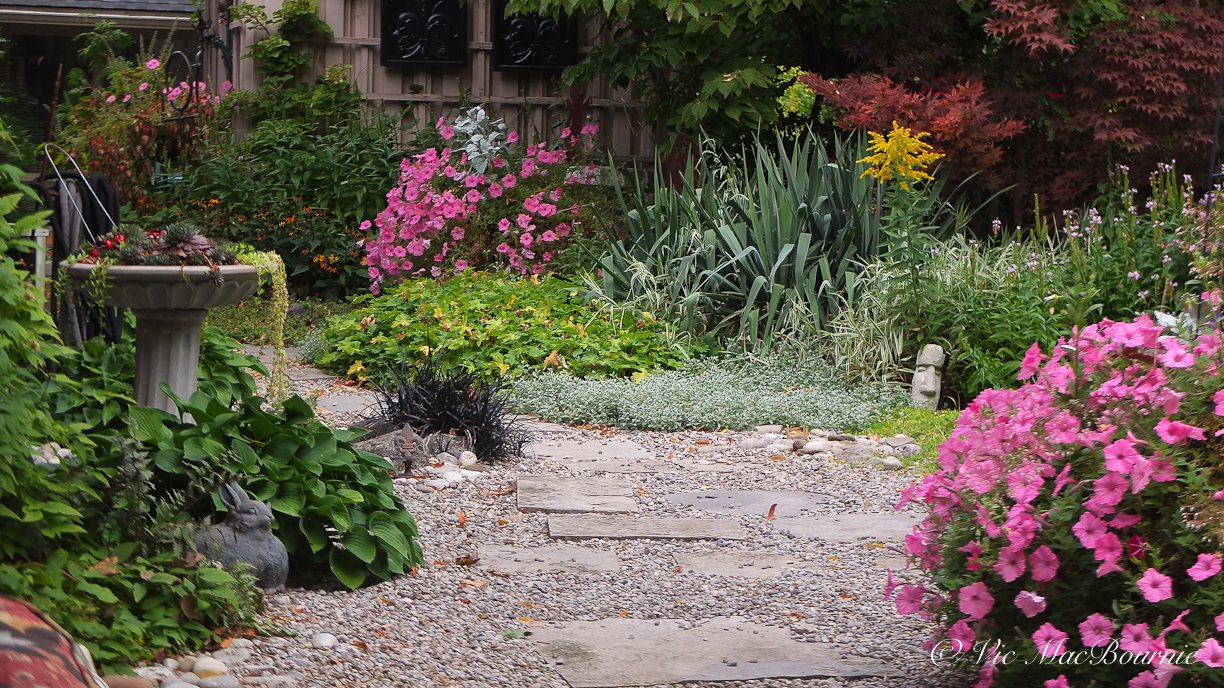
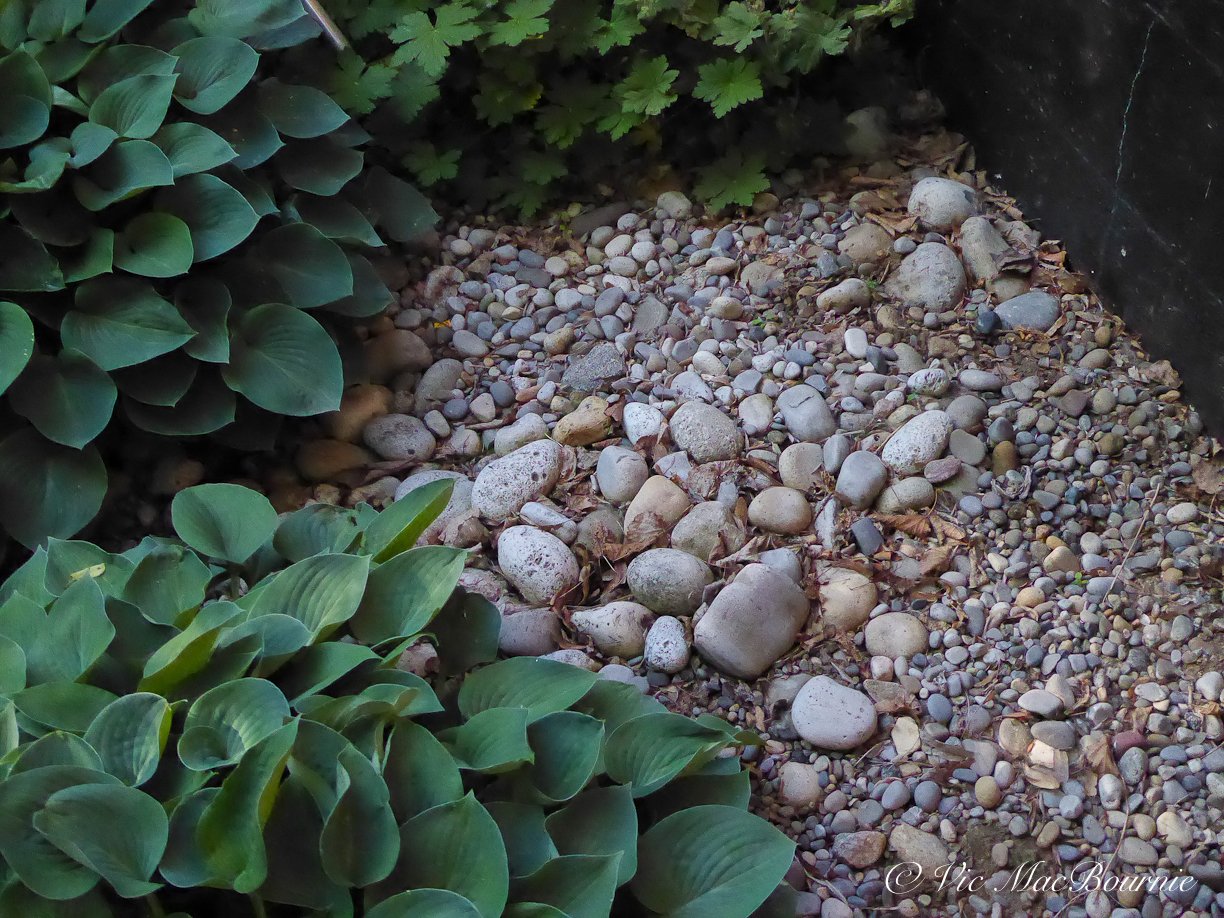
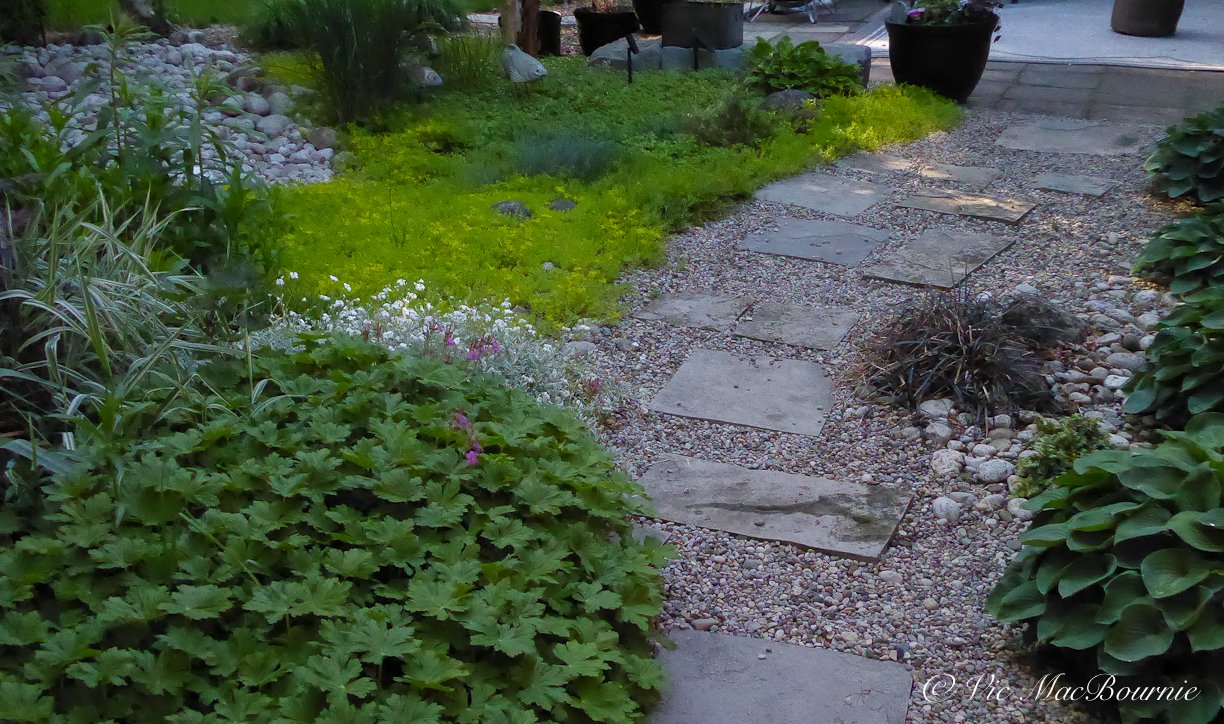
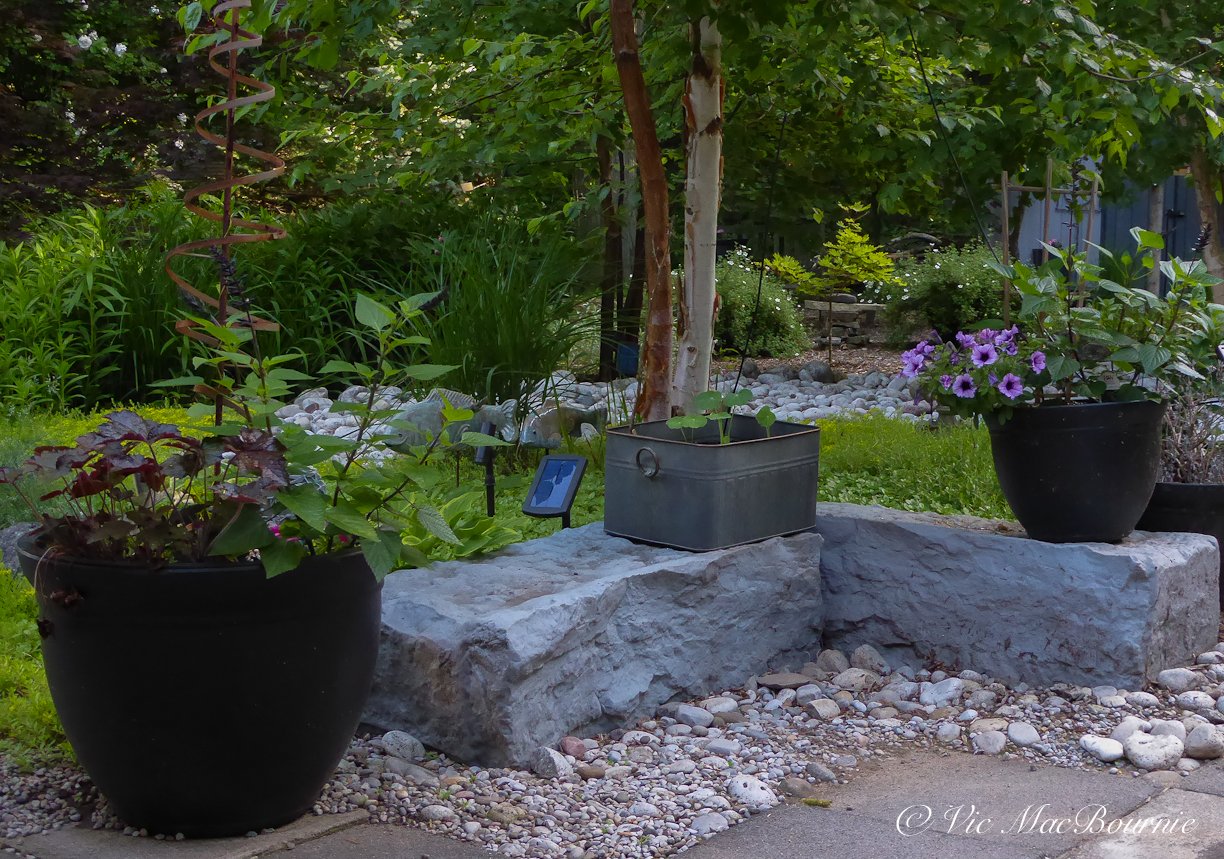
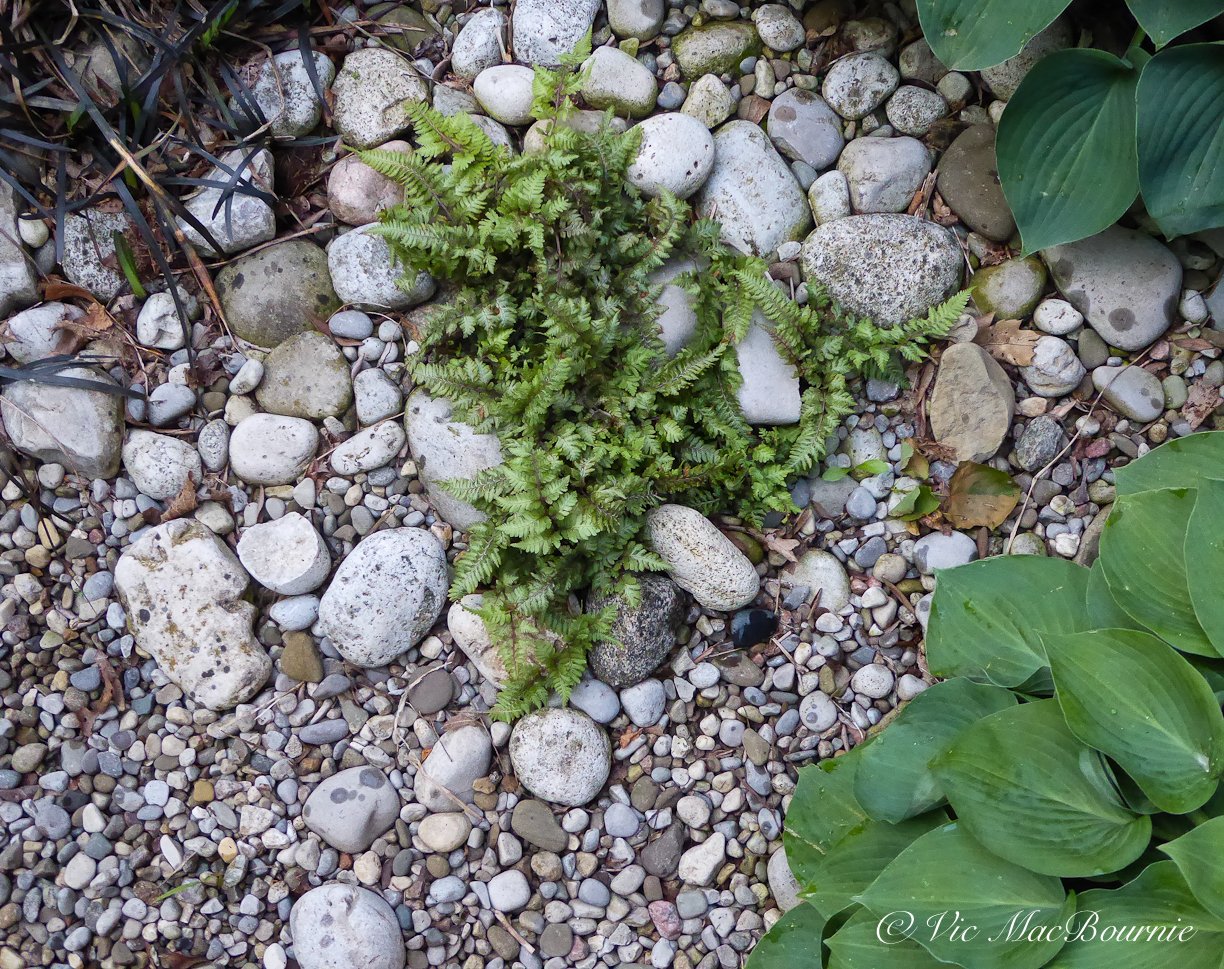
The simple answer: try to place the stones as they would appear in nature.
Not sure how they would appear in nature?
Learning from nature’s rock placement
Take an afternoon to visit a natural stream and study how Mother Nature places the rocks and stones with the larger ones anchoring the stream, smaller ones closer to the edge of the stream and pea gravel and or sand filling in the edges suggesting areas where the water has a gentler flow. Notice how, in nature, not all the river rock is the same size. There are boulders, large rocks and smaller rocks. Often there will be several sizes of river rock as well as pea gravel and sand.
(Looking for inspiration, check out my post on using local woodlands as inspiration for your garden.)
To create a realistic dry river bed, you don’t need to include all the sizes, but using only one size of river rock for the entire stream bed, is unlikely to look natural. When you are ordering from the rockery, include at least two sizes of river rock, some larger boulders and pea gravel.
The result will have a more natural look and allow you to transition down from the larger rocks to the smaller ones right down to the pea gravel on the edges of the stream filling in any holes between the larger rocks.
Placing larger boulders in the landscape
When it comes to placing large boulders, plan to do some digging.
In nature, boulders sit in the landscape, not on top of it. Even if a piece of a large boulder has broken off another boulder, it will in time be absorbed into the landscape through a combination of sinking into the soil through regular freezing and thawing, and soil building up around the boulder as leaves and forest detritus gets blown around the base of the boulder.
You may have thought you purchased a large boulder for your garden, but if I said you may have to bury a quarter to a half of the boulder underground for it to look right, it doesn’t take long to realize that boulder you purchased is not going to make as big a statement in the landscape as you might have thought. Most boulders need to be buried deep in the ground to look natural in the landscape. Boulders should look like they are rising out of the landscape.
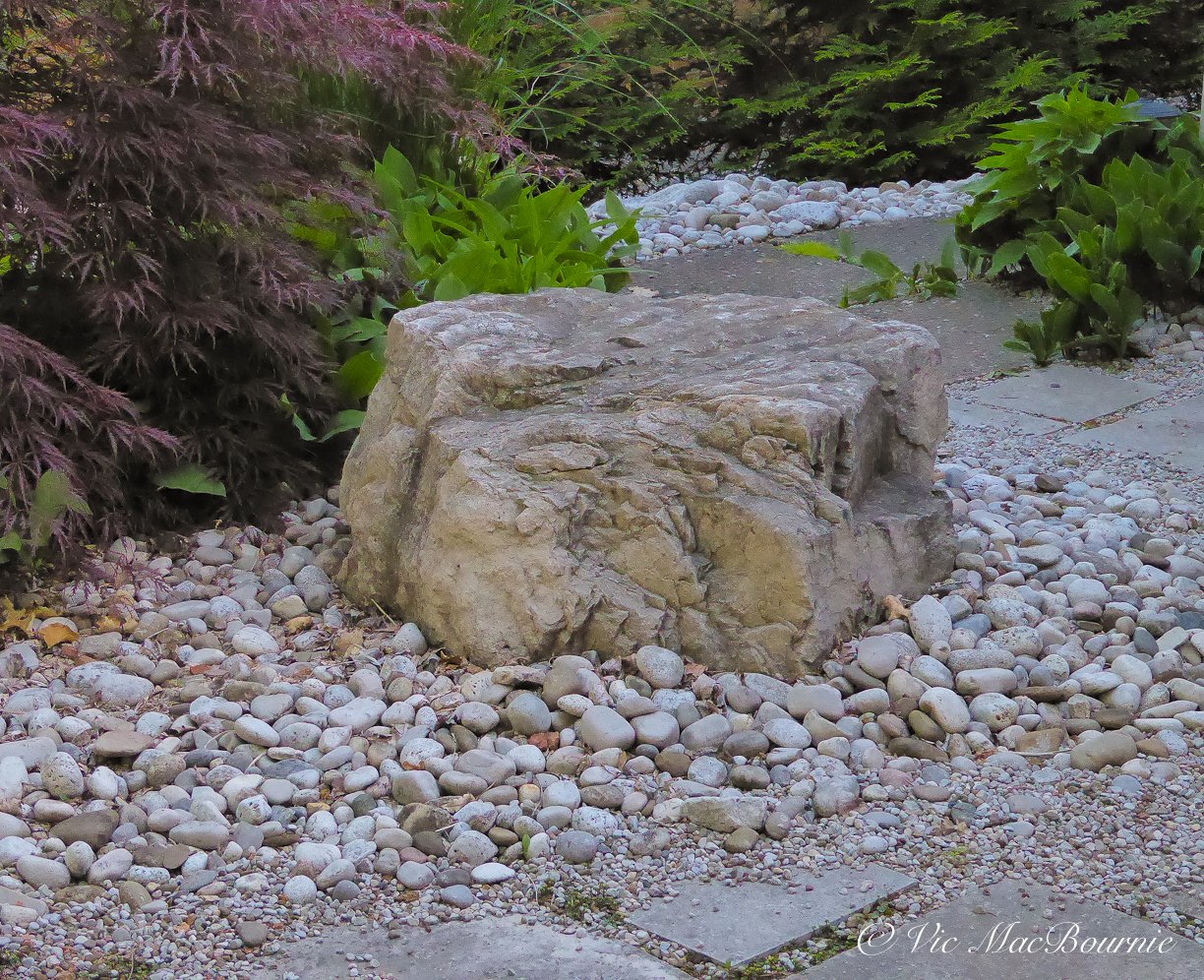




Depending on the boulder, you may get away with sinking it just a couple of inches into the ground. Just make sure that the boulder looks like it was always part of the landscape.
If you are placing boulders, it’s best to think odd numbers. Not unlike planting flowers in groups of 1-3-5, using the same way of thinking also works for placing rocks.
In our Japanese-inspired garden, I was lucky enough to scoop up a number of massive boulders from a neighbour's backyard project.
The trick was how to use them effectively. By using three of them in one grouping and a single one on the other side of the Japanese-inspired garden, I was able to keep the groupings to odd numbers. The boulder sitting by itself on the one side is teamed with large grasses and a weeping Japanese Maple providing visual balance between the two groups of boulders.
Staying with the Japanese-inspired garden and placement of the large boulders. In true Japanese style, a single boulder may be all that is in the garden surrounded by sand or fine pea gravel that is meticulously raked to give the appearance of waves surrounding the boulder.
In our design, I chose to use the boulders as if they represented mountains. Around the outside of the boulders I placed river rock in two sizes and then used pea gravel to fill in any holes and tie into the pea gravel throughout the garden and around the square-cut flagstone that take visitors through the garden into the backyard.
Using rocks along a pathway between houses
Our Japanese-inspired garden runs across the front of our home with a pathway leading through it to another pathway that leads into the backyard. By continuing the use of stone from the Japanese garden along the pathway leading to the back yard, the two spaces work together to create a natural flow.
Green Giant cedars separate our property from our neighbours creating privacy and a beautiful green backdrop that opens up at the end of the pathway into a view of our neighbour’s lovely yard and our woodland garden. (The three pictures above show how we installed the river rocks between the path and the Giant Green cedars using a combination of three sizes of river rocks and finishing with pea gravel. The pictures also show how much the cedars have grown in just four years.
On both sides of this pathway we have used stone as a mulch to tie in the back and front gardens. The same dry-river pathway is picked up across the back of the home helping to tie the entire garden from front to back.
Along the side pathway, several layers of black landscaping cloth were laid down to keep weeds at bay. This was followed up by using large river rocks (hand picked at the rockery) to form small rockfalls along the pathway just to add interest rather than having all the same size river rocks. Once the larger rocks were in place, we began adding wheelbarrows full of river rock followed by shovel fulls of pea gravel to fill in any holes between rocks and add more texture to the vignette. Closer to the trees’ roots, we laid down a thick layer of natural shredded cedar bark.
The result is a completely maintenance free landscape that looks natural and makes walking down the path a lovely experience.
Author Profile: Vic MacBournie is a former journalist and author/owner of Ferns & Feathers. He writes about his woodland wildlife garden that he has created over the past 25 years and shares his photography with readers.
Falling in love with the Olympus 45mm F1.8 and MCON P02
The Olympus 45mm F1.8 teamed with the MCON P02 takes an already outstanding lens and makes it significantly better.
How to maximize the Olympus 45mm F1.8 for macro with the P02
Fall is the perfect time to get out your camera and lenses and fall in love all over again, especially when it comes to macro or closeup photography. Combine the Olympus 45mm F1.8 with the Olympus P02 and it’s a love affair made in heaven.
That love affair may have roots in the wonderful colours of autumn, but it can just as easily extend to some of your finest cameras and lenses. The Olympus 45mm F1.8 is one of those lenses you’ll fall in love with over and over again.
I recently picked up a mint copy of the 45mm silver version for a fraction of its regular price and teamed it up with the magnificent MCON P02 to give me the ultimate walk around lens with impressive close focus capabilities.
This compact Olympus lens – now under the name OEM Systems – was first introduced to micro 4/3rd users in 2011. At that time, it was the fastest prime available on the micro 4/3 system.
Today, it is still easy to carry around, offers some of the sweetest bokeh of any lens, is very sharp and has fine, vivid colours.
It might have earned its reputation as a superb portrait lens, but it more than holds its own as an all-purpose lens, whether you are in your favourite woodlands, on the street or on vacation.
Slip the Olympus MCON P02 macro converter onto the front of the lens and you’ve got an impressive, fast, short telephoto and macro lens.
What better opportunity to run it through its paces than during the annual fall celebration of colour.
There’s lots to like about the Olympus 45mm lens
Sure, it’s a fast lens that creates tack sharp images even in low-light situations, but that’s just the beginning of what makes the lens a must-have. Focus is both fast and very precise. Build quality is very good, and its 116 grams (0.26 lb) makes the lens easy to carry around at all times.
Video shooters will appreciate the near silent autofocus capabilities of the lens, which benefits from its MSC (Movie-Still-Compatible) technology.
Check out the Olympus official site for the best deals of the day.
What’s not to like?
If you want to get picky, there is the rather expensive lens hood sold as an accessory and the fact that the lens’s minimum focus distance stretches out to almost 20 inches (19.69 to be exact) or 0.50 m for those of us using metric. The result is a magnification factor of only 0.11.
There’s not much we can do about the cost of the lens hood except keep our eye open for a good used one.
The lens’s poor close-focusing capabilities is an easy fix. Add the MCON P02 converter to the front of the lens and the 45mm opens up a new world to users. But more on that a little later.
Olympus 45mm F1.8 in the woodlands and in the fields
Lens specs have their place, but until we take the lens out into the field, it’s hard to really appreciate the quality and value of the lens.
So I took the lens out for a morning of early fall color on the roads around my home recently.
I have always prefered a short telephoto approach for most of my fall images. I find the telephoto helps to focus in on the intimate details rather than show the all encompassing view of a wide angle lens.
If you are looking to add a camera or lens to your arsenal, be sure to check out the huge offering from KEH Camera Exchange.
First impression of the Olympus 45mm
My first impressions of this lens were more than favourable.
Everything that has already been said about the lens proved true in the first few shots. Sharp even wide open, fast and effective focus, silent, great bokeh and lovely colour rendition.
And you don’t have to take my word for it.
Former Olympus ambassador and enthusiast Robin Wong states: “No matter what lenses I use on the street, I always fall back to this beautiful medium-telephoto focal length, and 45mm just fits my compositional vision almost perfectly.”
He goes on to say: “Being able to blur off the background is something I treasure, and the Olympus 45mm F1.8 does this very well, being a medium telephoto range as well as having a wide open aperture of F1.8. The rendering of the bokeh? Simply creamy and beautiful. Just what I needed to make some portrait shots “pop.”
Rob Trek, YouTuber and Olympus enthusiast, recommends photographers purchase the Olympus 45mm F1.8 as their first prime lens because it will give you “the best bang for the buck in terms of value…in terms of your creativity and your photography and the kinds of pictures you take.”
YouTuber Steven Heise says: “There are a lot of lenses that perform well, but then there are a small handful of lenses that come to the party ready to rock the house. This is one of those kinds of lenses.
“This is hands down one of the best budget portrait lenses you can buy for micro 4/3. When you take into consideration the image quality of this lens, the incredible sharpness, the color, the contrast and the quickness and accuracy of the autofocusing system, the answer just becomes abundantly clear.”
Peter Forsgard, a former Olympus ambassador based in Finland, describes the lens as “One of the best quality money ratio you can get on any M Zuiko lens. I think the 45mm is the one. It’s not very expensive, but the image quality is stunning.”
He calls it the “perfect lens for environmental portraits.”
Steve Huff, another Olympus enthusiast, had high praise for the lens in his review shortly after getting the lens in October 2011. He compared the 45mm F1.8 with the Olympus 12mm F/2 after declaring the 12mm the best micro 4/3 lens ever made. “After using this 45 1.8 for a few days I can say that this lens is equally as delicious. Yes, I said delicious! The IQ from this lens on the E-P3 is nothing short of astounding for the micro 4/3 format. Some of the best quality I have seen from any M4/3 camera/lens combo.”
Here are a few impressions of the lens from Olympus users gathered from forums around the internet.
• “The images are tack sharp, the colours warm and flattering, the focus is both quiet and fast, and the “Bokeh” which all the Olympus haters go on about is feathery soft.”
• “Perfect for portraits, it’s also great for giving a different perspective on landscapes and cityscapes…. Sharpness is the outstanding feature of this lens though. You notice it from the first shot you take. It makes you feel like a pro. Contrast and colour are so good that you’ll barely need to adjust your photos in Photoshop or the like…. The bottom line is that this is a near perfect and therefore essential lens for a bargain price.”
I think it’s fair to say that in all my research into the 45mm F1.8, I struggled to find anyone critical of the lens.
Of course there is a reason for all this praise, and it stems from the fact that the lens is among the best in its class.
The short telephoto is ideal for everyday garden and nature photography. It’s probably not long enough to capture most wildlife including birds, small mammals and insects, especially since its minimum focus distance leaves a little to be desired.
But that’s where the Olympus MCON P02 macro converter steps into action.
Close-up photography with the 45mm F1.8
Very few of us really need true macro, meaning 1:1 magnification. What most of us focus on is better described as close-up photography, which is magnification less than 1:1 or lifesize.
By adding the Olympus MCON P02 filter to the Olympus 45mm F1.8 you get an outstanding close-focus performer that benefits from having a lovely creamy background.
The high-quality filter that screws on to the front of the lens is constructed in 1 group with 2 elements and weighs a mere 52g. It comes with quality front and rear lens caps and a step-up ring.
Use it wide open to explore creative selective focus effects like the purple Beautyberries below.
Or, use the lens’s inherent sharpness to create exquisitely finely detailed images like the Northern Sea Oat grasses above.
For more on close-up photography check out my post here.
Why the MCON P02 close-focusing lens instead of a true macro lens?
There are many reasons to go with the P02 over a true macro lens. First, there is the cost savings. You should be able to pick up a P02 for less than $100 and considerably less than that if you are lucky enough to find one on the used market.
In comparison, a true macro lens will set you back 5X the cost of the P02 and add another lens to your camera bag. There is something freeing about using a single sweet little lens that can double as an exquisite macro lens.
To screw the filter to the front of the lens, a ring first needs to be removed from the front of the lens.
When used with the 45mm F1.8, the lens’s closest focusing distance is almost cut in half to approximately 24cm. The image below from the Olympus website shows the difference between the close focus capabilities of the lens with and without the P02.
For more on the MCON P02, check out the official Olympus site.
MCON P02: A versatile addition in the palm of your hand
Don’t think for a minute that the P02 is made only for the 45mm. This little add-on filter is a versatile addition to your camera bag and fits nicely on the 14-42mm kit zoom as well as a number of other Olympus lenses. On the popular ED 14-42 F3.5-5.6 EZ the add-on lens turns the lens into a semi-macro lens with the shortest shooting distance of 18cm and the maximum image magnification of 0.38x (35mm equivalent: 0.76x). It comes with step-up rings to attach it to a 37mm filter diameter lens.
For a complete list, see chart below.
M.ZUIKO DIGITAL ED 14-42mm F3.5-5.6 EZ
M.ZUIKO DIGITAL 14-42mm F3.5-5.6II
M.ZUIKO DIGITAL 14-42mm F3.5-5.6IIR
M.ZUIKO DIGITAL 45mm F1.8
Just add a step-up ring for use on the following lensesM.ZUIKO DIGITAL 25mm F1.8
M.ZUIKO DIGITAL 17mm F1.8
M.ZUIKO DIGITAL ED 12mm F2.0
Front yard ideas: Embrace your garden style
Create a front garden that pleases you rather than your neighbours.
Be bold not boring in your front garden
Front yards don’t have to be boring, but fear of being different often results in front yards conforming to every other yard on the street.
And that almost always leads to a street full of boring front yards. Typically, a sea of grass, small foundation garden beds and maybe a small single tree in the middle of the yard.
It’s much better to be bold, make a statement and create a front landscape that reflects a style that makes YOU happy rather than the neighbours.
In our rather small front yard, we have worked to create a very casual woodland garden in the main area leading with a Japanese-inspired woodland garden in another part of the front yard.
In this “small front garden” all grass has been removed. Instead, there is a total of nine trees, a variety of ground covers including ferns, pachysandra, epimediums, moss, creeping phlox, foamflower and bloodroot, just to name a few. It also has several drifts of black-eyed-susans and ornamental grasses big and small, as well as many more native plants, several massive boulders, a dry river bed, two bird baths and two very prominent yellow Adirondack chairs on a small flagstone patio.
Yes, that’s a lot to pack into a smallish front yard, but it’s an example of what is possible once you remove the grass and open up your vision to a front yard that does not conform to what most homeowners consider acceptable. My immediate neighbour also removed all of their front grass and created an oasis of native, non-native plants, trees and shrubs that, together, create an exceptional habitat for a host of wildlife from mammals to reptiles, from a variety of birds to pollinators too numerous to name here.
Unfortunately, we are the minority on a street of orphaned trees growing in a sea of never ending lawns and boring foundation plantings. And, this is in an area surrounded by conservation lands and massive natural forests.
Time to rethink our front landscapes
I recognize, however, that our front woodland garden landscape design might not be for everyone. Maybe a less aggressive approach that includes some grass and sweeping gardens with a variety of tidy perennials, might suit you better. Maybe a more contemporary garden made up primarily of evergreens is something that would appeal to you more.
To enhance the overall appeal of your front yard, here are five landscaping ideas that will help transform your outdoor space into a more welcoming one.
Create a Welcoming Pathway: A well-designed pathway leading to your front door not only adds visual interest but also guides visitors to your home. Consider using natural stone pavers or colourful tiles to create a unique and inviting pathway.
Incorporate Colourful Flower Beds: Add vibrancy and charm to your front yard by planting colourful flower beds. Choose a variety of flowers that bloom at different times of the year to ensure year-round beauty. Be sure to incorporate native plants to attract local wildlife and promote biodiversity.
Install Outdoor Lighting: Softly illuminate your front yard with strategically placed outdoor lighting. Not only does it enhance the safety and security of your home, but it also adds a warm and inviting ambiance. Use path lights to highlight the pathway and accent lights to showcase architectural features or focal points. Don’t use bright lights that disrupt the lives of animals and insects that depend on darkness to survive.
Add a Water Feature: Incorporating a water feature, such as a small fountain or a pond, can create a soothing and tranquil atmosphere in your front yard. The sound of running water adds a sense of serenity and can mask unwanted noise from the street.
Utilize Vertical Space: Make the most of limited space by utilizing vertical elements. Install trellises or arbors and grow climbing plants. This not only adds visual interest but also creates privacy and shade.
This professional garden design (below) created for a Pacific Northwest garden, (see full story here) is a perfect example of what can be done when a bold approach is taken.
A landscape design or a middle-size front garden shows intensive planting including several trees, shrubs and plantings. Notice the lack of grass in the plan.
Try designing around a focal point in the garden
Once you embrace your style with courage and commitment, try to settle on a focal point in your garden.
The focus of our front yard are actually the two very yellow Adirondack chairs that, more than anything, make a statement that this is meant to be a casual place – almost our cottage in the city.
I like to think that a woodland garden, by its very nature, is a casual unpretentious landscape that conveys a message that the people who live here care about the environment, wildlife and native plants more than impressing others, including the neighbours.
More on the Environmental Benefits of a Woodland Garden.
A dry river bed and creeping phlox combine for a colourful spring display.
A Natural Approach
Allowing the creeping phlox to flow over the large boulders creates a natural feel in the front garden rather than a traditional over-manicured front garden.
It is also a front yard that is not wild and out-of-control and possibly seen as an eyesore on a street of very, very traditional front landscapes.
Our front garden is also in constant change – from the native plants in the main garden, to the annuals that fill our two window boxes.
Birds make nests in the trees, visit the bird baths on a regular basis and devour the fruit of our native serviceberry tree in early summer. Deer visit the garden to sample the plants and even the local foxes often use the area to hunt.
Our front garden in late fall showing the Japanese-inspired garden with large boulders on the left, together with the middle canopy Japanese maples, grasses black-eyed-susans and cottage-style adirondack chairs.
It may not, however, be a front yard that appeals to everyone.
So, let’s take a look at a variety of front landscapes that lie between our grassless woodland garden and a traditional front yard.
More front yard ideas: The tiny front yard
Whether it’s a cottage garden, a contemporary garden or something in between, the important thing is to embrace your style and move forward.
If you are short of space, embrace that vibe.
• Remove the grass
• Use paving or mulch to cover the entire space
• Consider using containers to grow your favourite plants
• Create one centre of interest – a bistro table and two small chairs or a small water fountain for the birds.
• Don’t be afraid to use at least a few large-leaved plants like hosta, elephant ears or a large fern to create visual interest.
• Try to keep the space simple and use natural elements as much as possible.
• The goal is not to make the garden pretty by using too much colour or unnatural materials. Bright white quartz stone rarely looks right in a garden, but pea gravel or river rock can work well. Better yet, large moss-covered boulders can be a perfect statement piece for even a tiny garden.
One of the most common situations I am asked about is what to do with a very small inner-city front garden with an existing mature tree where grass struggles to grow. The key to success here and in most difficult situations is to work with, rather than against, what nature is offering you.
In a tiny garden
My suggestion: Remove all the grass. Bring in some large boulders (not mid-size rocks) and bury them in the landscape. Please don’t let them lay on top of the soil. Boulders need to be dug in so that at least one-third is under the ground. This gives the impression that the boulders are rising out of the ground rather than placed on top of it.
Add some native ground covers, or mulch the area heavily with a pea gravel or bark mulch. Include a simple flagstone pathway, a bird bath – maybe one carved out of one of the boulders – and a small tree or large multi-stemmed shrub (maybe a serviceberry) that is trimmed up like a small multi-stemmed tree. The bird bath could be replaced over time with a bubbling rock or natural looking fountain. The moving water will help attract more birds and other wildlife.
Larger front yard covered in turf grass
A more typical surburban front yard offers more choice and more challenges.
Removing all the grass might not be an option or even a desired result.
The question to ask yourself is whether it is worth your time and effort to care for the grass, including lugging the lawn mower and other instruments of destruction from the back yard to the front yard on a weekly basis. If you plan to remove the grass, it might be best to do it over the course of several years rather than all at once.
By creating ever expanding garden islands in your existing turf, you can slowly migrate away from turf entirely, or just leave strips of grass that are easily mown with a single pass.
My suggestion: Consider a five year plan where most of the grass is slowly replaced by large garden islands. Individual islands can serve different purposes and allow you to experiment with different plants and even styles.
One island could be set up to attract birds with fruiting shrubs and an under-story tree like a Flowering Dogwood. Add some native purple coneflowers and black-eyed-susans to provide late-summer food sources for birds. Supplement these sources with annual sunflowers to add some whimsy and provide more food and habitat for birds. A bird bath and small bird feeder is a nice addition.
Another island might focus on plants that thrive in acidic soil. Once you have amended the soil to acidify it, you can begin to plant hydrangeas, blueberries, and other acid-loving native woodland plants that can be more easily grown together rather than trying to combine them with non-acid loving plants. Mulch the acidified soil with pine needles to enhance the soil and keep the plants healthy.
In another island you may want to turn your attention to edibles. Plant your favourite herbs, one or two tomato plants, your favourite garden vegetables and maybe a favourite fruiting tree like a peach or even an orange or lemon tree if you are in the warmer growing zones.
If you like the cottage/meadow look, a garden island allows you to create that look in a smaller scale rather than trying to manage a massive meadow garden that can easily get out of control. Grow all your favourite plants, but grow them in a manageable-sized garden where you can focus your energy into creating a wild but still-in-control cottage garden. More on meadow gardening here: Create a mini meadow; The making of a large meadow
The above collage (bottom right) shows a large garden island made entirely of evergreens. This is perfect to create winter interest as well as provide year round habitat for wildlife.
In conclusion: A front garden for your enjoyment
In the end, it’s important to first create a front garden that pleases you. If you can, keep in mind that your garden should not look so out of place in the neighbourhood that you are going to draw too much negative attention. That can be difficult if you are in a very traditionally minded neighbourhood. In that case it might be wise to go all out in the backyard, while you take a slightly tamer approach in the front yard.
I have read about so many homeowners trying to do the right thing only to be forced to cut down their gardens because neighbours or home owner’s associations choose to continue living in the 1950s.
If you find yourself in this situation, create a garden that pleases you most but maintains a enough of a traditional garden appearance that it does not attract too much attention.
If you are in a more progressive area, or in one that is far from your neighbours, have some fun. Go bold and create a garden for you, your local wildlife and the natural environment.
You won’t regret it.
How to get the Moody Green look in your images
The moody green theme has become extremely popular in today’s social media apps. Creating that vision in your own garden images begins by building a Lightroom preset that helps you create the images.
Original image
The original image shows the typical greens and colours in the monarch.
Dark-Green look is perfect for garden photography
Garden photography offers an opportunity to capture beautiful images as well as give your cameras, lenses and accessories a real workout. The problem many photographers have is coming up with new ideas to take their garden photography to another level.
Creating high-key painterly images with your garden photographs (see images below) is certainly one way to add an artistic impression to your photography, but so too is doing the opposite and going dark and moody. (see above image)
In this post, we are going to explore tips on how to create this moody effect with our existing garden images, including revealing the Lightroom settings I use to create these dark green, moody images.
The camera you use to achieve these images can be as simple as your phone’s camera or a favourite point-and-shoot. For tips and reviews on my favourite cameras for garden photography, check out the following posts: Pentax K5, FujiX10, Pentax Q, Canon Powershot Elph, Panasonic Lumix, Olympus E-10 or Olympus PEN series of cameras.
Photography programs, however, such as Lightroom and Photoshop, even free programs like Gimp and Krita become integral to creating these memorable garden images.
Late fall and winter is also the ideal time to cozy up to your computer and experiment with some of your existing images.
I often use these digital post processing programs to create painterly images of my favourite flower and bird images. For more on how I create these images, check out my posts here: Creating Painterly Images from photographs, Digital images of hummingbirds.
This high-key painterly image is an example of how you can turn your favourite photographs into beautiful painterly images using programs such as Lightroom and Photoshop.
This painterly image is an example of what you can achieve using post processing on one of your favourite photographs.
Most of these processes involve creating high-key images of birds in winter or flower images. These results can be beautiful in their own right, but a growing trend in photography is creating a dark and moody feel in the images that often revolves around the greens contained in the image. This involves converting your vibrant spring and summer greens into dark, moody greyed-down greens while maintaining the other colours in the image.
I don’t consider myself an expert in post processing images, but I recognize that being able to create memorable images – whether they are fall scenes, portraits or garden images – requires some familiarization with these photography post processing computer programs.
Mastering basic techniques can transform your images from standard photographs into impressive works of art or simply bring out the best in your photography.
Below are just a small sampling of my Moody Green images I created using my Lightroom preset.
Notice how the moody-green preset transforms the greens in the image while leaving the magenta colours in the obedient plants.
Create your own Moody-Green preset in Lightroom
So, how do we transform these images from average to memorable moody green garden photographs?
While similar effects can be created in Photoshop and other photo post processing programs, I simply use an older version of Lightroom to create the effect.
Lightroom presets are usually just a good starting point
Anyone who uses Lightroom presets knows that they are usually nothing more than a very good starting point.
Instead, you’ll likely need to tweak each individual image to get the desired results. Sometimes that involves decreasing the exposure, raising the blacks, playing with the shadow sliders or working with the HSL (hue, saturation and luminence) sliders to perfect the colours in the image.
The main focus of the dark-green moody look is to grey-down or add more black to the greens in the image. This is done by desaturating the greens while leaving most of the other colours intact to some degree.
Many photographers sell their favourite presets
You can purchase a moody-green preset from many photographers who offer them for sale on-line usually on their personal websites. All of these presets would likely give you slightly different, but similar results. By tweaking your finished presets, you can create more presets with slightly different looks that might work better with another type of image.
Once the original preset is tweaked, ensure that you save it under a different name. I have created a number of presets to give me different results from cinematic effects to high-key pastel images.
Rather than try to sell my moody green preset, I offer it here for readers to experiment and create on their own.
Here are my preset settings for Moody Green images
The following are my settings to create moody-green images with Lightroom 4. More up-to-date versions of Lightroom will give you finer control of the sliders, but the end result should be similar.
Feel free to copy these levels to create your own moody-green preset. Remember, most images will still need tweaking to achieve your desired results. Also, be warned that some images will not work at all with this and other presets.
Creating presets in Lightroom
By following the above settings, you should be able to create the moody look that is so popular on social media these days.
Once you have created an image you are satisfied with, simply save the Lightroom preset under Develop/new preset.
By going through your existing images and picking out photographs that you think might work with the Moody- Green theme, you can test it out with the click of your mouse.






